Venice Architecture Biennale 2025: the ultimate guide
The Venice Architecture Biennale 2025 is now open to the public, and our ultimate guide for the what, who and where of the biannual festival is here to help you navigate the Italian island city and its rich exhibition offerings

The Venice Architecture Biennale 2025 is open; the festival's official launch to the public marks the culmination of months of excitement in the industry's global circles. This year's appointed curator, architect Carlo Ratti, and the team behind the world's largest architecture festival have been working non-stop towards this moment, having allowed only hints till now as to what to expect.
'The role of the biennale is to look at different challenges. Lesley's was a very important one,' said Ratti at the first global press conference around the event, acknowledging the 2023 Venice Architecture Biennale's influential theme by 2024 RIBA Gold Medal winner Lesley Lokko – and hinting at the future and the next steps in the grand exhibition's global explorations.
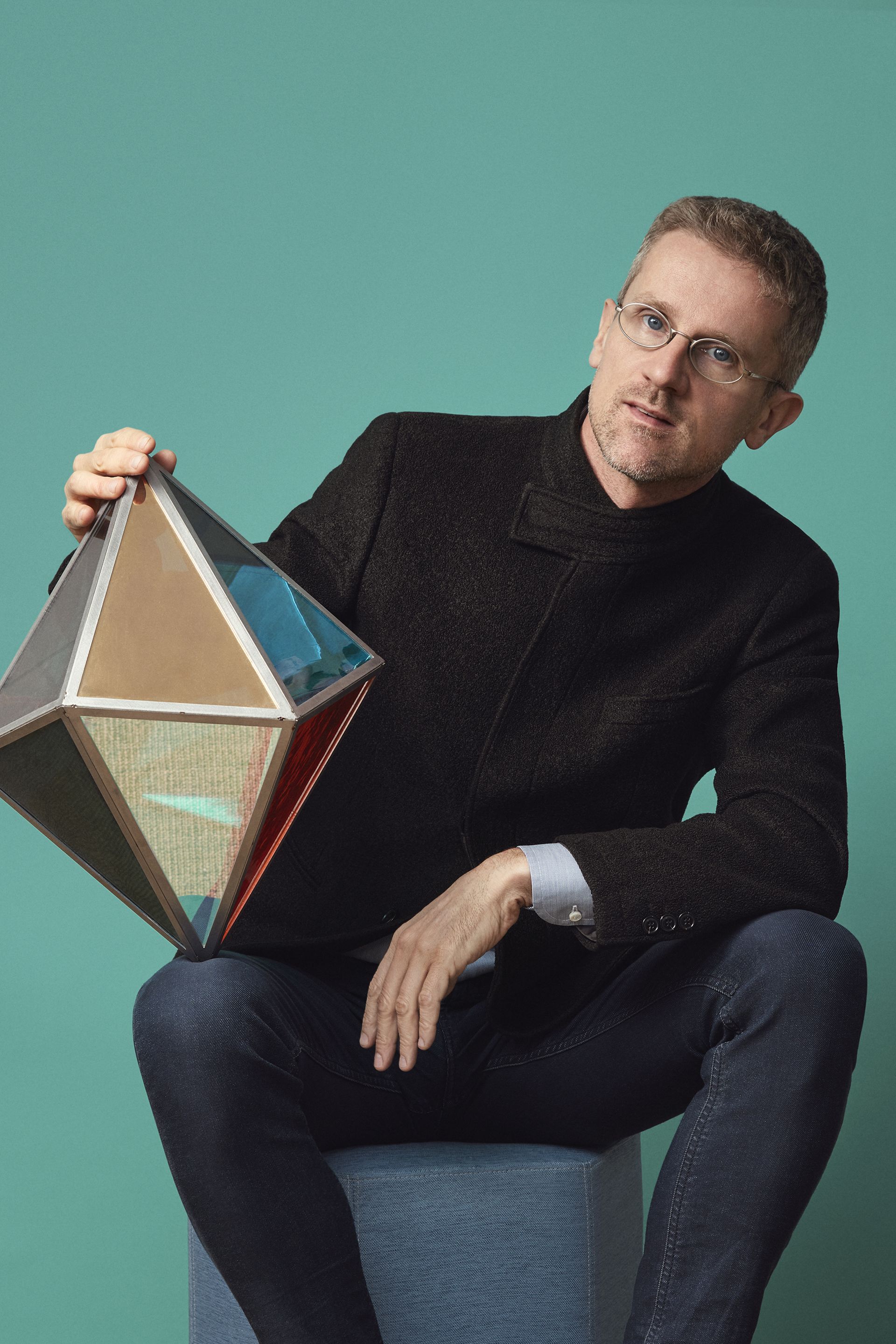
Venice Architecture Biennale 2025 curator Carlo Ratti
Venice Architecture Biennale 2025 overall theme: ‘Intelligens’
La Biennale di Venezia 2025 focuses on the topic of 'Intelligens: Natural. Artificial. Collective.' Ratti said of his theme: 'The title of the International Architecture Exhibition is usually announced both in English and in Italian. In 2025, it will be condensed into a single word for both languages via the common Latin precedent: intelligens. The title “Intelligens” is linked to the modern term “intelligence”, but it also evokes a wider set of associated meanings. In fact, the final syllable “gens” is Latin for “people”. A new, fictional root emerges, suggesting a future of intelligence that is inclusive, multiple, and imaginative beyond today’s limiting focus on AI.'
Exploring his topic through four sections, Ratti looks at four respective sub-themes: Transdisciplinarity, Living Lab, Space For Ideas, and Circularity Protocol. They are the key pillars in the way the main show is conceived. Speaking to us in an interview earlier in the year, he revealed that the natural world, its wisdom and engineering are key influences in his work - and bridging natural and artificial is an important element that is missing in architecture today. 'People talk a lot about biomimicry, which is when you're copying nature, but here, it's more than copying nature per se. It is about copying the logic of nature,' he said.
Collaboration across disciplines and fields of human knowledge is also highly important and an area Ratti has tapped into in his show. He explained: 'I think we need to work more collaboratively. I always try to have teams of different disciplines working together. I call this approach the 'choral' architect.'
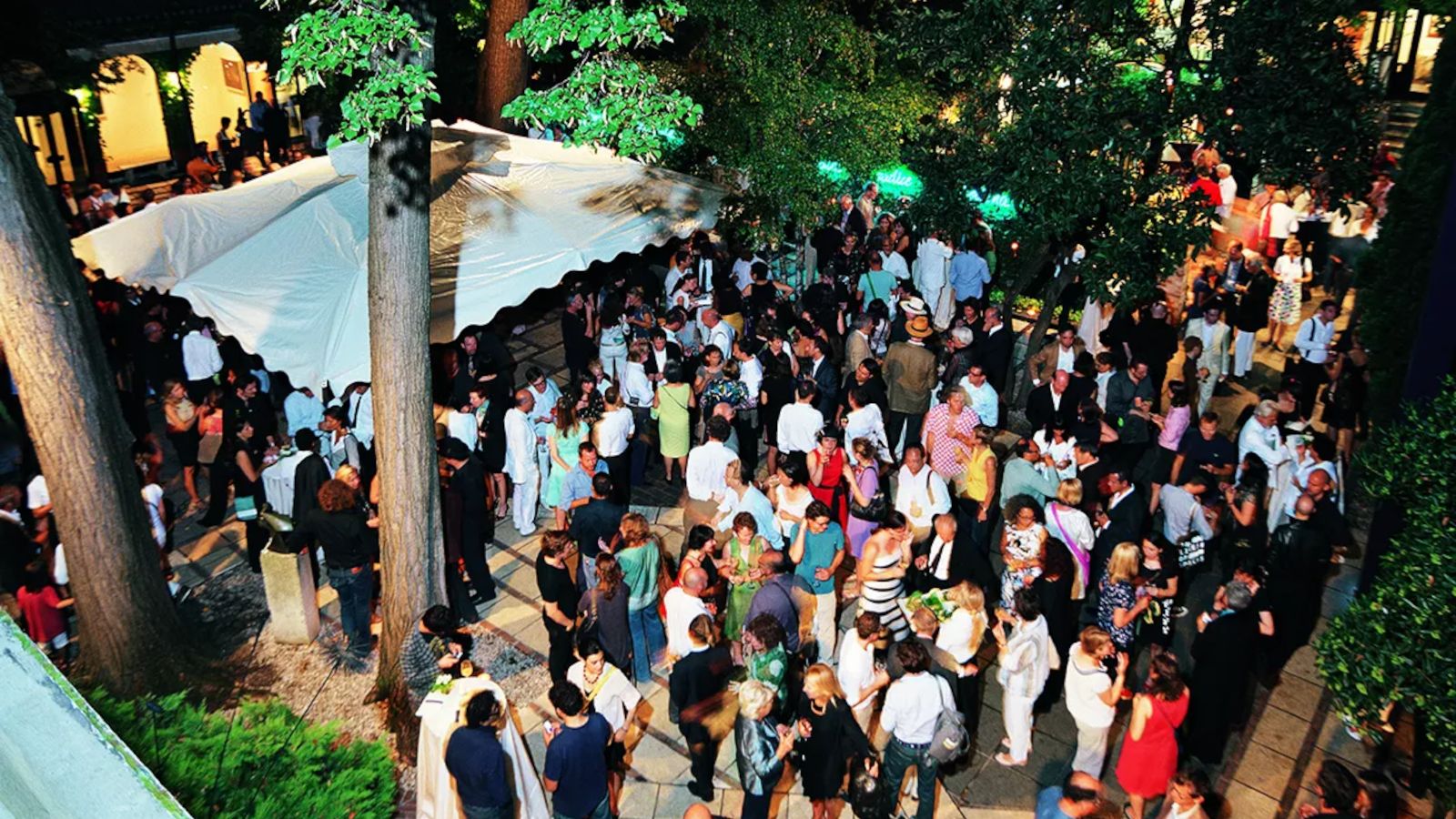
Crowd of people at a past Venice Biennale: In preparation for the Venice Architecture Biennale 2025, we revisit the US Pavilion's celebrations at the Peggy Guggenheim Collection museum during the 2008 festival, as reported in Wallpaper's December issue of the same year
Venice Architecture Biennale 2025: main show
'We would like the biennale to be a dynamic lab,' said Ratti at the biennale press conference, outlining his key goals, themes and participants of the main show. Bringing together diverse teams and pairing seemingly disparate disciplines help inspire unexpected and useful results, according to the Venice Architecture Biennale 2025 curator. 'Adaptation depends on inclusivity and collaboration and this is what I am experimenting with here,' he continued.
Case studies exhibited and project teams span the globe - even reaching one examining outer space. Climate change and sustainable architecture action will feature prominently in the various narrative threads. AI also makes an appearance, as part of the main show is a dialogue between creatives and artificial intelligence. The show is packed with displays - almost too many to navigate in one go, so a second visit might be in order. There is a whopping 750 participants and over 300 projects in the Arsenale’s vast halls, spilling out to its surrounding grounds and gardens. The Giardini’s Central Pavilion, which, until now, also played host to a good part of the main show, is closed this year for restoration.
Wallpaper* Newsletter
Receive our daily digest of inspiration, escapism and design stories from around the world direct to your inbox.

Circularity and openness
Last year, Ratti also launched a circular economy manifesto for this Venice Architecture Biennale - inviting participants to tackle core challenges in exhibition design, in order to produce a truly circular festival. This goal is outlined in the manifesto, which was developed with guidance from Arup and input from the Ellen MacArthur Foundation. The team wrote at the time: 'Our goal is to demonstrate that architecture and the built environment can coexist harmoniously with our planet, by eliminating waste, circulating materials and regenerating natural systems. We commit to creating pavilions and spaces that are not just temporary showcases but offer examples of bold circular thinking and create lasting legacies.'
With all this in mind, the curator put an open call for proposals, for the first time ever in the festival's long history, 'no matter how audacious,' from both architects and non-architects. In fact, trans-disciplinarity seems to be the name of the game, with Ratti inviting the global community of practitioners, scientists, scholars, activists, and others to help him create a diverse, creative biennale. 'It was both thrilling and daunting. We got flooded with thousands of emails but at the same time, we were able to find voices in parts of the planet who we would have never discovered without this open call,' Ratti says.
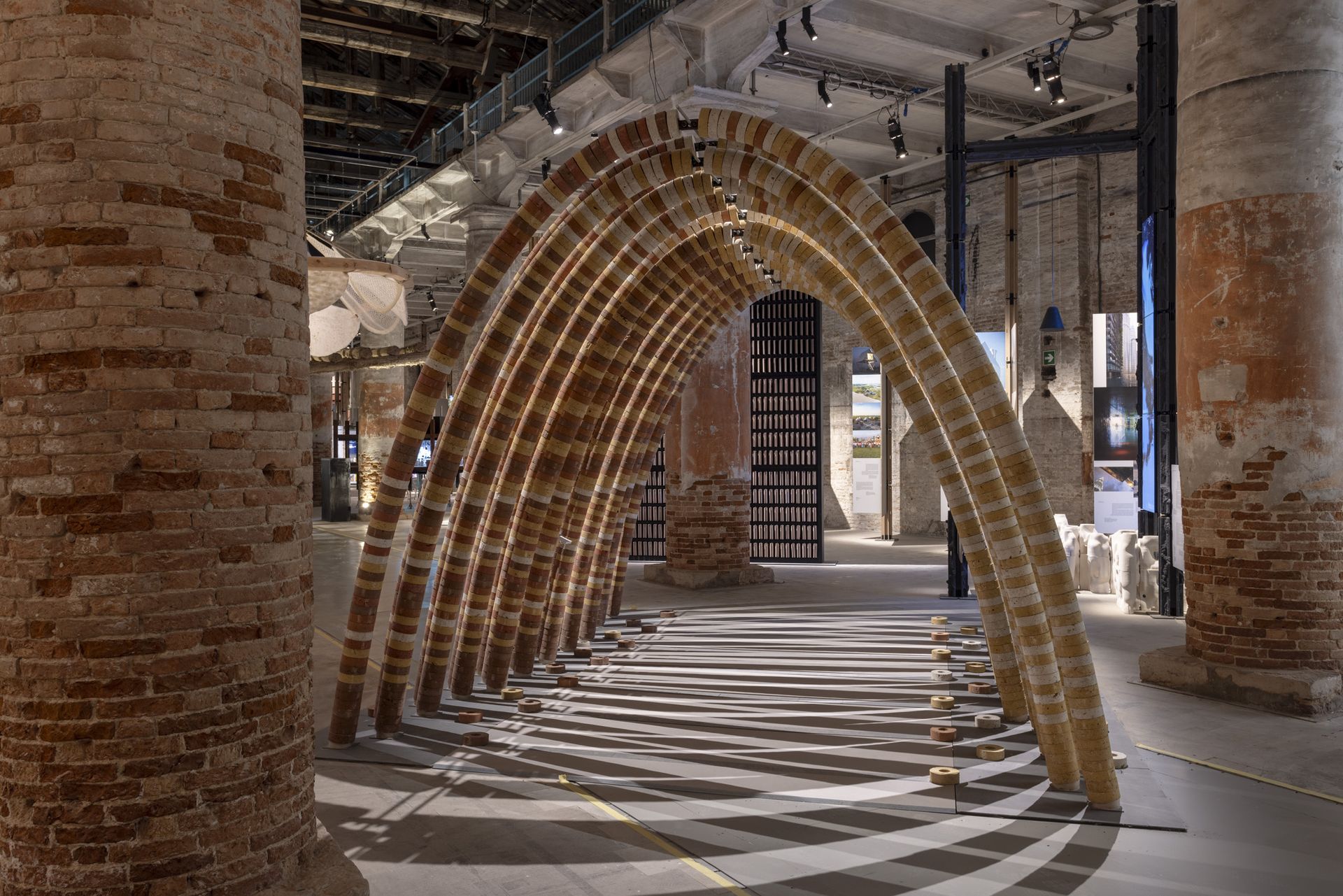
Main show participants: Arsenale and beyond
The Venice Architecture Biennale 2025 showcases contributions that cast a net far and wide. There are architects and engineers, mathematicians and climate scientists, philosophers and artists, chefs and coders, writers and woodcarvers, farmers and fashion designers, and many more.
The exhibitors include names such as Lina Ghotmeh Architecture, Liam Young, Tosin Oshinowo, Bjarke Ingels Group, Winy Maas, Aaron Betsky, Diller Scofidio + Renfro, MAD Architects, Philip Youan, Foster + Partners (who collaborated with Porsche), Boonserm Premthada, Olalekan Jeyifous, Matteo Thun & Partners, Alejandro Aravena, EcoLogicStudio, Counterspace/Sumayya Vally, Studio Zhu Pei, Marina Tabassum Architects, Architectural Association/Ingrid Schroeder, 3XN GXN and CITA, Material Cultures, Studio Gang, Transsolar, Patricia Urquiola, and Mass Design Group.
Occupying sites outside the traditional grounds, the show aims to engage creatively with the entire city. 'With the venue of the Central Pavilion under renovation in 2025, Venice will not just host the Biennale Architettura—it will become a living laboratory. The city itself – one of the most imperilled on Earth in the face of a changing climate—will serve as the backdrop for a new kind of Exhibition, where installations, prototypes, and experiments are scattered across the Giardini, the Arsenale and other neighbourhoods,' Ratti explains.
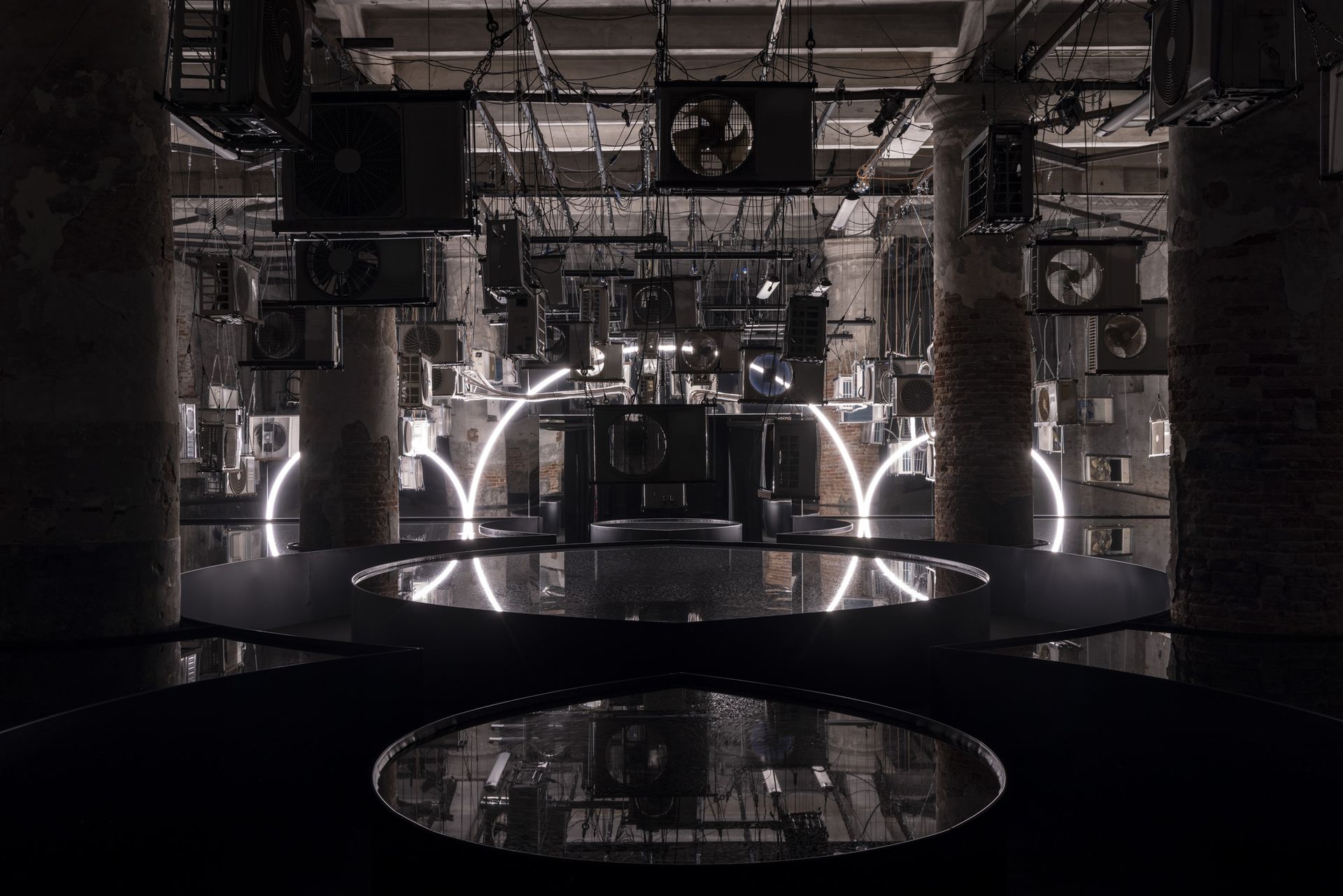
'Elephant Chapel' by Boonserm Premthada
Special Projects at the Biennale
Two main special projects accompany the main show and national participations. One is titled Margherissima and is exhibited inside the Austrian armoury (Polveriera austriaca), Forte Marghera in Mestre. It is a scheme focusing on its wider area and contributors include The Architectural Association (AA) and Nigel Coates, along with Michael Kevern, Guan Lee, John Maybury and Jan Bunge. The collaborative project, which was realised by AA students, imagines the transformation of this part of Venice's industrial hinterland into a city of the future, taking into account concerns around sustainability. It is set to be presented through a walk-through model. 'Could Marghera be a beacon for cities around the world, especially those in danger of being consumed by their own success?' asks Coates.
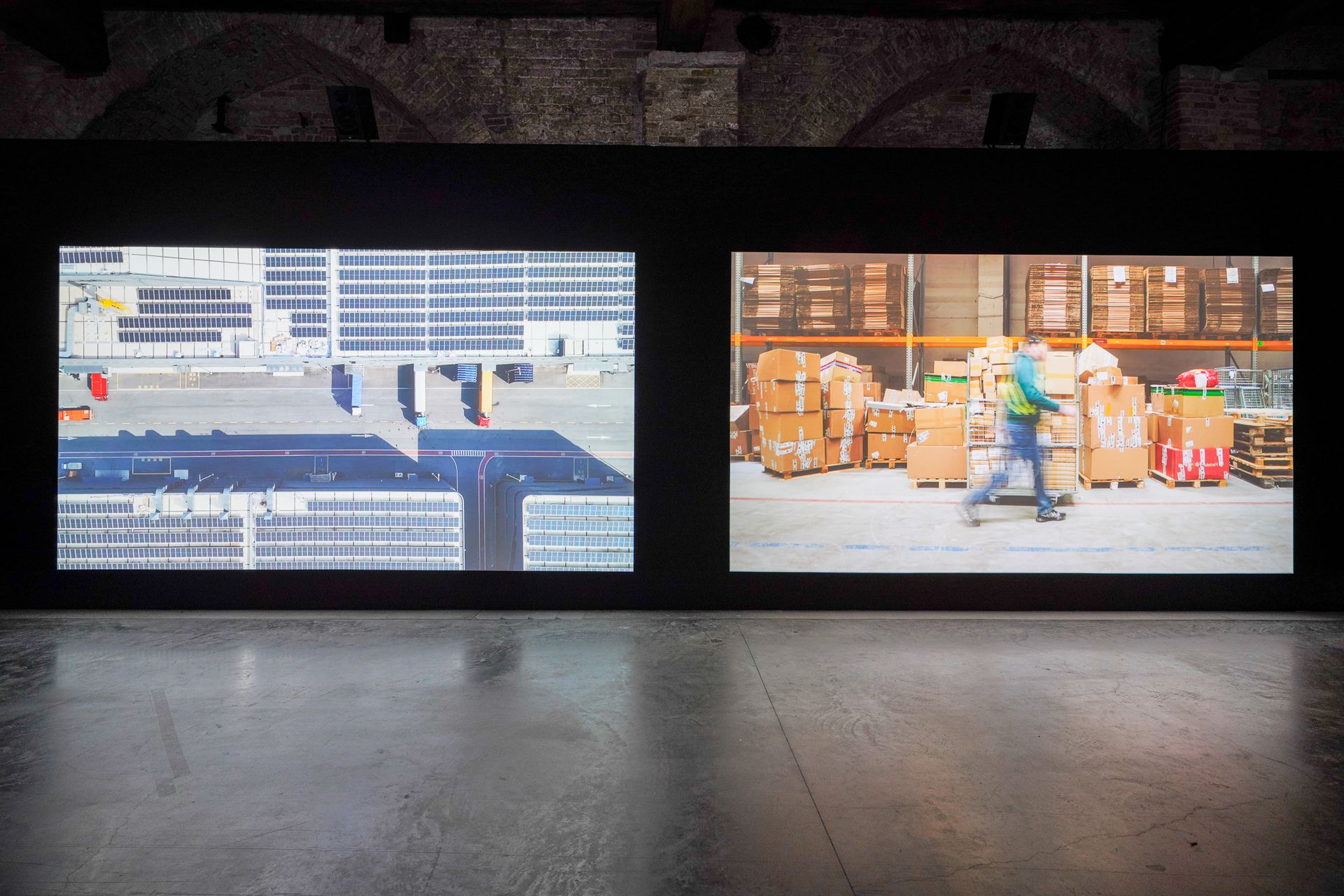
V&A's 'On Storage'
The second is the Biennale's ninth collaboration with the Victoria and Albert Museum in London on the Applied Arts Pavilion Special Project. This year it will be titled 'On Storage' - hinting at the opening of the V&A East Storehouse, which opens in London later this month. Curated by Brendan Cormier in collaboration with Diller, Scofidio + Renfro (DS+R), it explores the global architecture of storage.
Golden Lions for Lifetime Achievement
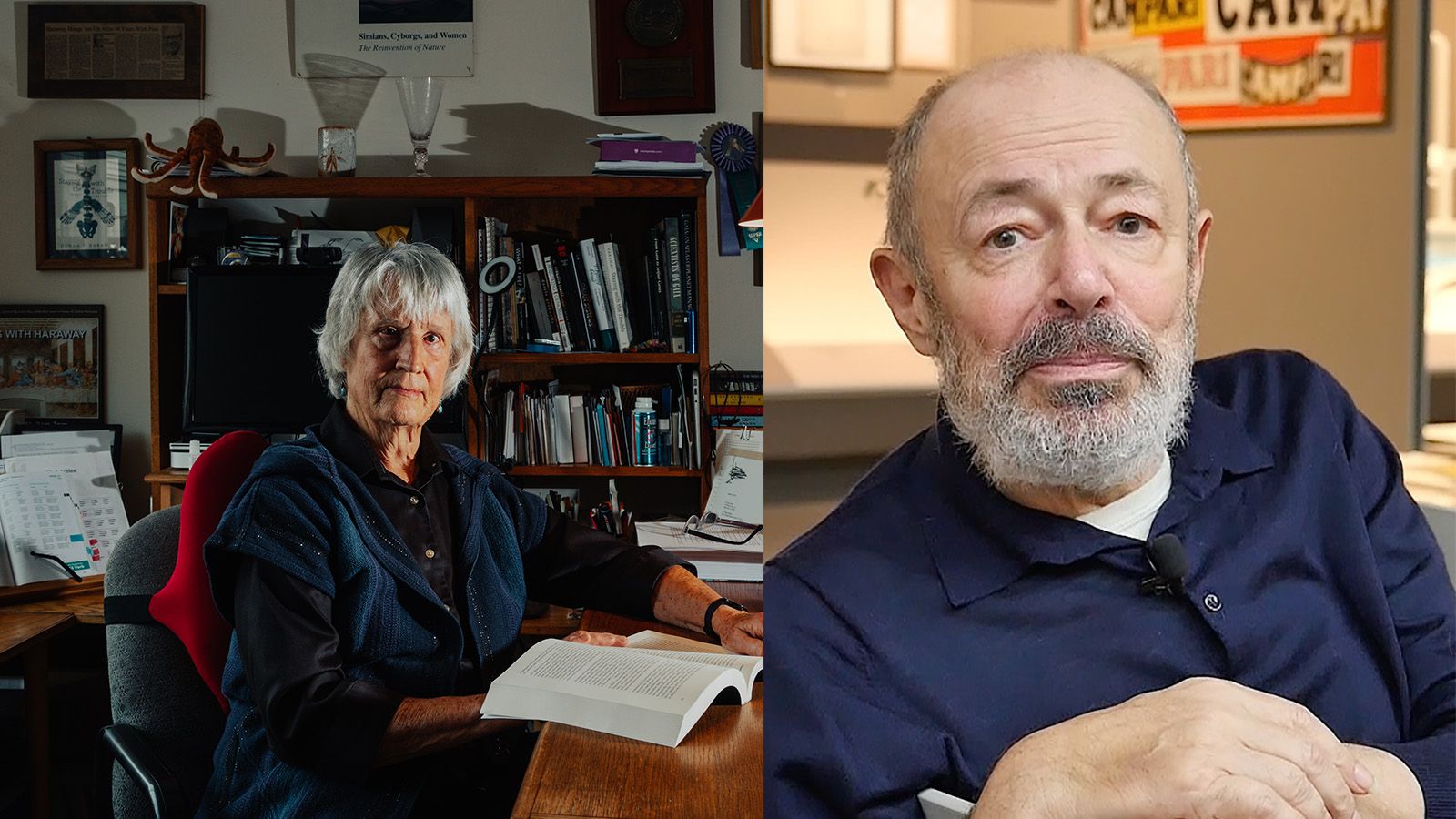
This year, the Golden Lion for Lifetime Achievement was jointly awarded to Italian architect Italo Rota (who recently died, on 6 April 2024) and American philosopher Donna Haraway. An honour awarded upon the recommendation of curator Carlo Ratti, the accolade was given to its recipients this year for their forward thinking and influence - in their field and beyond. Haraway was described by Ratti as a seminal voice 'in contemporary thought, straddling the social sciences, anthropology, feminist criticism, and the philosophy of technology,' while Rota 'a man of boundless culture, a passionate collector and researcher of both Wunderkammer objects and technological devices, and a generous teacher.'
Venice Architecture Biennale 2025: National Participations
Situated at their namesake pavilion across the Giardini park, as well as the Arsenale and further, selected sites across Venice, the national participations for the Venice Architecture Biennale 2025 are as rich and far-reaching as ever.
Announced on the opening day, the Golden Lion for Best National Participation went to the Kingdom of Bahrain and its exhibit, 'Heatwave', which clearly and concisely explored notions of climate change and local tradition in a display that was inviting, accessible and thoughtful. The Holy See pavilion 'Opera aperta' and the 2025 British pavilion 'GBR: Geology of Britannic Repair' received a special mention each. Meanwhile, more awards announced on the day included a Golden Lion for Participation to the 'Canal Café' by Diller Scofidio + Renfro, Natural Systems Utilities, SODAI, Aaron Betsky and Davide Oldani; a Silver Lion for a promising participation 'Calculating Empires: A Genealogy of Technology and Power Since 1500' by Kate Crawford and Vladan Joler; and two special mentions to 'Alternative Urbanism: The Self-Organized Markets of Lagos' by Tosin Oshinowo, Oshinowo Studio, and 'Elephant Chapel' by Boonserm Premthada.
First-time exhibitors include the Republic of Azerbaijan, the Sultanate of Oman, Qatar, and Togo. Scroll down for more.
Bahrain pavilion
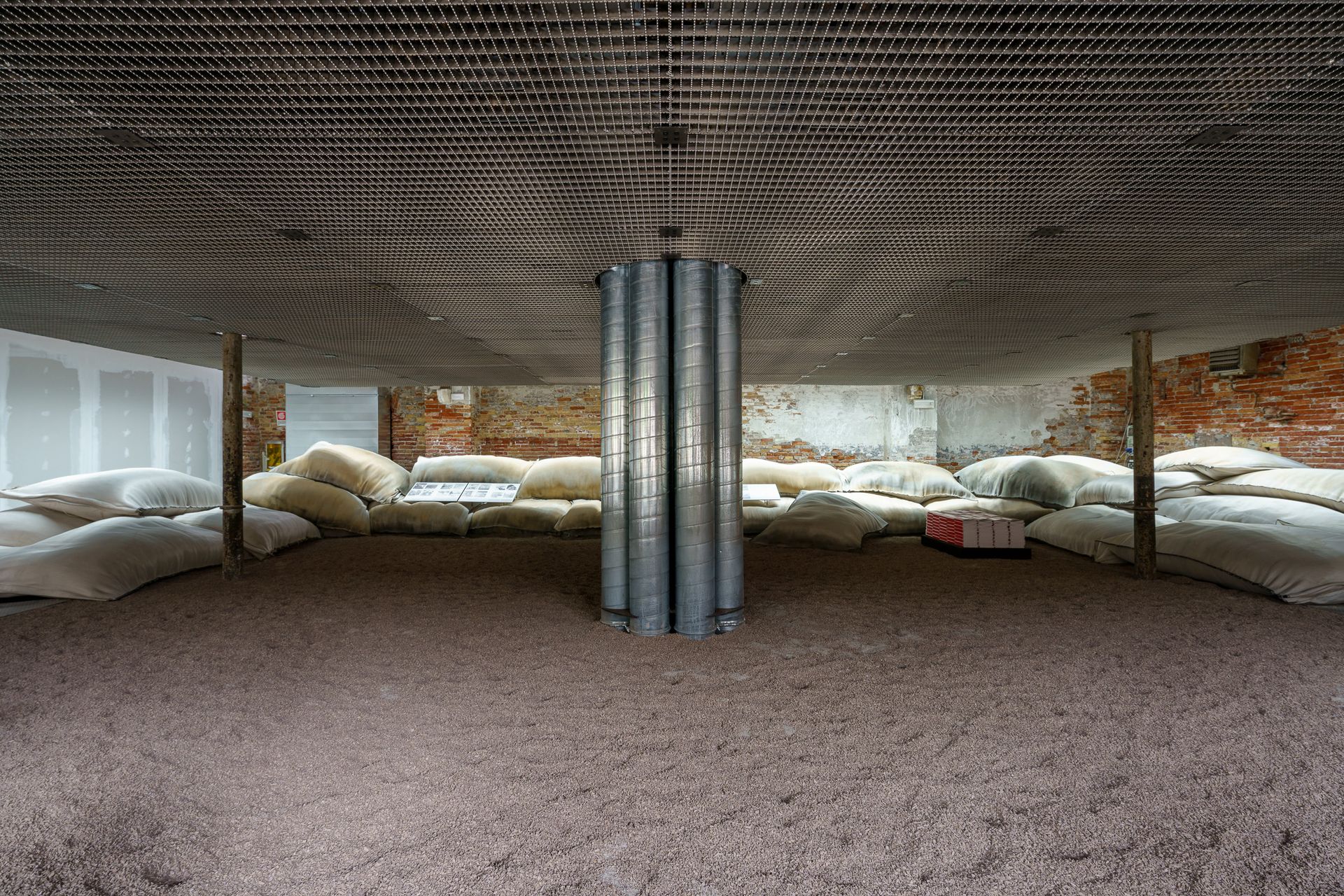
Winning the top gong for this year's best national contribution, the Bahrain pavilion focuses on climate change and a dialogue of old and new, the natural and the artificial - very much on the overall biennale theme. The festival's jury highlighted the country's participation in their citation: 'Golden Lion for best National Participation to the Kingdom of Bahrain: The Pavilion offers viable proposal for extreme heat conditions. As the designers explain, “Architecture must address the dual challenges of environmental resilience and sustainability. The ingenious solution can be deployed in public spaces and in locations where people must live and work outdoors in conditions of extreme heat. The pavilion uses traditional methods of passive cooling typical of the region and reminiscence of wind towers and shaded courtyards.'
Belgian Pavilion

Titled 'Building Biospheres', this year's Belgian contribution is curated by he team of Bas Smets and Stefano Mancuso. Commissioned by the Flanders Architecture Institute, the display is set to focus on the natural world and what it can offer us through its 'plant intelligence.' 'For too long, landscape has served as a backdrop for architecture. If we are to build a future that is truly sustainable, then natural intelligence must become the agent, shaping the way we live together. We must design with our biosphere, not against it, says Dennis Pohl, director of the institute.
Brazilian Pavilion
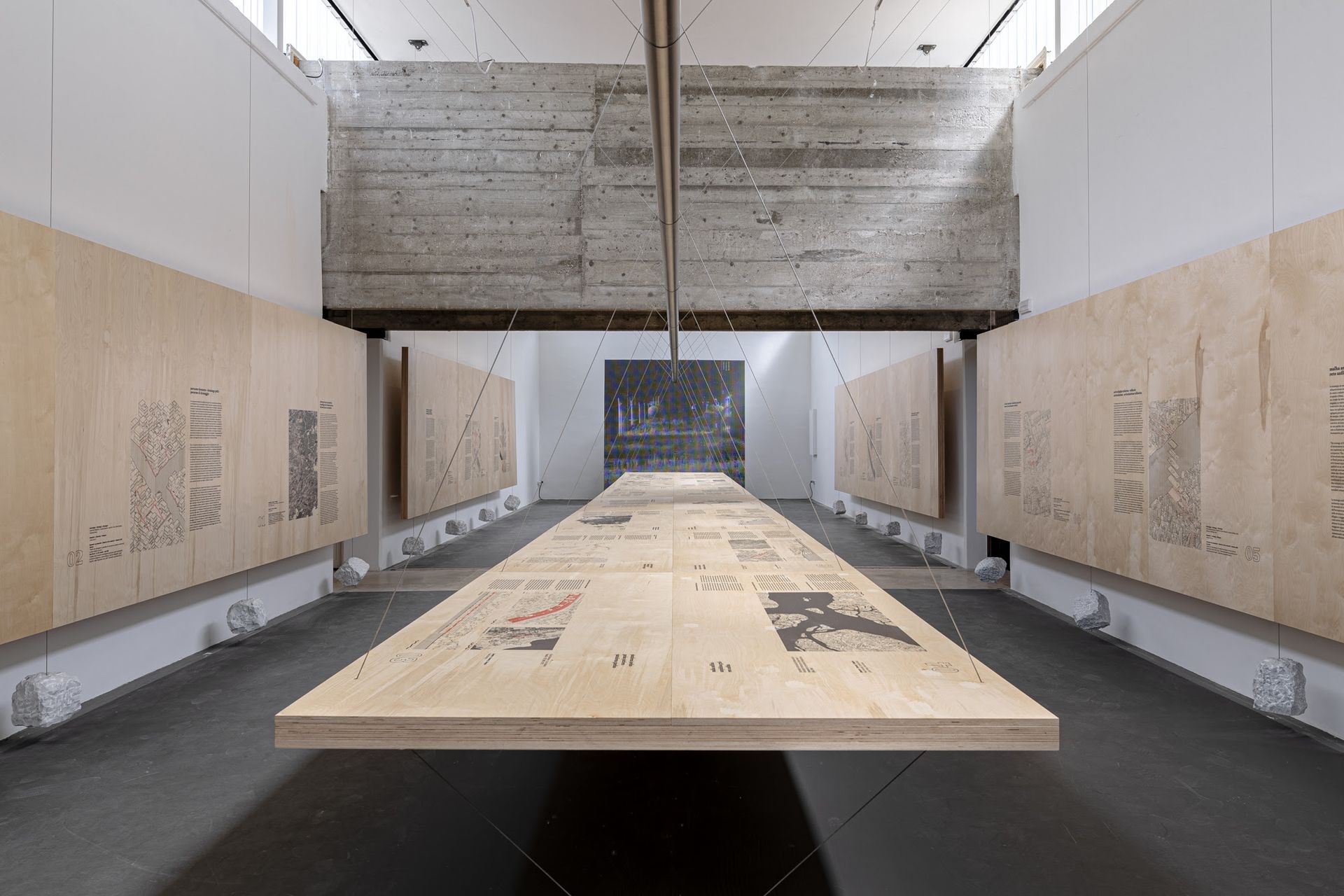
With their pavilion titled (RE)INVENTION, the Brazilians are zooming in on the communities and populations of the Amazon. Curated by the architects Luciana Saboia, Matheus Seco, and Eder Alencar, of the Plano Coletivo group, the exhibit looks at ancestral infrastructure in the region. 'Today, we know that the ancestral peoples of the Amazon were organized in much larger populations than previously thought. The region’s forests are largely the direct result of human action, the fruit of a balanced occupation and careful management of the vegetation, in contrast to the model that prevails in the Amazon today, which often reduces the landscape to a scenario of devastation.' says Seco.
Canada Pavilion
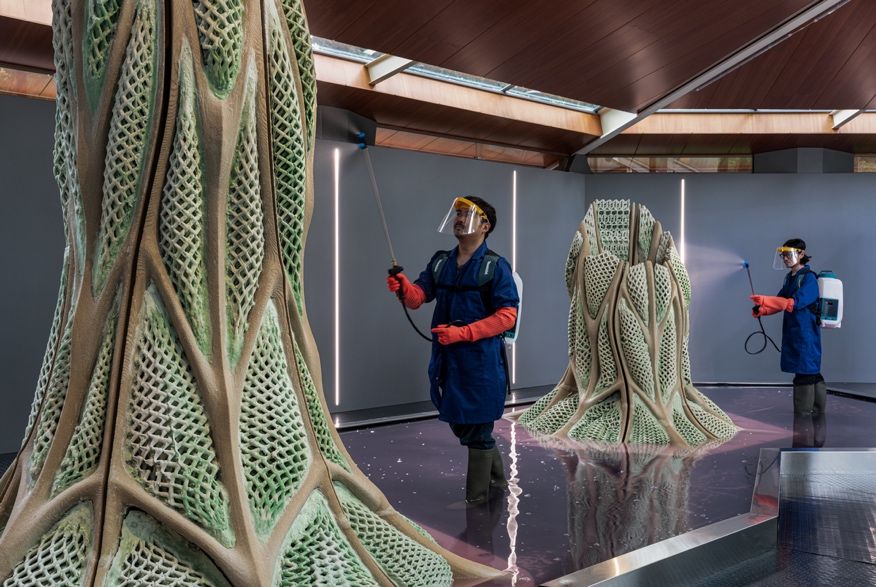
Canada is orchestrating a living installation, focusing on carbon-capturing cyanobacteria, 3D printed especially for the show. Working with the labs of ETH Zurich, the organisers aim to produce large scale, architecture pieces which will naturally evolve, grow and decay. The display, created by a group of artists and researchers is indeed a world premiere of an innovative type of technology developed by the Living Room Collective.
Danish Pavilion
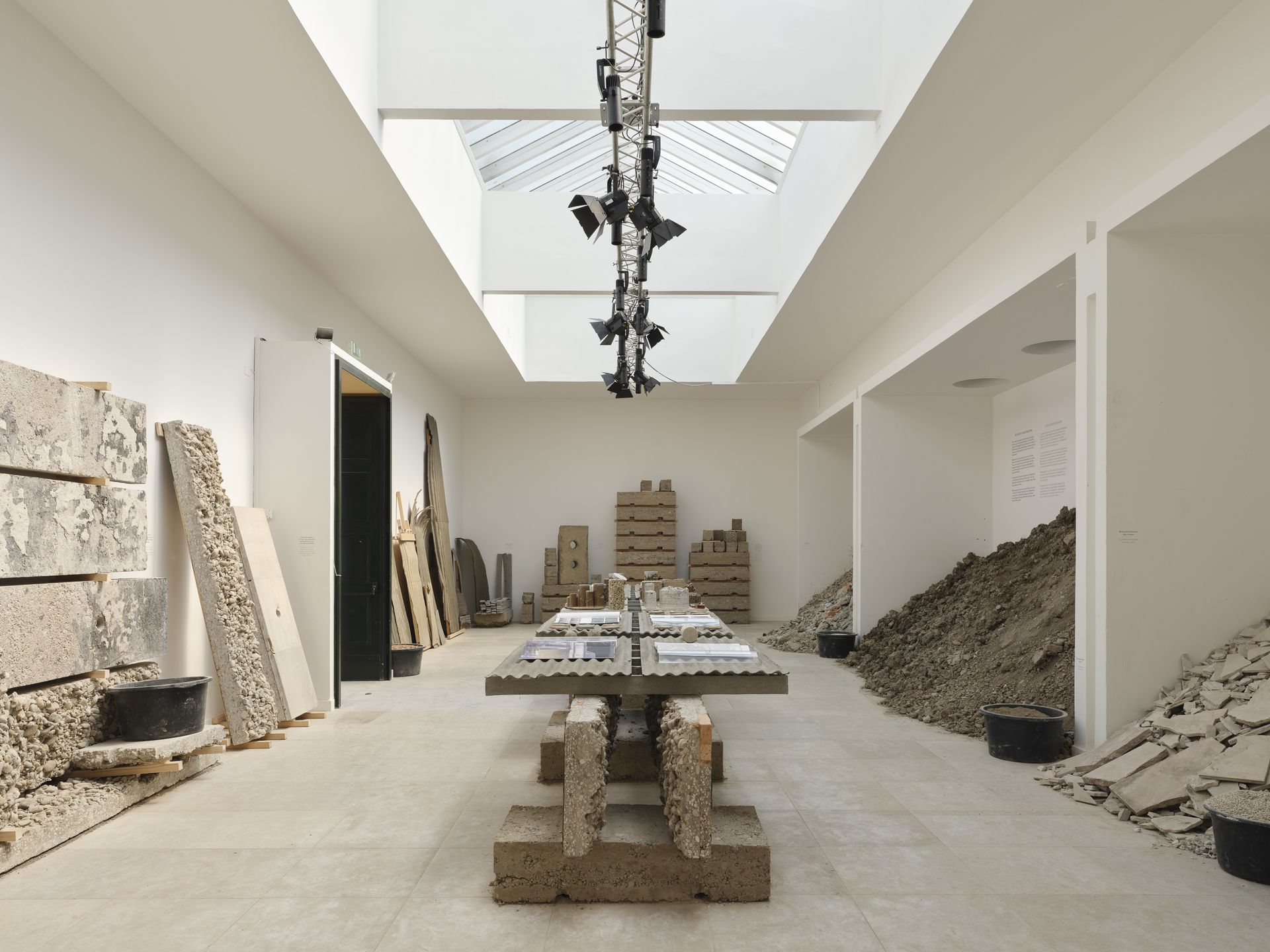
Curated by architect Søren Pihlmann, the Danish pavilion addresses its offering as a construction site. Collaborating with experts from the Royal Danish Academy, the University of Copenhagen, the Technical University of Denmark, and ETH Zurich, the architect intends to create 1:1 builds discussing and displaying hyper local construction methods and materials. 'We've already created everything we need. That's why we must be better at understanding and finding value in what already exists,' he says.
Austrian Pavilion
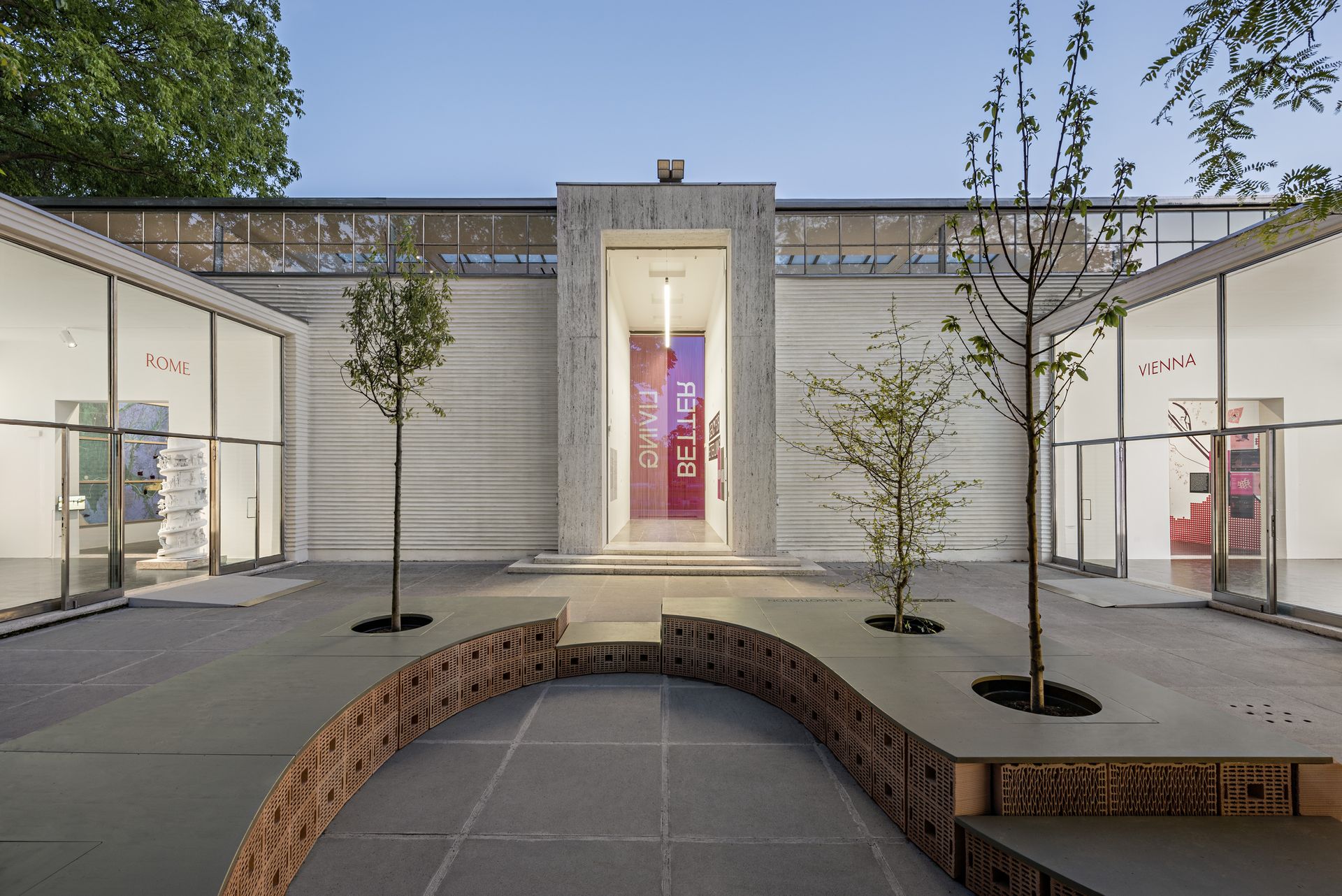
Set in the green environs of the Giardini, the Austrian Pavilion this year is titled AGENCY FOR BETTER LIVING and it is looked after this year by a trio of curators: Sabine Pollak, Michael Obrist, and Lorenzo Romito. The display looks at the cities of Vienna and Rome as case studies, comparing them and discussing finds in terms of their social housing models - from official strategies to informal activist approaches. The idea is to share knowledge so everyone can benefit.
Japanese Pavilion
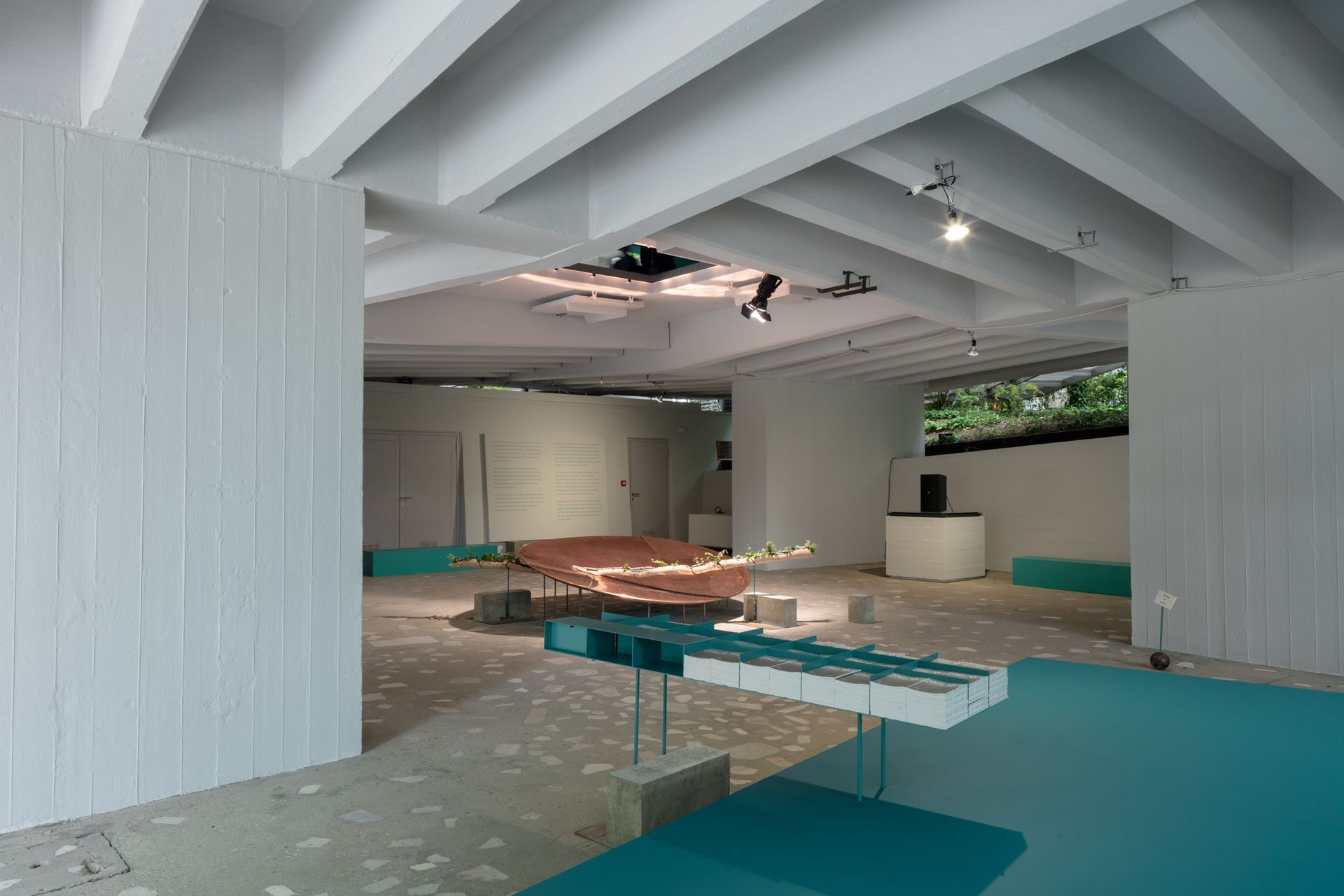
Curated by Jun Aoki, the Japanese Pavilion exhibition this year centres on the old Japanese language, this is expressed as ma, or the 'In-Between,' as the show is titled. The premise looks at humans in relation to the environment, rethinking it - instead of an us-and-it mentality of juxtaposition, to embracing a co-existence and interweaving which means a third realm emerges, where humans and nature form a single ecosystem. The organisers explain: 'This project takes the Japan Pavilion as the experimental grounds for pursuing this new kind of intelligence. The elements that make up the pavilion––the Hole, Wall Columns, Outer Walls, Brick Terrace, Pensilina, Tilted Loop Path, and Yew Tree–– with the human team of curators and two artist-architect pairs, engage in a dialogue, both fictionally and actually. Together, we imagine a future of the Japan Pavilion–– a near future, where things are just a little different.'
Kosovo Pavilion
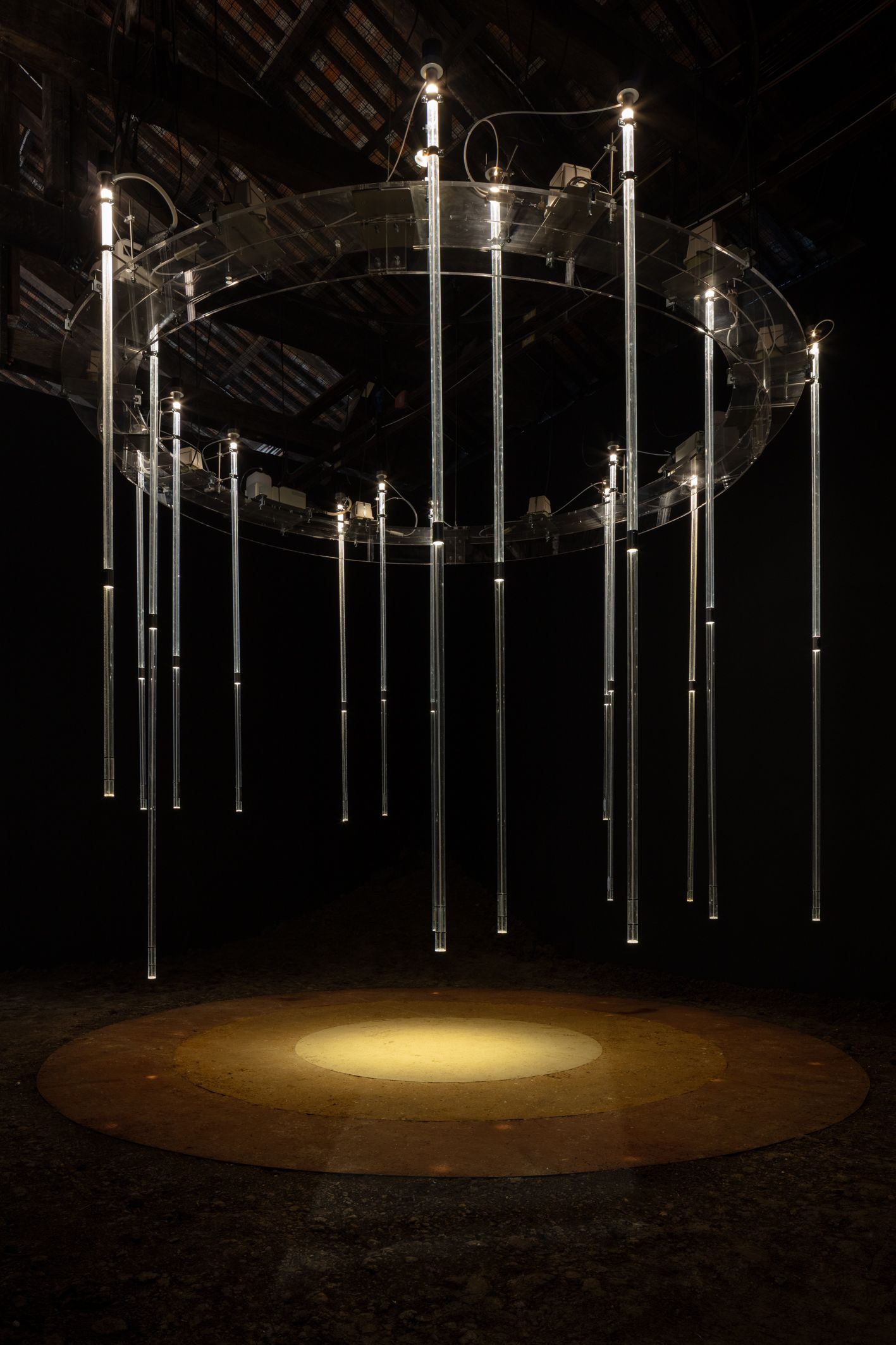
The Republic of Kosovo is launching a display curated by architect Erzë Dinarama. Titled 'Lulebora nuk çel më. Emerging Assemblages', the show 'materializes these ecological tensions through sensory-material elements that resist capture by predictive models: the soils and smells of this uncertain landscape,' the team explains.
Oman Pavilion
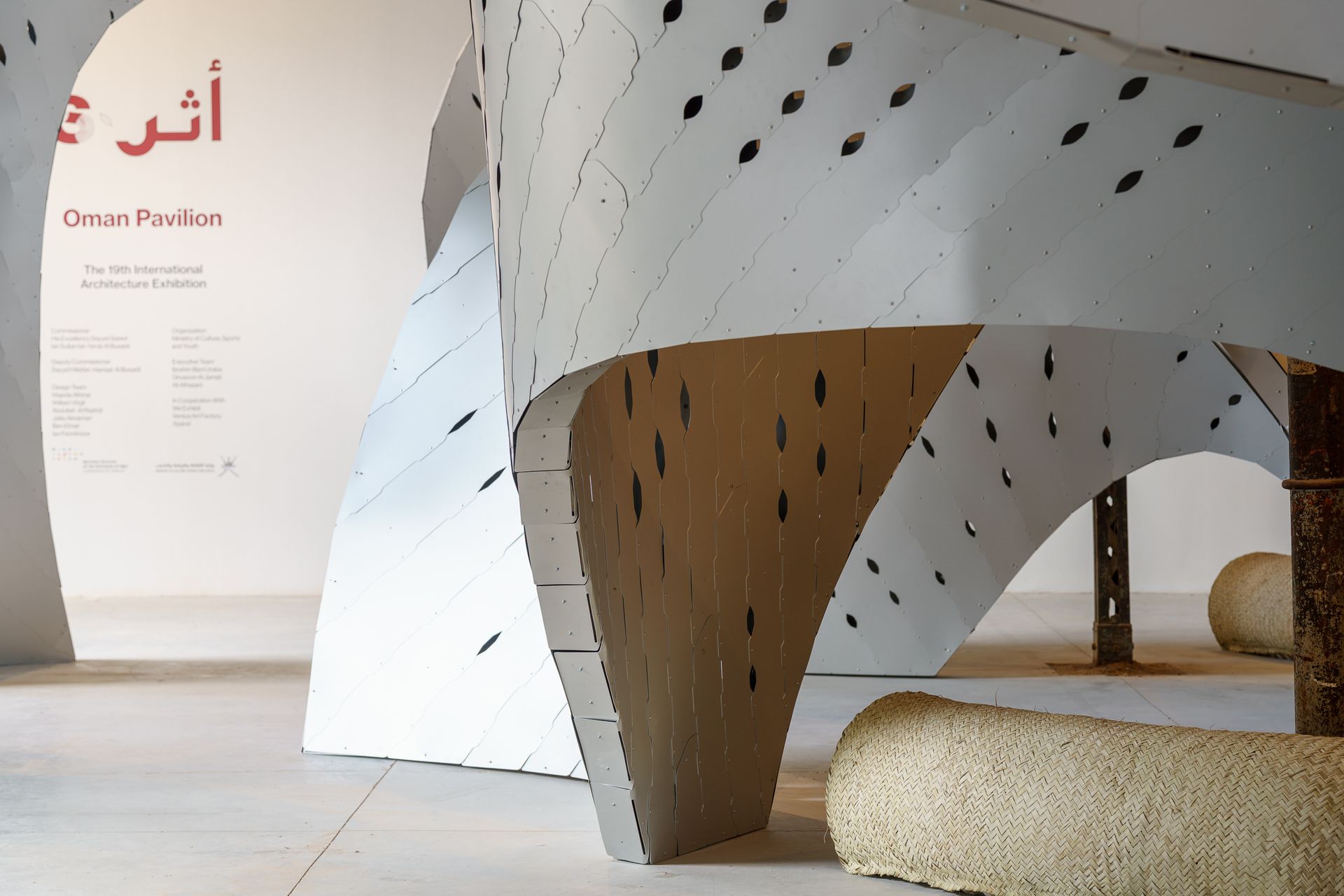
Floral patterns and motifs provide inspiration for the inaugural Omani Pavilion. The country's very first official presence at the biennale is curated by Omani architect Majeda Alhinai. The exhibit will aim to weave age-old craft traditions with modernity. Alhinai says: 'As an architect and curator, I believe meaningful architectural solutions emerge when we truly understand the deep connections between place, people, and collective memory. Traces highlights the importance of social cohesion, dialogue, and communal spaces in shaping the built environment. Architecture is not just about structure, but about creating spaces that foster connection and shared experience. I wanted to create a space that could be redefined and reshaped over time, much like the conversations, meetings, and encounters that naturally unfold within a traditional Sablah.'
Dutch Pavilion
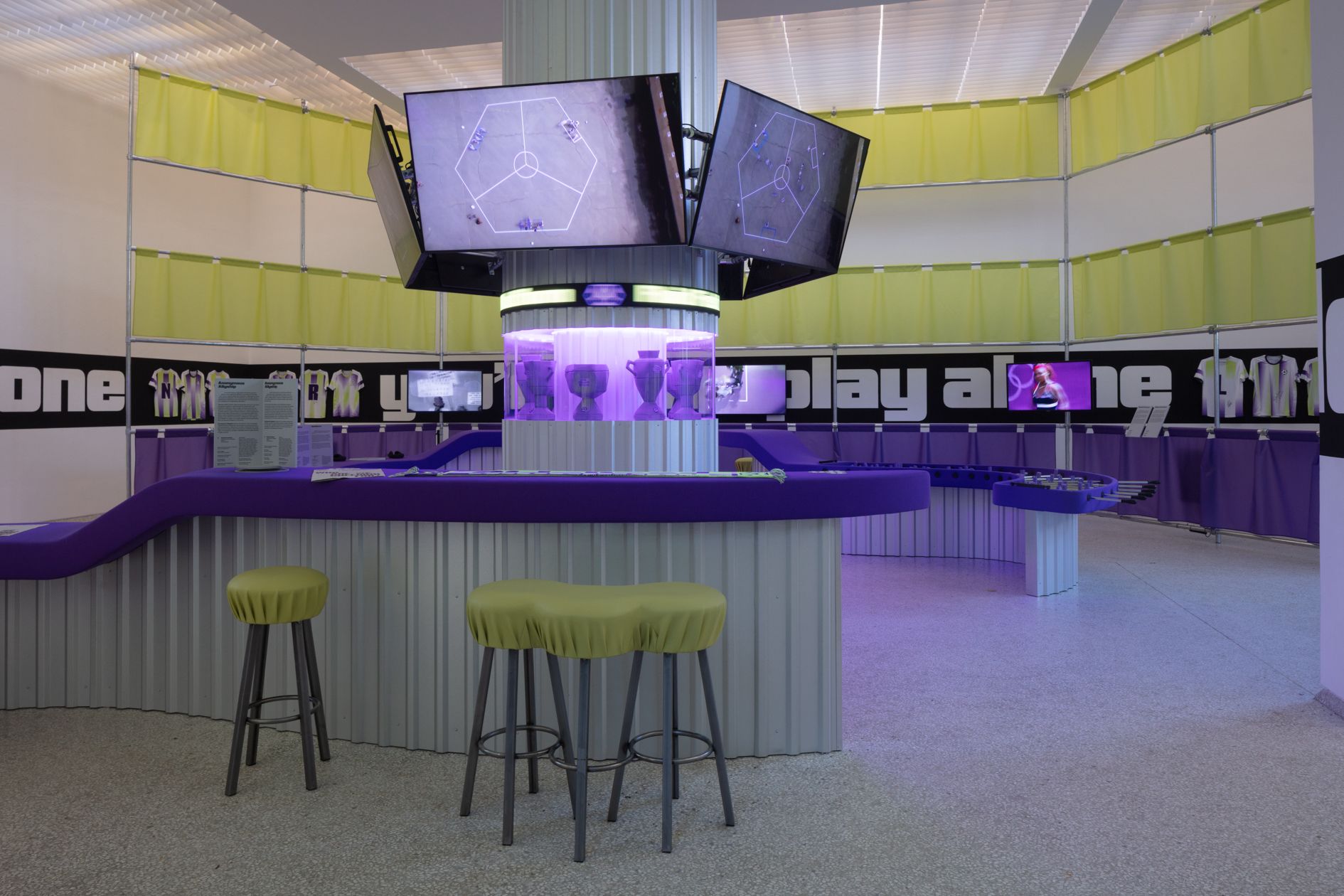
'How can architecture resist exclusionary social norms to create spaces that nurture different ways of coexisting in everyday life?' ask the Dutch. Their answer is SIDELINED, curated by Amanda Pinatih, Curator of Design & Contemporary Art at the Stedelijk Museum, and social designer Gabriel Fontana. The pavilion proposes an alternative sports bar that continues Fontana’s 'investigation of social dynamics through the lens of sport.'
Irish Pavilion

Appointing Cotter & Naessens Architects as the curators of the Irish Pavilion, the country presents in its 2025 showcase a an interdisciplinary collaboration between the architecture team, sound artist David Stalling, poet Michelle Delea, and curator Luke Naessens. The resulting multisensory installation was inspired 'by the innovative political model of the Citizens’ Assembly, introduced by the Irish government in 2016,' the team writes.
Luxembourg Pavilion
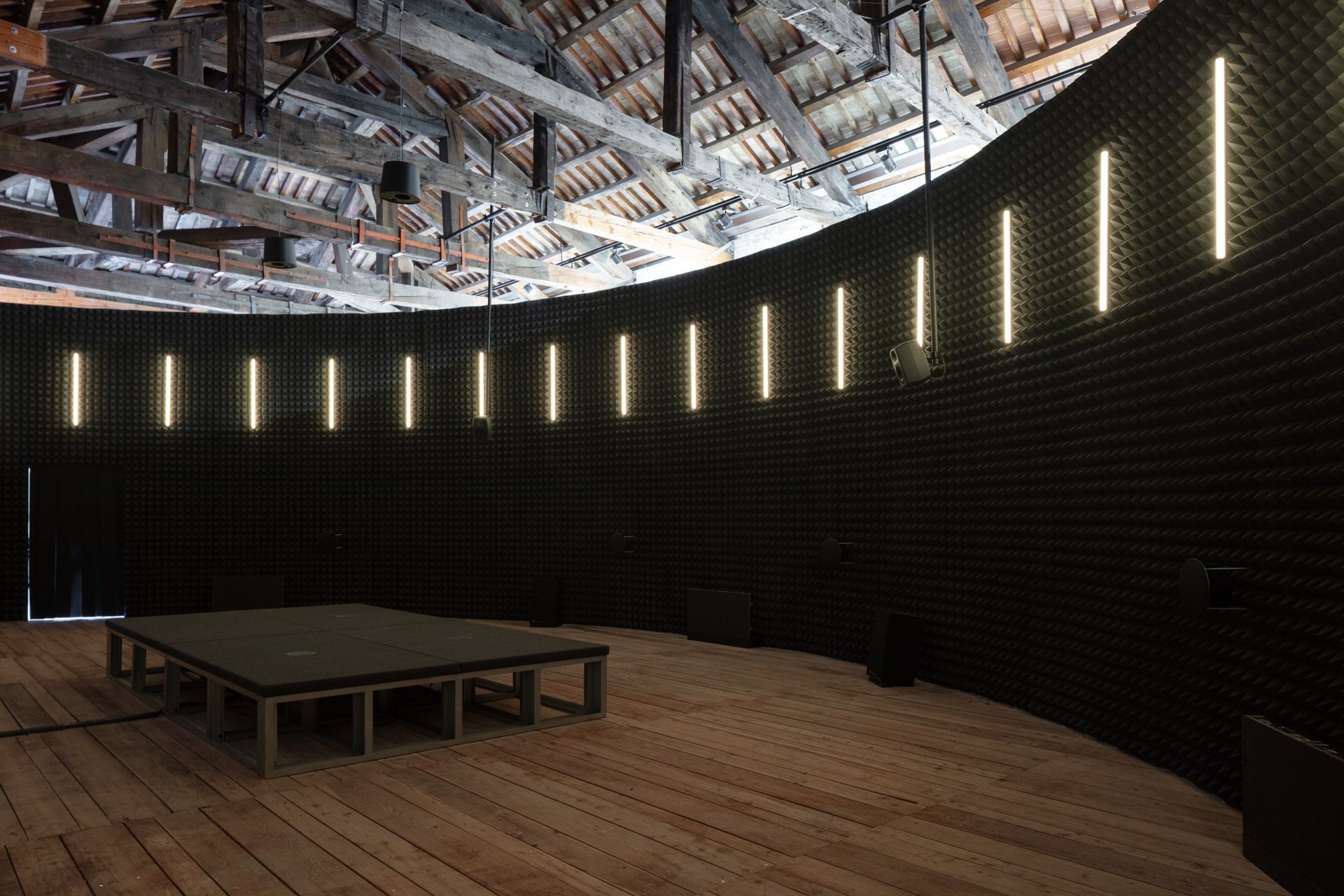
Luxembourg's Sonic Investigation aims to shift the focus from the visual to the aural. The pavilion nods to John Cage’s silent song 4’33’’ and is curated by a team composed by Valentin Bansac, Mike Fritsch and Alice Loumeau, who together celebrate through their displays the multisensorial aspects of architecture.
Finnish Pavilion
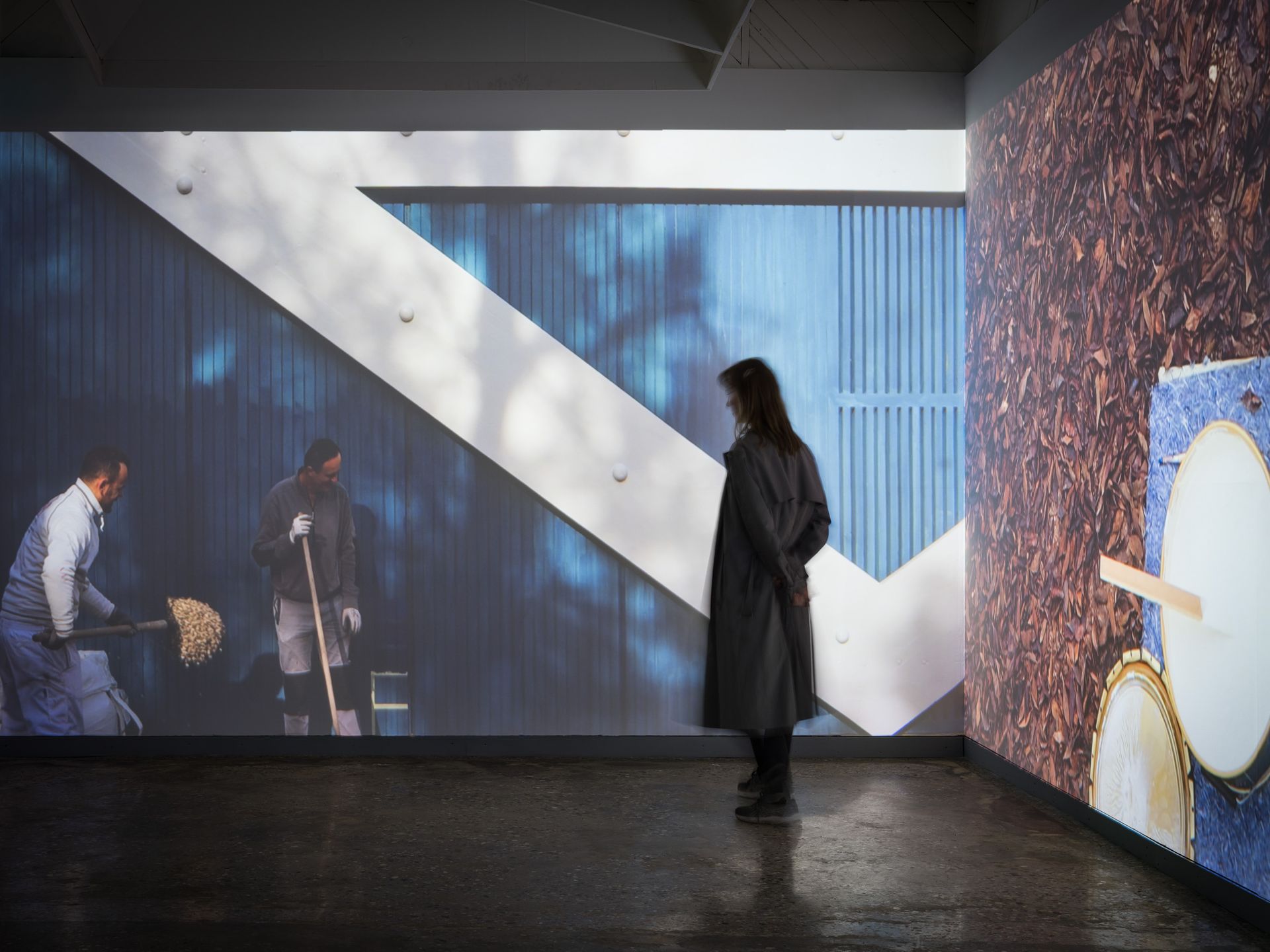
Curators Ella Kaira and Matti Jänkälä have joined forces to curate the Finnish pavilion. The space, in a building by modernist architecture master Alvar Aalto and Elissa Aalto, celebrates the Architecture of Stewardship - all the different workers and collaborators that are involved in making a building happen. 'From design contributions by architectural workers and engineers to the efforts of construction workers, restoration architects, maintenance staff and cleaners,' they all play a vital role in the life of a building, the team says.
Qatar Pavilion

Aziza Chaouni, Sidi Harazem Bath Complex Rehabilitation, 2019–ongoing
While traditionally Qatar has not had a dedicated space in the Giardini, this year the country has announced its plans to build one on-site. Its display in the 2025 festival is a two-pronged action offering a taste of what's to come and set on two different sites - one of which is the grounds of where the future pavilion will lie. The site will be 'activated' with an installation, Community Centre, by Pakistani architect Yasmeen Lari and offers a look into her humanitarian models through a temporary, immersive bamboo structure. Meanwhile, titled Beyti Beytak. My Home is Your Home. La mia casa è la tua casa a second exhibition at ACP-Palazzo Franchetti, focuses on notions of hospitality in the Middle East, North Africa, and South Asia regions and how this is reflected in traditional and contemporary architecture through the work of some 30 studios. Meanwhile, architect Lina Ghotmeh has been revealed as the architect to design the permanent pavilion within the Giardini in the future.
Saudi Arabia Pavilion
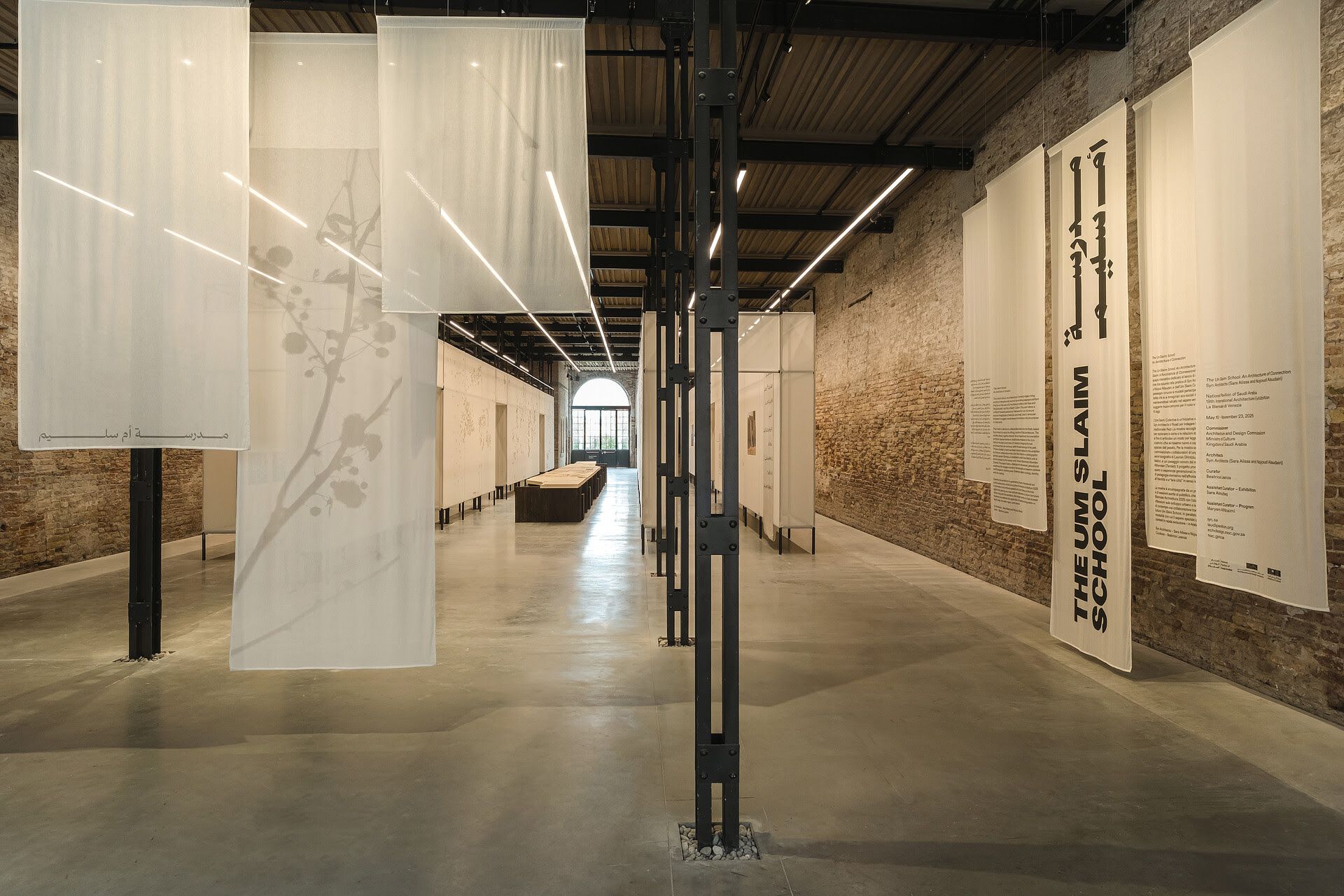
For its fourth-ever participation at the biennale of architecture, Saudi Arabia presents work by Riyadh-based practice Syn Architects, led by Sara Alissa and Nojoud Alsudairi. Reflecting contemporary practice in the country, the installation will be titled The Um Slaim School: An Architecture of Connection, and is curated by Beatrice Leanza, assisted by Sara Almutlaq.
Swiss Pavilion
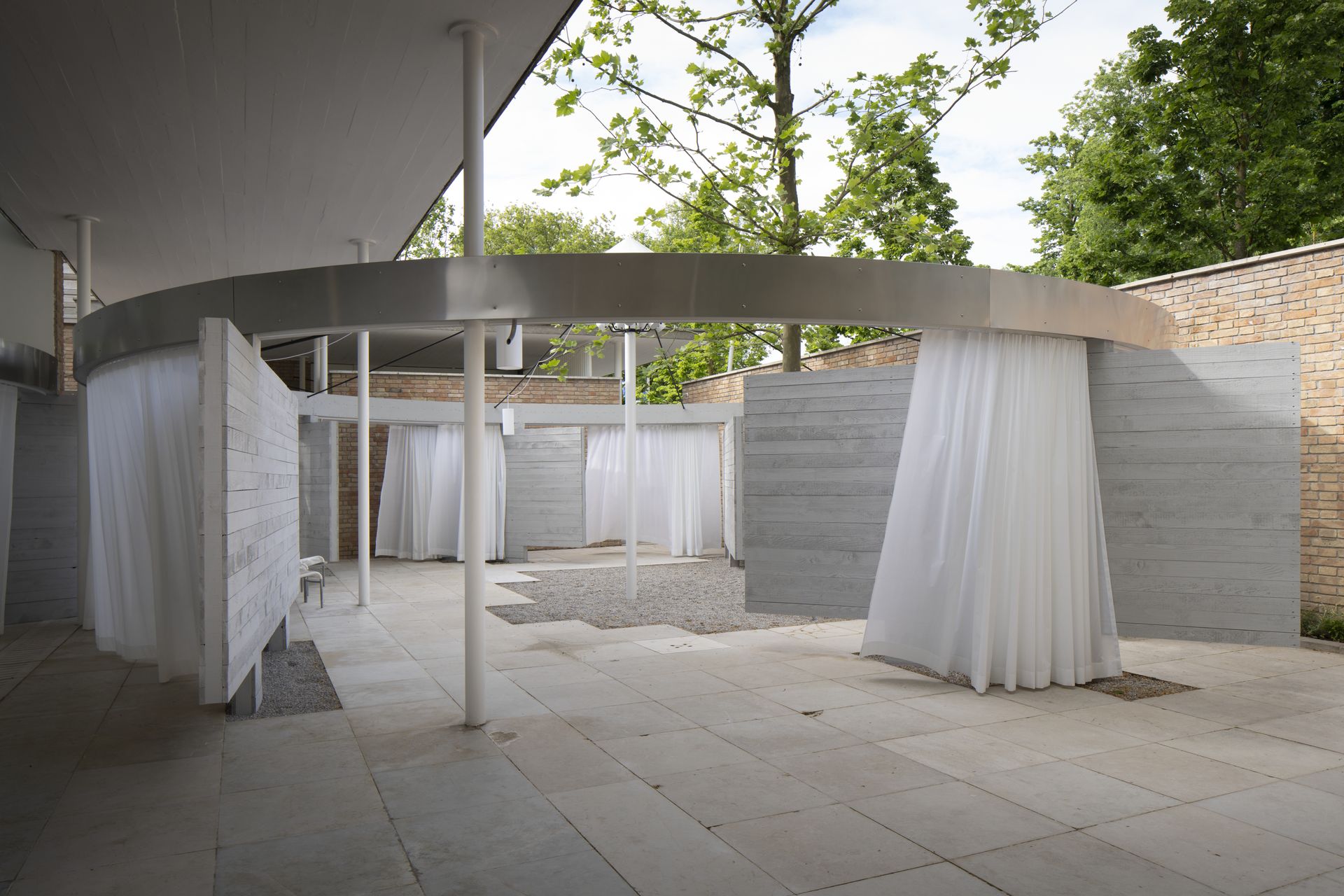
Co-curators Elena Chiavi, Kathrin Füglister, Amy Perkins, Axelle Stiefel and Myriam Uzor of collaborative group Annex ask for their 2025 contribution: 'What if Lisbeth Sachs had designed the Swiss Pavilion in the Giardini della Biennale di Venezia instead of Bruno Giacometti?' The display revisits an old, temporary work by Sachs (1914-2002), who was one of the country's first female architects.
Singapore Pavilion
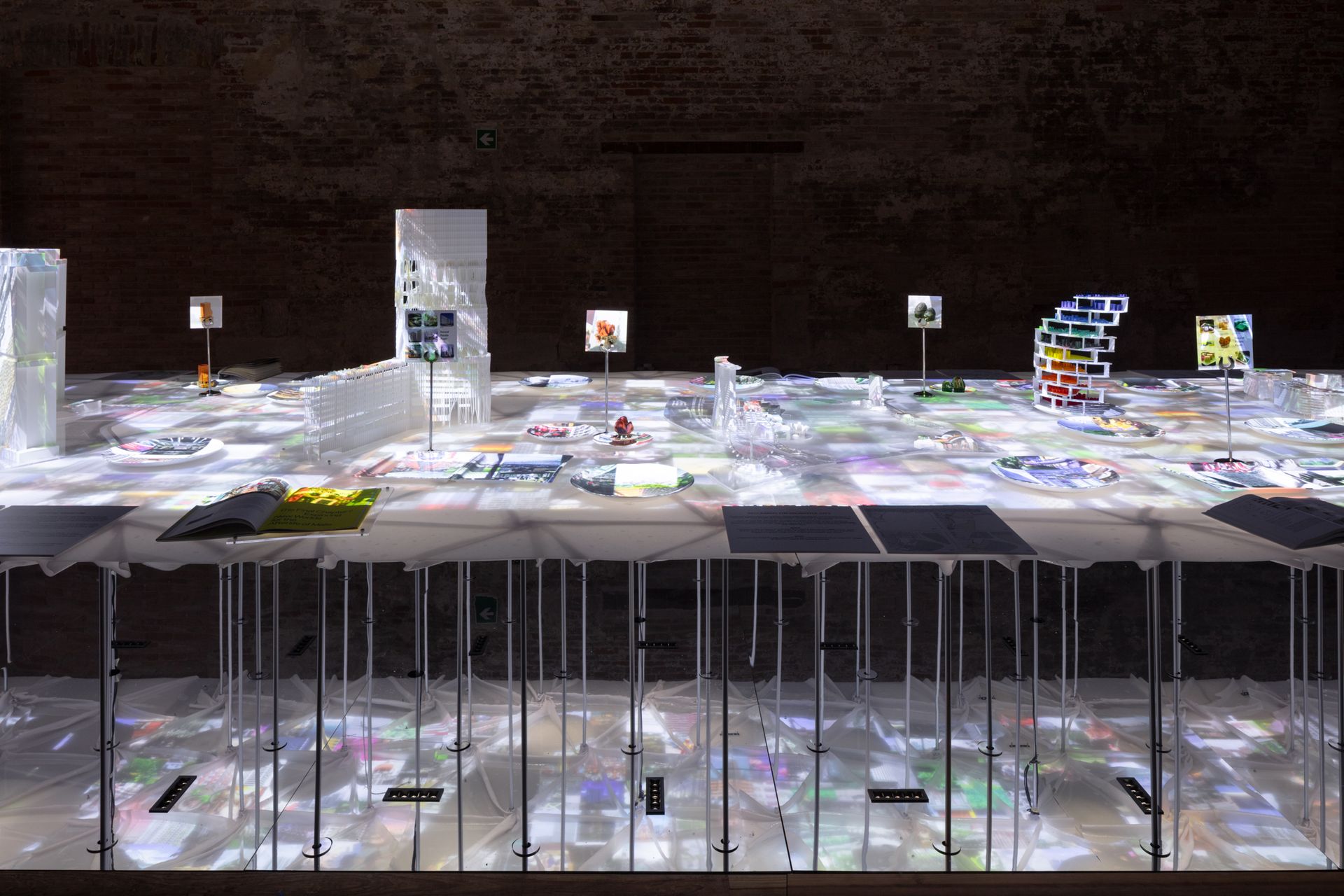
Singapore takes the opportunity to celebrate its 60 years of independence with its pavilion at the 19th Venice Architecture Biennale. Titled ‘RASA-TABULA-SINGAPURA’, the exhibit 'reimagines the city as a communal dining table,' creating an immersive experience that highlights the country's 'superdiversity.'
UAE pavilion

The UAE's participation is titled 'Pressure Cooker.' The installation is curated by Emirati architect and Assistant Professor at the College of Arts and Creative Enterprises at Zayed University and Co-founder of Holesum Studio Azza Aboualam, who looks at the country's food growing infrastructure. Looking at local communities and lots of archival research, the contribution explores challenges arising from issues of food security.
USA Pavilion
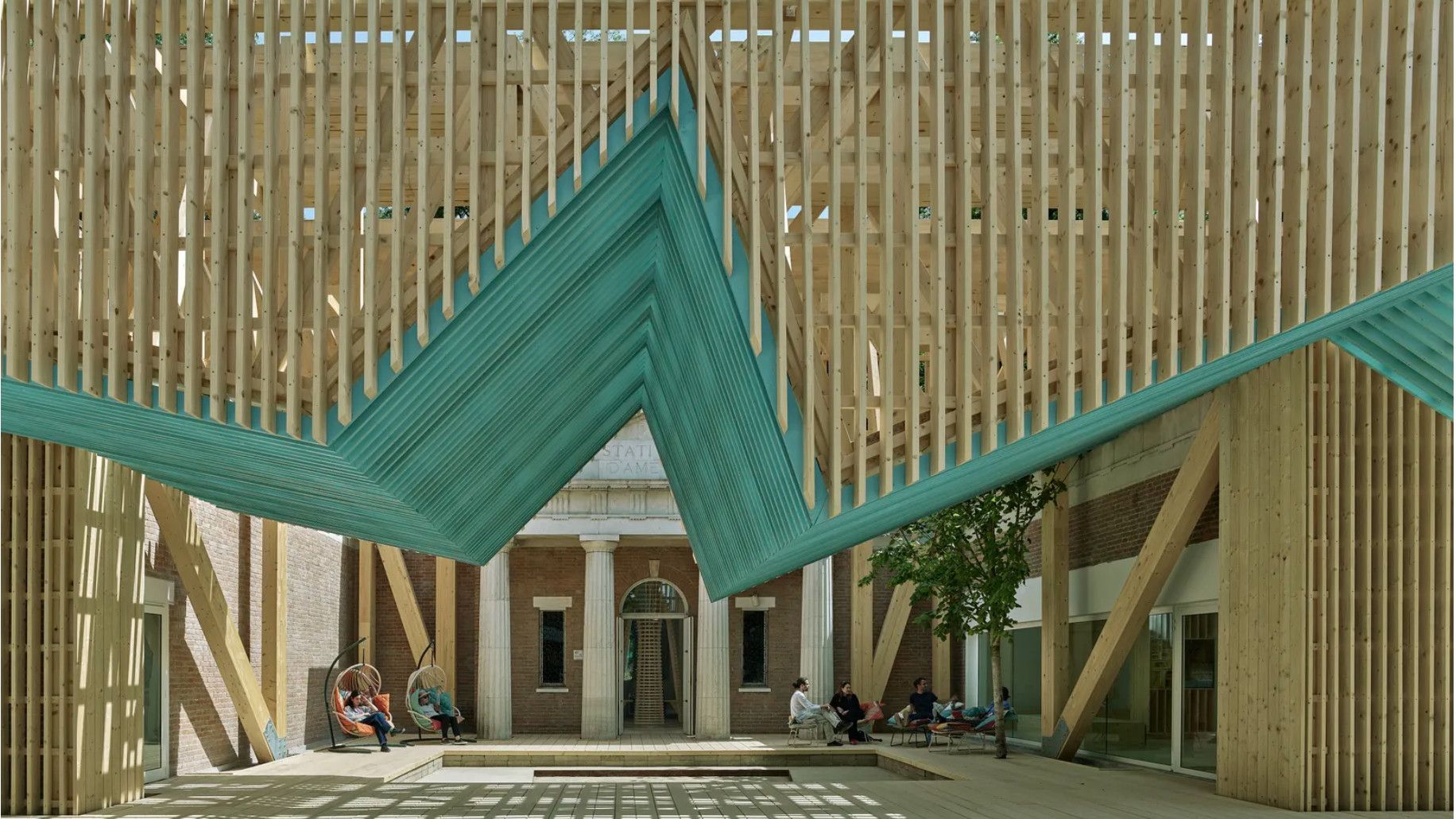
The 2025 US Pavilion's exhibition, PORCH: An Architecture of Generosity, draws on and celebrates the ubiquitous in the country and beloved architecture feature: the humble porch. 'The exhibitor contributions to the U.S. Pavilion, achieved through the Open Call, lie at the heart of the collective PORCH project,” said Peter MacKeith, Dean of the Fay Jones School of Architecture and Design, University of Arkansas, who is one of the commissioning bodies. 'Framed by the constructions and installations of our design team, the exhibitor contributions will animate an understanding of contemporary architecture and design in the United States as a source of civic engagement and community building, a resource for social and environmental resiliency and as fundamentally committed to the greater good of society.'
Nordic Pavilion
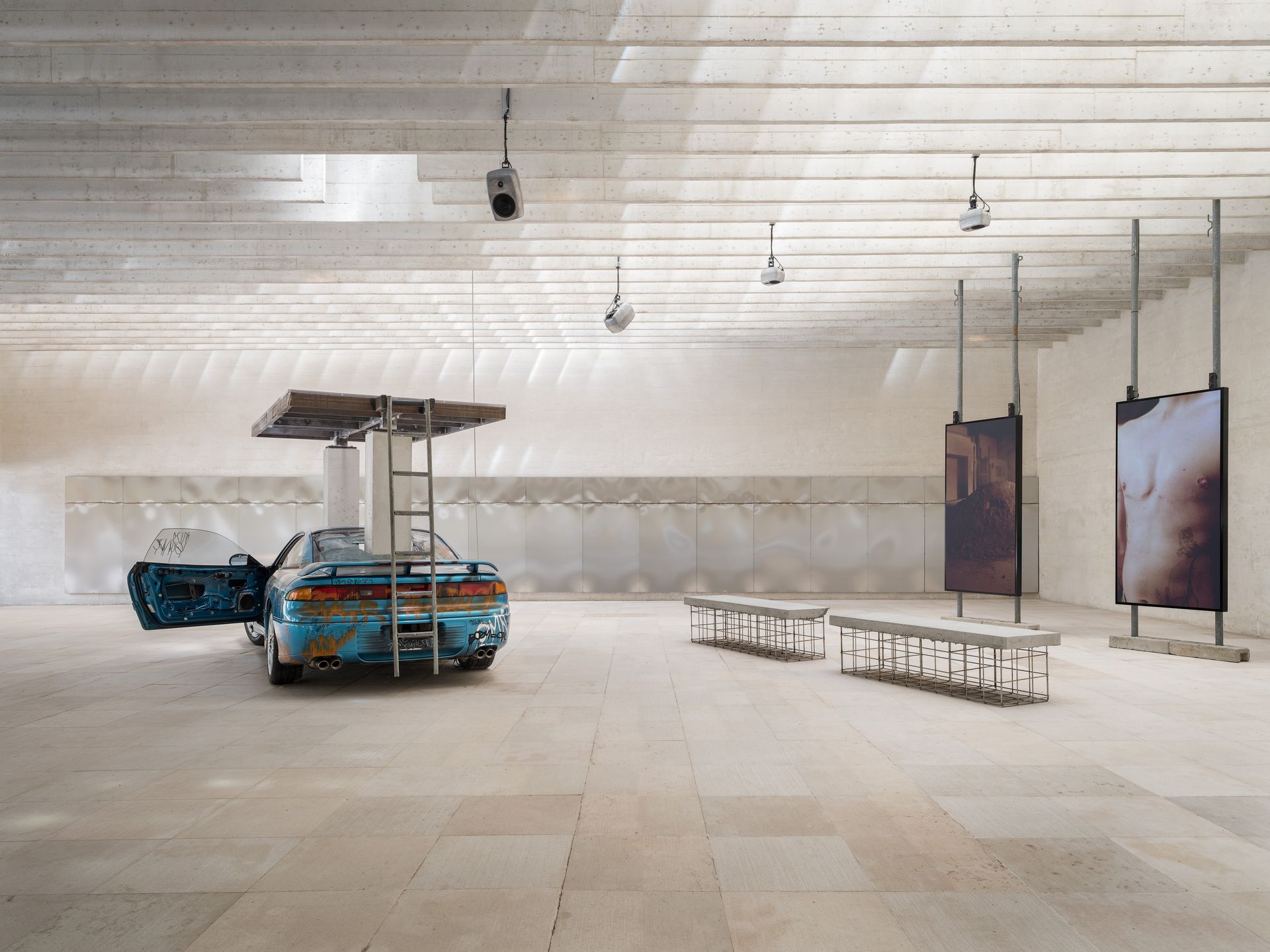
The Nordic countries join forces once more contributing to the biennale this year with Industry Muscle - a body of work that 'examines architecture using the trans body as a lens, establishing a dialogue with Sverre Fehn’s Nordic Countries Pavilion.' Main exhibitor Teo Ala-Ruona, whose work combines performance art, theatre, and choreography, leads the way, bringing along a variety of different collaborators.
UK Pavilion
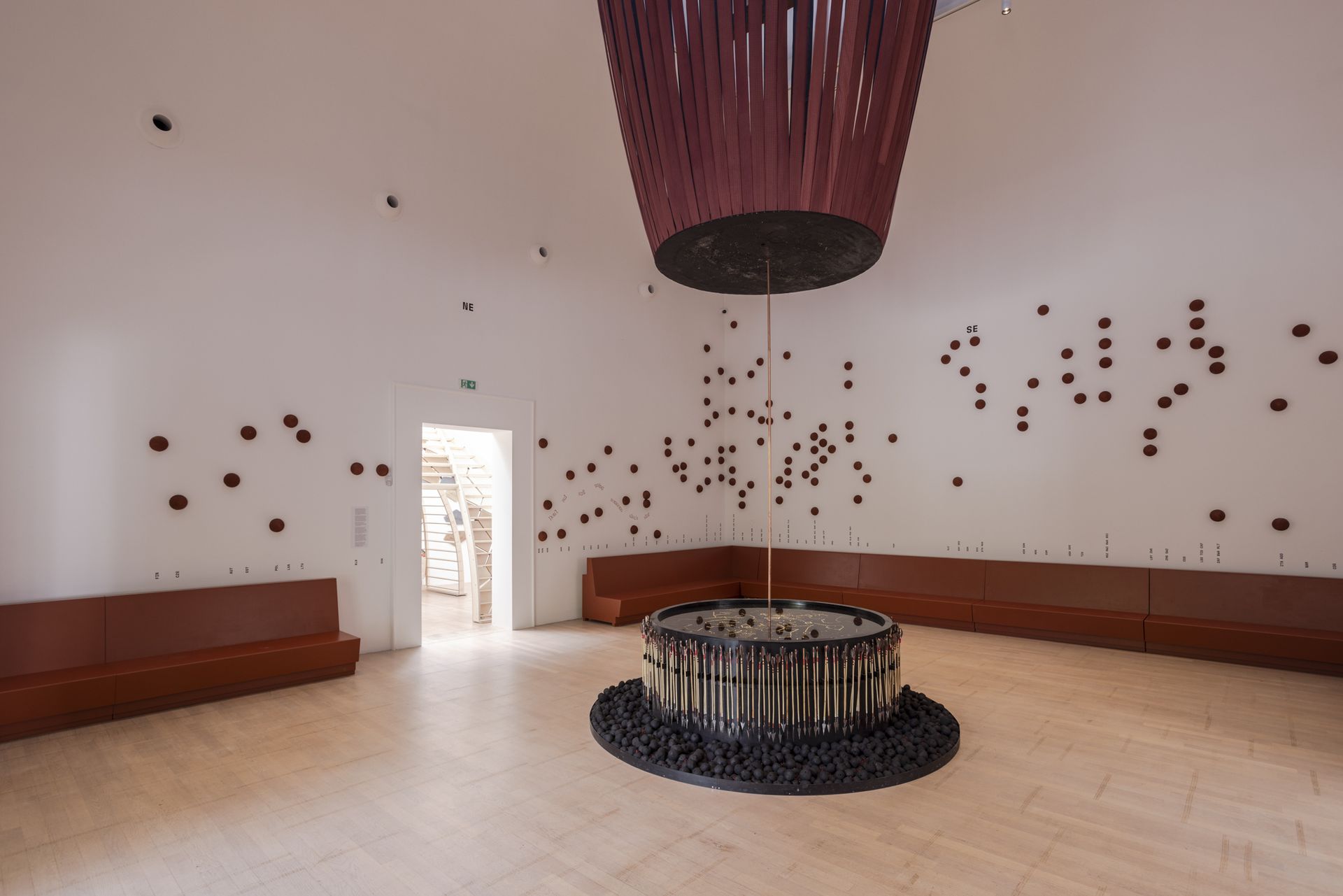
Co-curated by Nairobi based architecture studio Cave Bureau co-founders Kabage Karanja and Stella Mutegi with writer and curator Owen Hopkins and Queen Mary University professor Kathryn Yusoff, the 2025 British Pavilion (sponsored in part by The Dalmore, which launched The Dalmore Luminary Series sculpture No.3 by Ben Dobbin of Foster + Partners, co-curated by V&A Dundee during the opening) is this year a collaboration between Britain and Kenya. Part of the British Council's 2025 UK-Kenya Season of Culture, the contribution will focus on 'architecture of repair.'
Latvia Pavilion
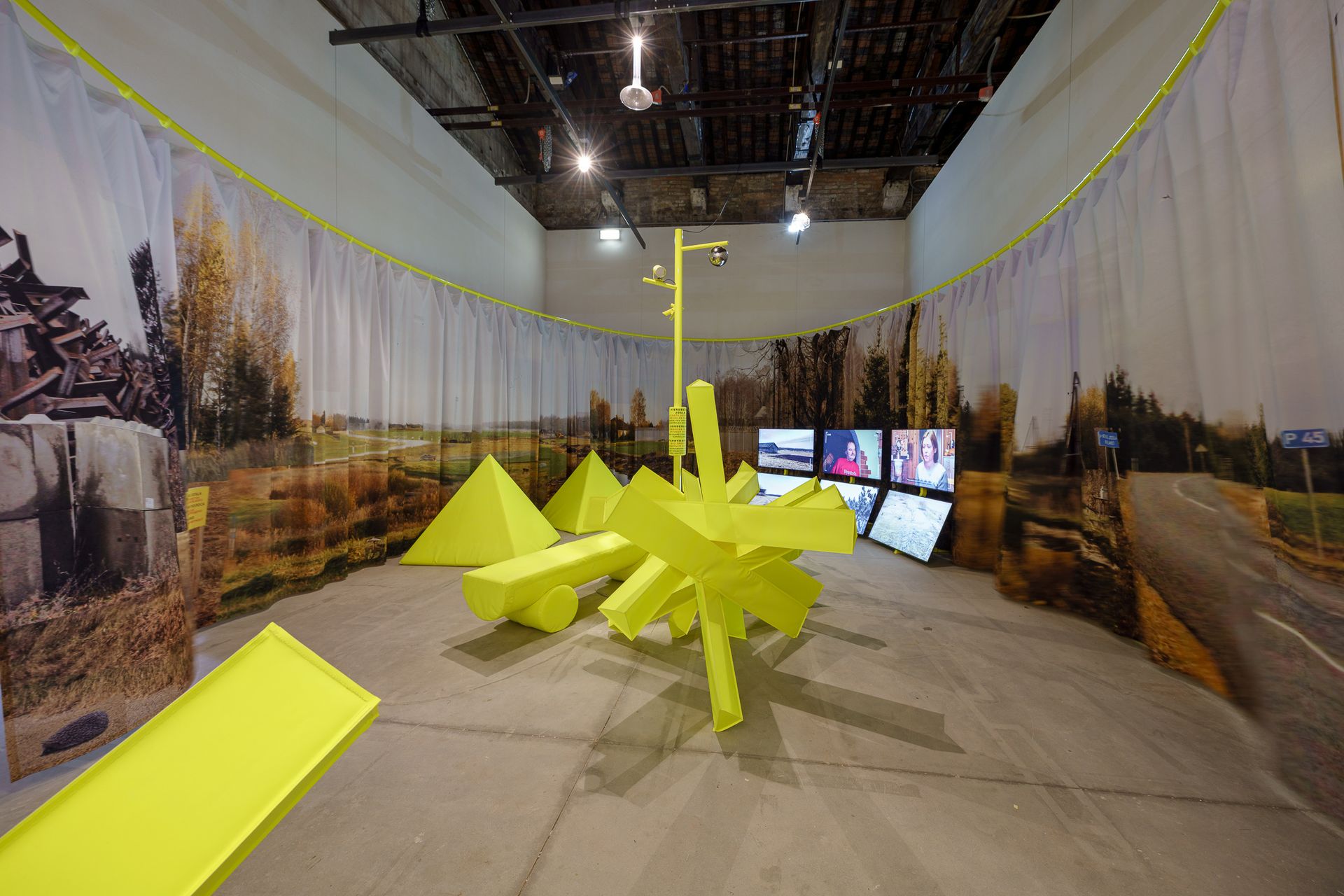
In their national pavilion, the Latvians are exploring what it means to live on 'NATO's external border in times of geopolitical conflict.' Curated by Liene Jākobsone and Ilka Ruby, and designed by Sampling and Nomad architects, the installation looks at both spatial and social aspects of this context - and what it signifies for the country and its neighbours.
German Pavilion
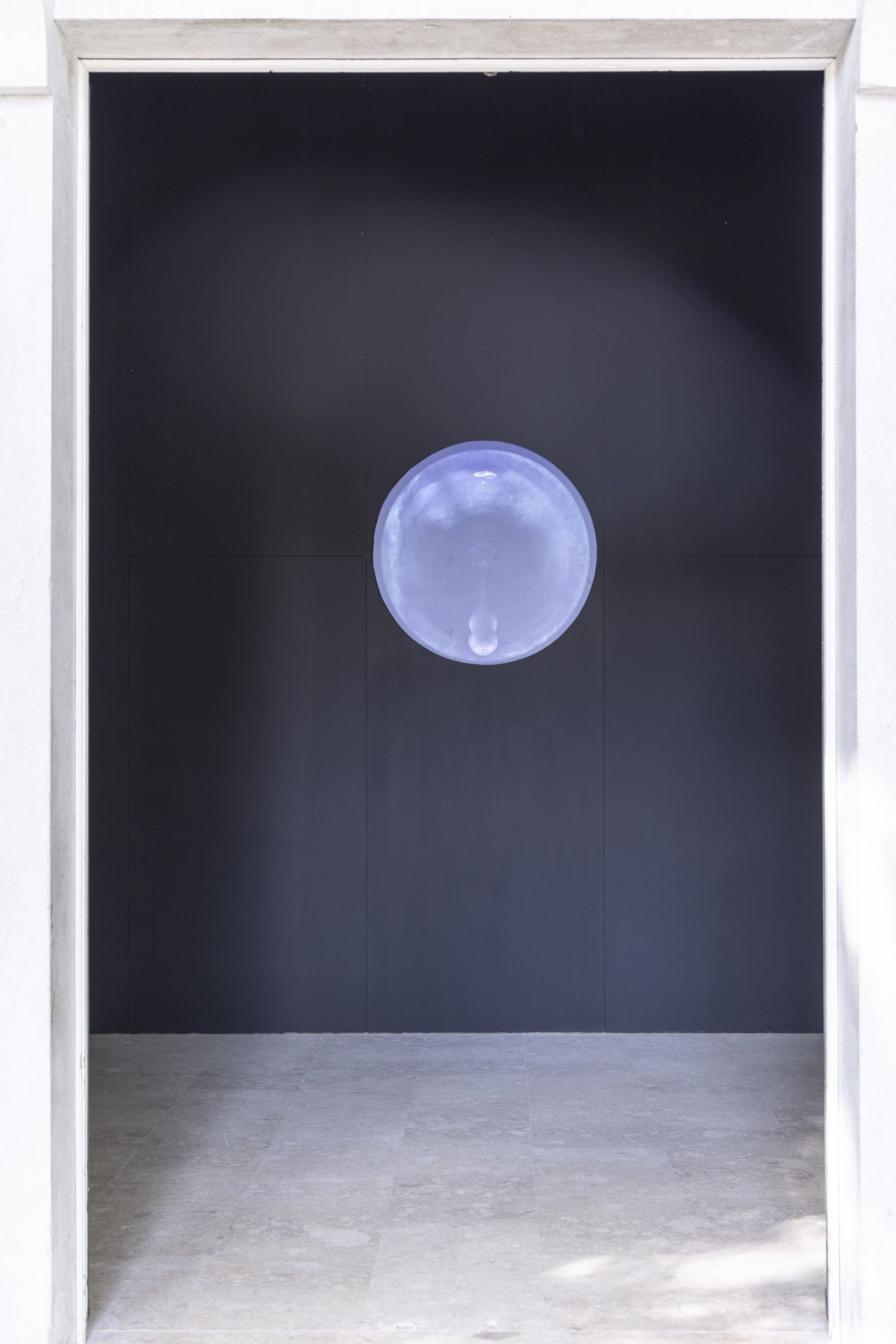
Germany looks at its pavilion as a call to urgent action. The installation, curated by Nicola Borgmann, Elisabeth Endres, Gabriele G. Kiefer and Daniele Santucci, is an examination of what climate change does to urban life and a city's ecosystems. Titled 'Stresstest', the display zooms in on the rising heat levels in our urban spaces. 'This endangers not only the social life and productivity of the city, but also the health and survival of its residents. Currently, the urban population is already exposed to higher risks of dehydration and cardiovascular diseases; the number of heat deaths is growing,' writes the team.
Uzbekistan Pavilion
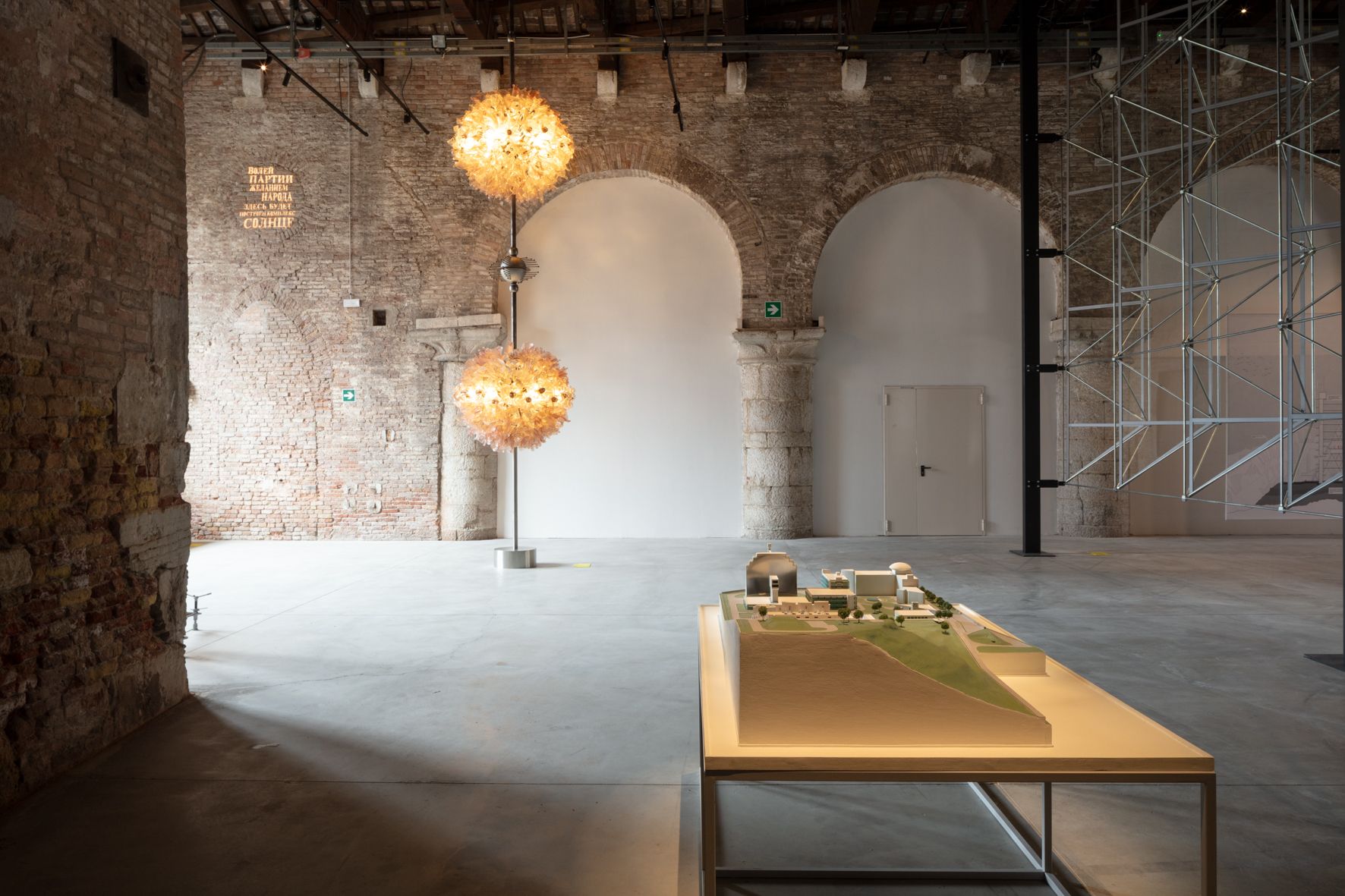
Heliocomplex Sun, solar furnace, process tower, Tashkent, Uzbekistan, 2021
Architecture studio GRACE coordinates this year's pavilion of Uzbekistan and reflects on the country's, and Tashkent's, modernist legacy. A focus on the The Sun Institute of Material Science, which is also known as the Sun Heliocomplex and was built in 1987 near Tashkent, makes a case study for an installation that looks at narratives of sustainability, heritage and preservation, and the duality of old and new.
Iceland Pavilion
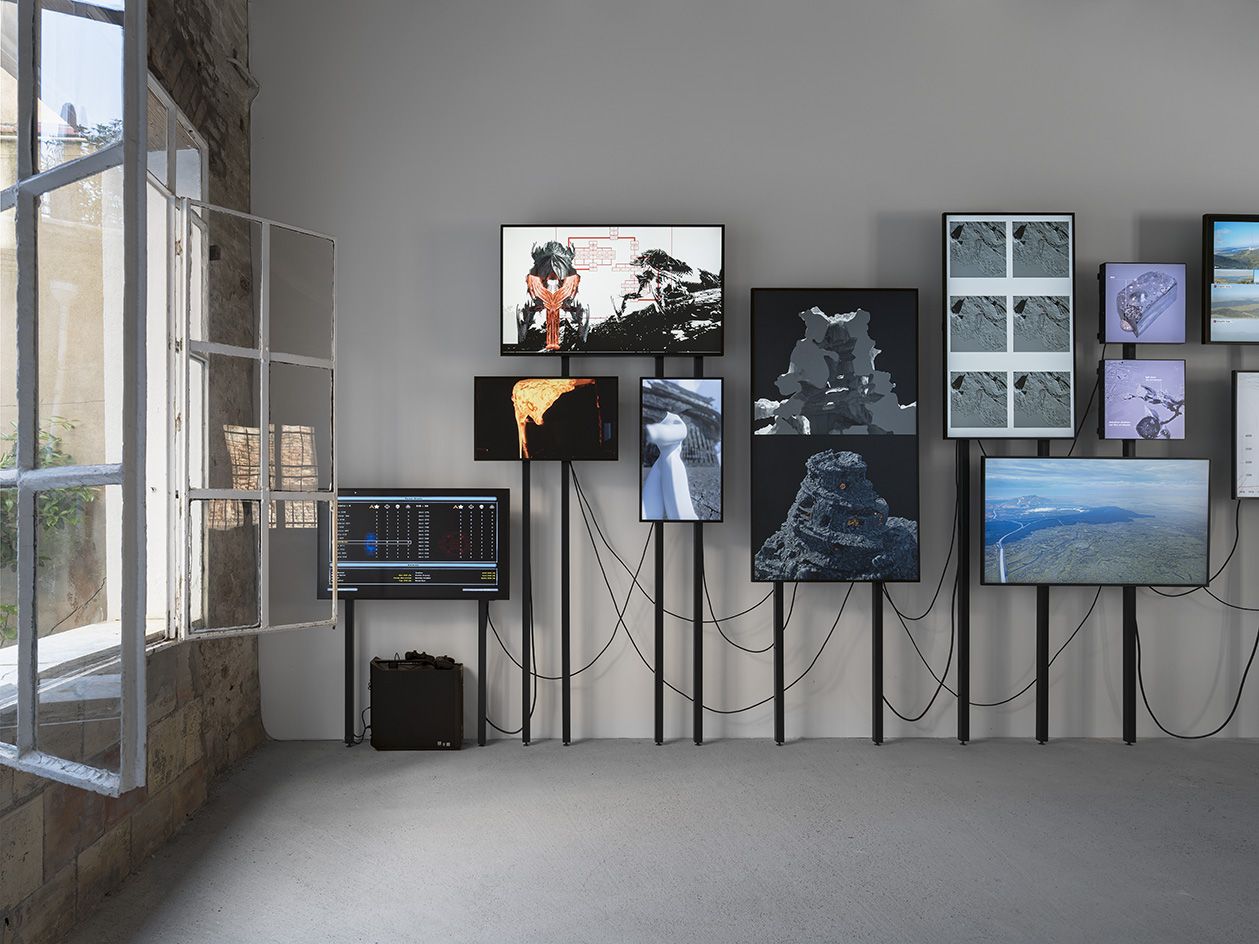
Iceland is entering a new eruptive era. Since 2021, heightened volcanic activity around the Reykjanes Peninsula, just 22 miles from Reykjavík, has captured global attention. For local architect Arnhildur Pálmadóttir, it represents untapped potential - and a fresh take on making the most of hyper local, natural materials that can be used in novel and exciting ways in construction. This year, Pálmadóttir’s Lavaforming project will take centre stage at Iceland’s national pavilion during the 19th Venice Architecture Biennale. Set in a former fire station building owned by pioneering glass makers Berengo Studio, the pavilion will transport visitors to the year 2150, when Icelanders have harnessed the power of lava—just as they did geothermal energy 200 years earlier—to construct cities without harmful mining or reliance on non-renewable energy.
Romanian Pavilion
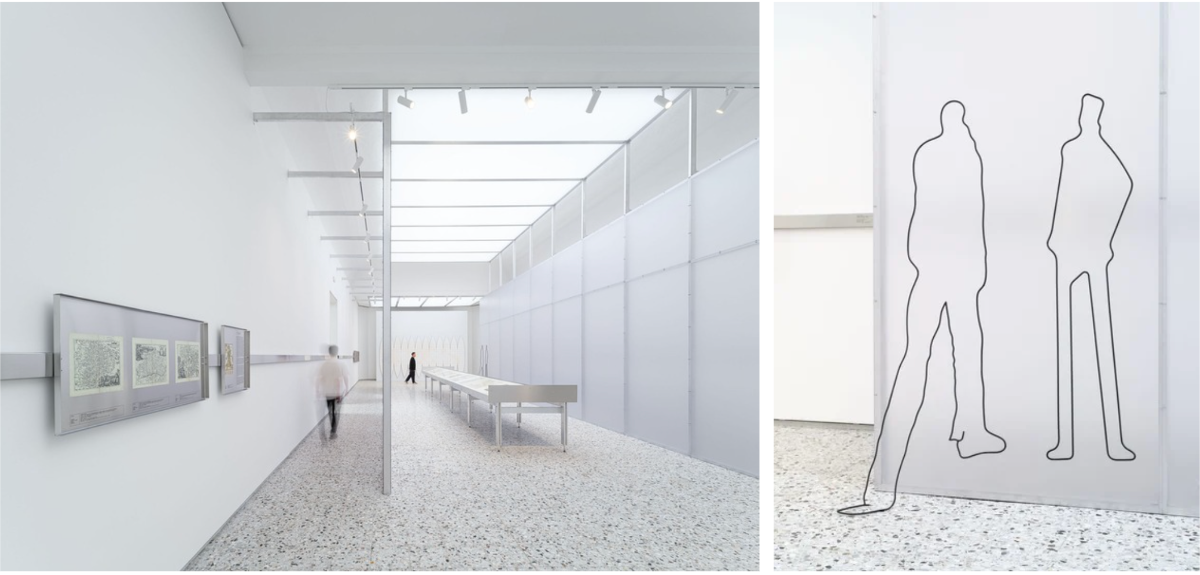
Vasile Mitrea, Drawing of the Veterinary Medicine Pavilion of the Agronomic Institute (Cluj), 1965
The Romanian participation is titled Human Scale. The exhibition curated by Cosmina Goagea is connected to a research project by artist Vlad Nancă and Bucharest-based architecture studio Muromuro, and is conceived to highlight notions of 'intelligence' in all its forms - natural and artificial, human and not. Nancă said on the subject of the installation: 'Humans are the unifying element in architectural drawings, transcending time. By looking at how people are drawn throughout the 20th century, we hope to underline their relevance and centrality to architecture in the 21st century, challenging visitors to look at our built environment in a different way and think about how architecture works for the people.'
Togo Pavilion
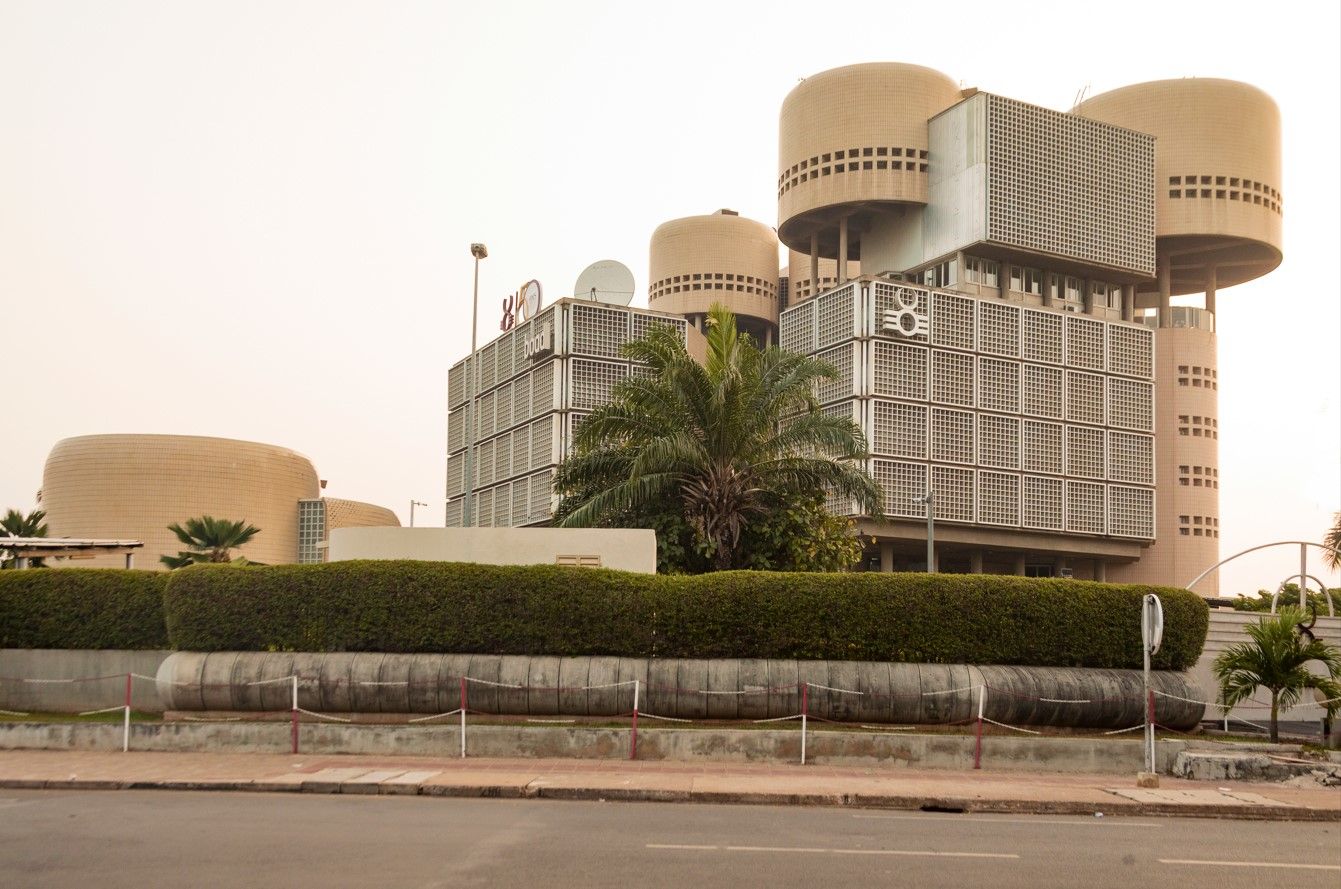
Brutalist architecture in Togo, the BOAD building was part of 'architecture encounters' at Palais de Lome, an event discussing themes of heritage in the country that took place at the end of last year
This year marks the very first participation of the Republic of Togo at the Venice Architecture Biennale. The display, titled Considering Togo’s Architectural Heritage, is commissioned by Sonia Lawson, Founding Director of Palais de Lomé and curated by Studio NEiDA (the studio is headed by architect Jeanne Autran-Edorh and curator Fabiola Büchele). Traditional construction techniques and external influences of all kinds collide in the country's rich architectural tapestry, which the pavilion hopes to explore. NEiDA's founders say: 'Togo’s architectural heritage, which spans ancient clay structures to complex histories and outlandish modernist experiments, is an incredible source of inspiration for our work. This built legacy—at times ingenious, at times eccentric—is a powerful guide for future architectural approaches that are contextual and climate compatible.'
Ukraine Pavilion
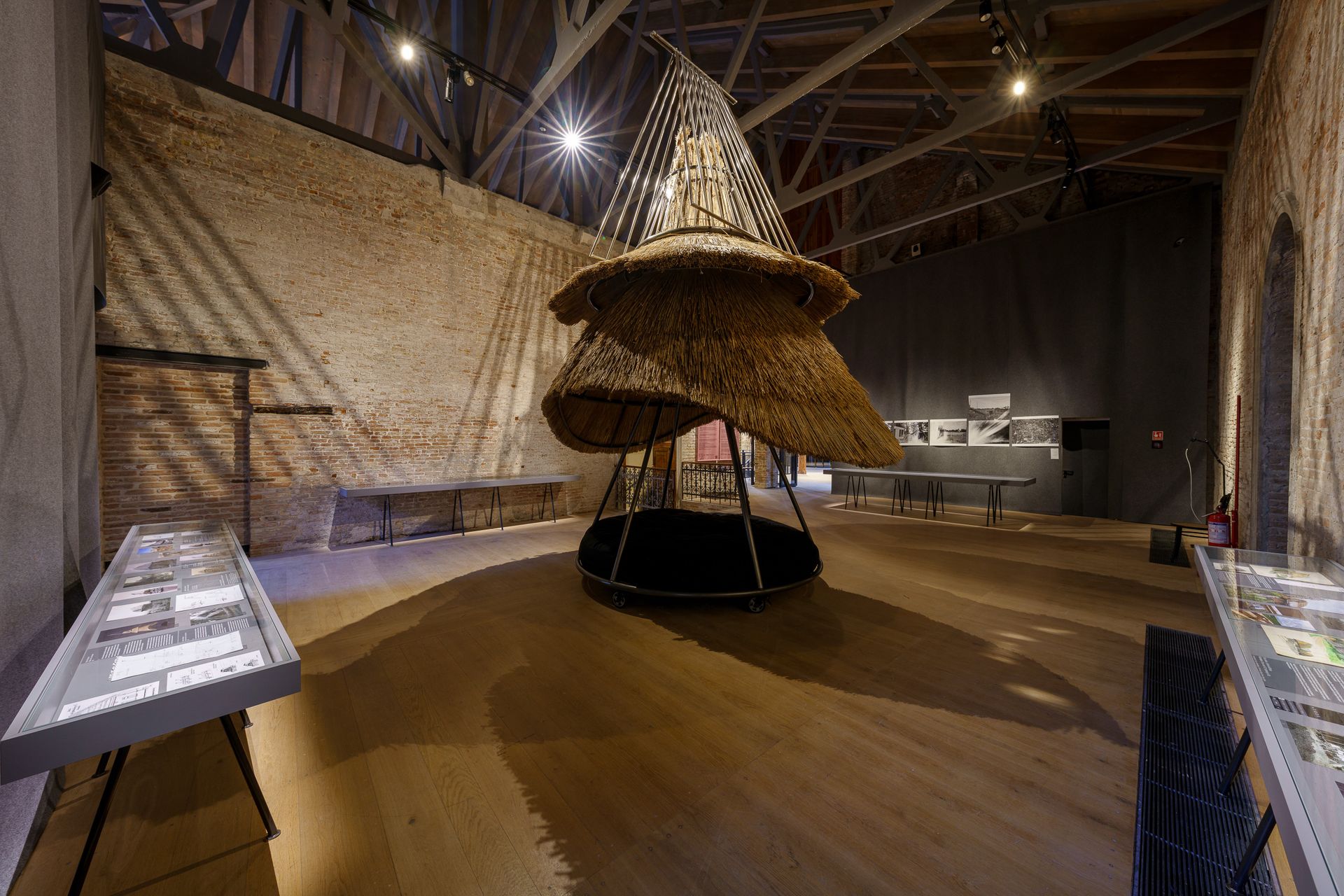
Designed by architect Bogdana Kosmina together with curators Michał Murawski, and Kateryna Rusetska, the Ukrainian pavilion is titled DAKH (ДАХ): Vernacular Hardcore, and zooms in on the concept of DAKH, which means “roof” in Ukrainian - symbolising a shelter, symbol of care, but also the first point of contact during an airstrike.
Albanian Pavilion
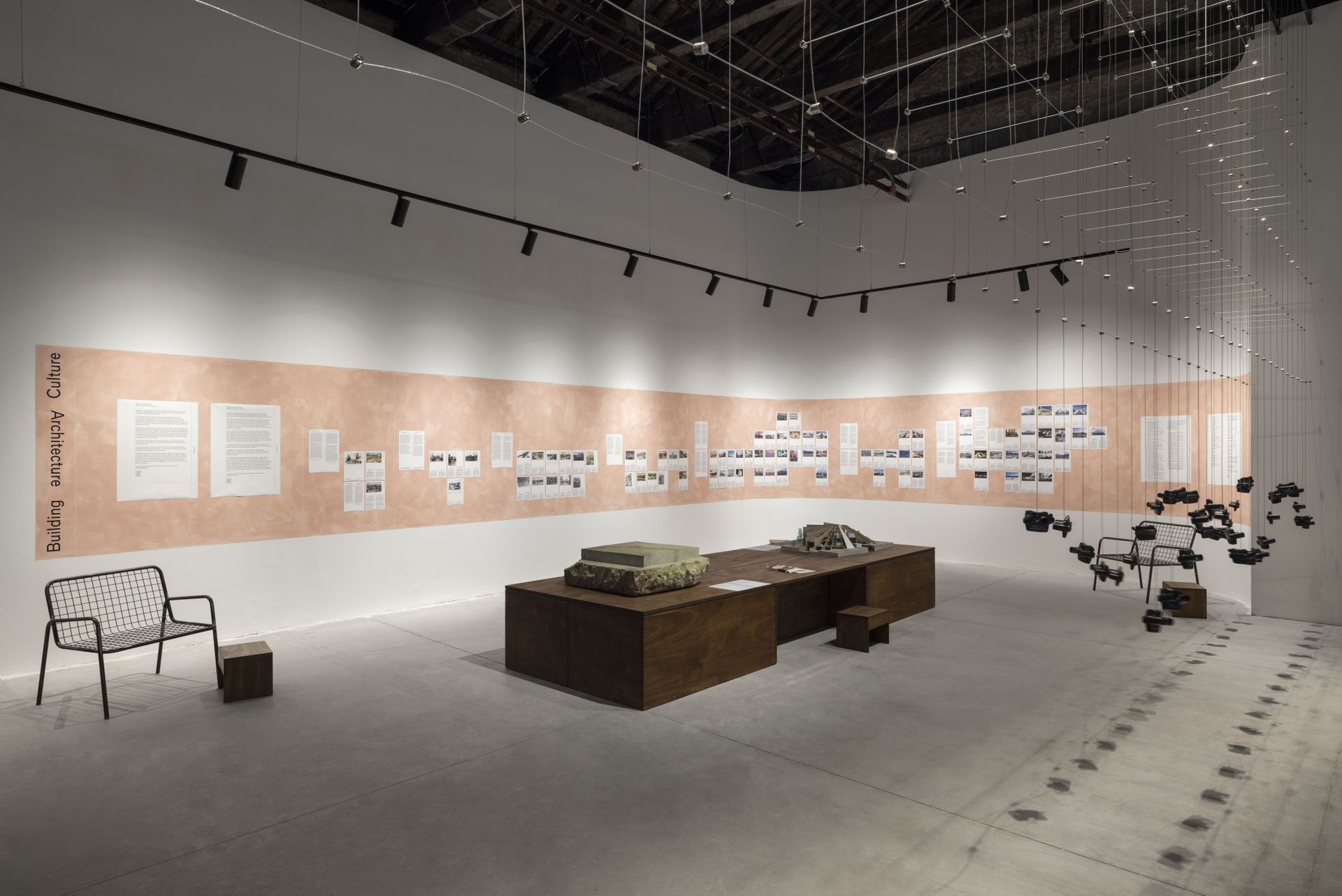
Portuguese firm OODA is particularly active in Albania - a country currently undergoing huge transformation - with eight current projects in development. There and more will be featured in the Albanian Pavilion this year. 'This is architecture as cultural diplomacy,' explains Blendi Gonxhja, Albania’s Minister of Economy, Culture and Innovation, who commissioned the pavilion. 'Our buildings aren’t just structures - they’re negotiations between individualism and collective memory, between rapid development and our stunning natural landscapes.'
Chilean Pavilion
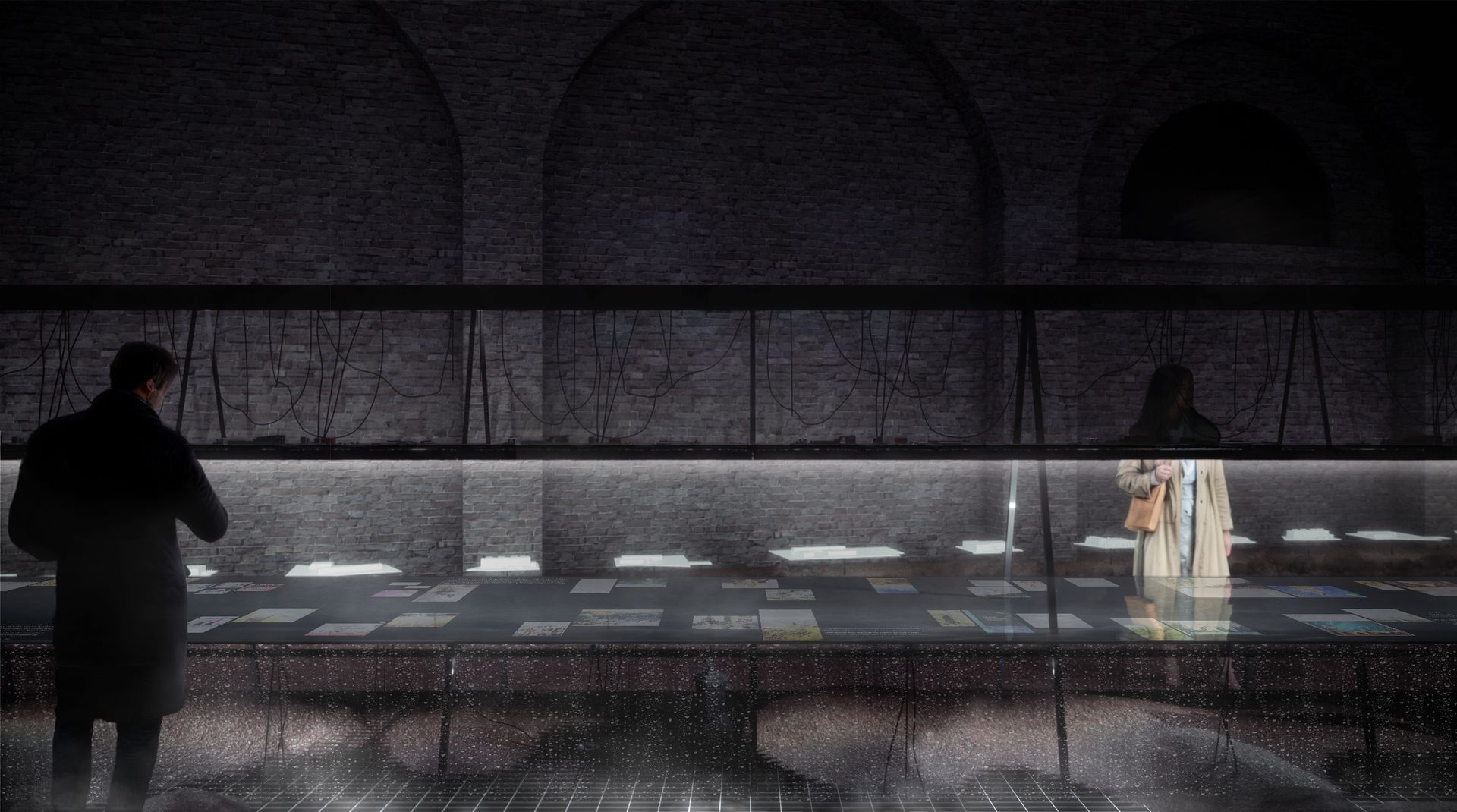
Titled Reflexive Intelligences and curated by architects Serena Dambrosio, Nicolás Díaz Bejarano, and Linda Schilling Cuellar, the Chilean Pavilion puts the spotlight on what is often overlooked. The installation, a large, open 'working table,' looks at materials and territorial practices, as well as ecological impact and the use of AI, especially within Latin American contexts.
Holy See Pavilion
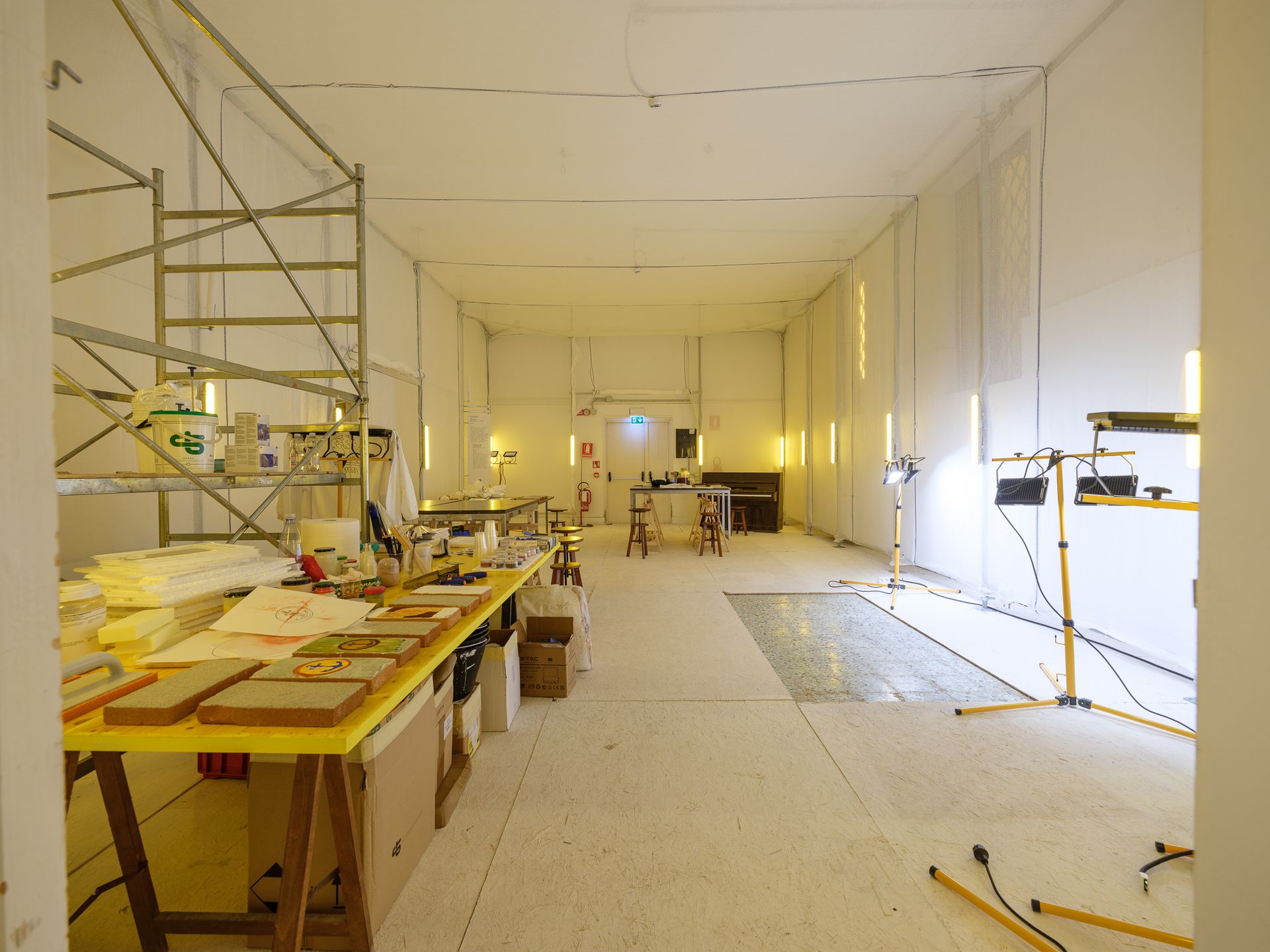
'Opera Aperta' is the title of the Holy See Pavilion, which received a special mention at the 19th biennale awards. The judges praised it in their citation: 'Recalling a book by Umberto Eco 1962, the pavilion Opera aperta invites the visitor to participate in the production of meaning. This special mention recognizes the creation of a space for exchange, negotiation, restoration. Opera aperta will revitalize an existing deconsecrated church with repair occurring at different levels involving a big range of skills of labour. As the team calls it, “a living practice of good care and collective care”. Opera aperta creates space for cultural exchange.'
Mexico Pavilion

Architecture studio Pedro y Juana's work exists not only in architecture’s arguably most traditional form – building design – but also in everything this touches: the spaces in-between scales and the dynamics between all its aspects. Their participation in Venice Architecture Biennale 2025’s Mexico Pavilion, which will be shown in the Corderia del Arsenale, is a case in point. Forming a collective with two more architecture offices (Estudio IUAPdA and Locus), graphic design agency Estudio María Marín de Buen, plant experts Lucio Usobiaga Hegewisch and Nathalia Muguet, and Miguel Ángel Vega Ruiz, Xavier Delgado González y Shantal Gabriela Haddad Gómez of lighting consultants ILWT, the exhibit will explore Mexico’s chinampas – an ancient agroforestry system of growing crops on small plots within wetlands. It was first developed by the Nahua people, in particular the Xochimilicas (probably 900-1200 bc). Examples still operate today, even within the urban fabric of Mexico City.
Lebanese Pavilion
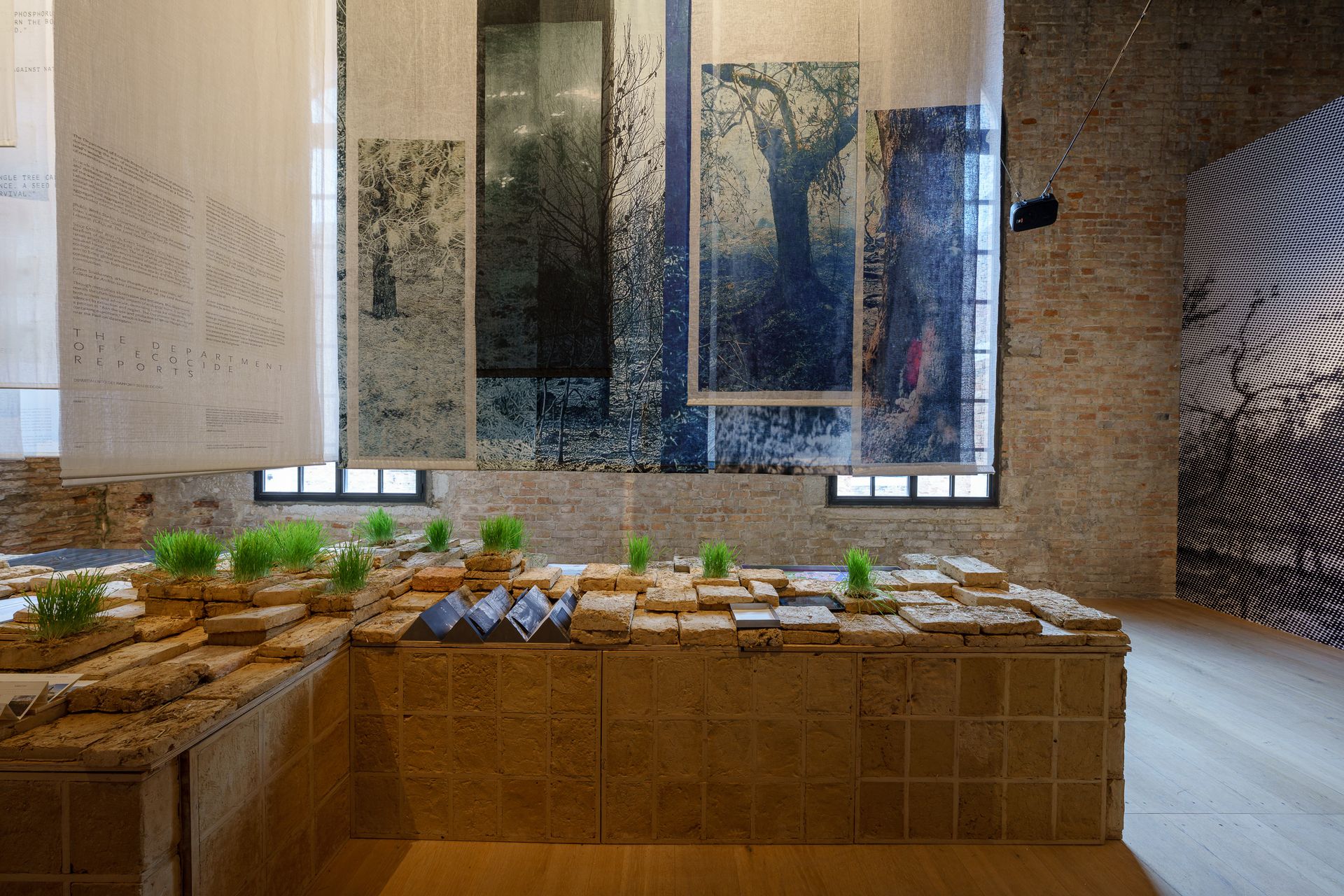
The Lebanese participation is curated by Collective for Architecture Lebanon (CAL), a non-profit organisation co-founded in 2019 by Shereen Doummar, Edouard Souhaid, Elias Tamer and Lynn Chamoun. Titled 'The Land Remembers', the display is more than an exhibition, but also a call to action: 'how can we heal the land to build for future generations?' the team asks.
Turkiye Pavilion
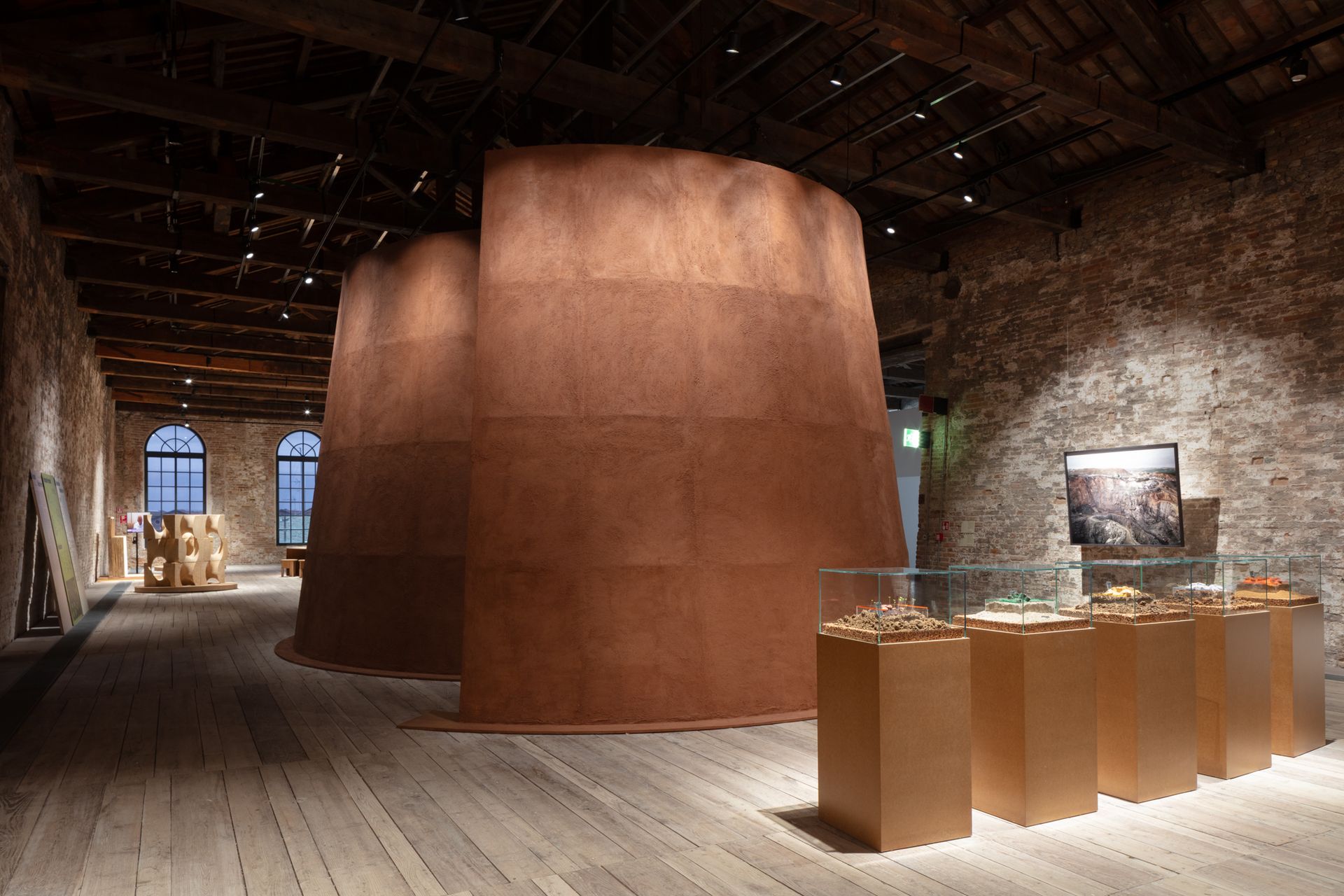
The Turkish exhibition, Grounded, is curated by Ceren Erdem and Bilge Kalfa. Looking at our ground - literally the soil around us - the team seeks to explore how the matter serves as a 'carrier of ecological and cultural memory, presenting it as an ecosystem that embodies natural intelligence and serves as a living archive and supportive model. The exhibition emphasises how this often- overlooked element provides crucial insights into past civilisations and ecological systems, and highlights the potential for coexistence with nature.'
Serbian Pavilion
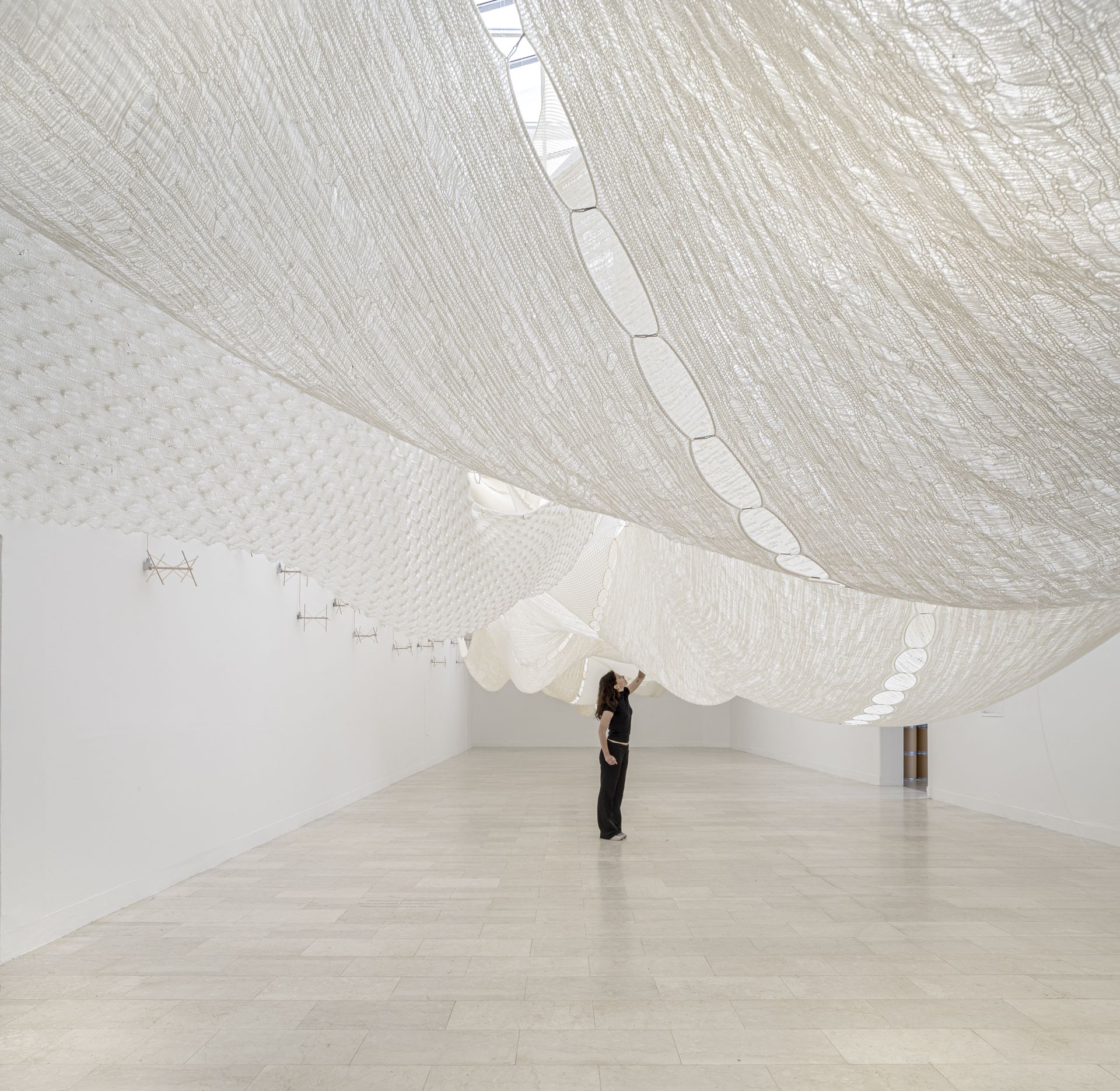
The Serbian Pavilion in Venice presents 'Unravelling', an installation made of pure wool. 'Unravelling weaves common threads between the delicate Serbian knitting tradition and the discipline of architecture in a contemporary expression. Hanging from the roof in catenary curves, the knitted segments—1.2 x 5 meters each—are suspended in a textile landscape without a fixed shape or state,' the organisers explain. Ephemeral and unexpected, the fabric of this display is a multidisciplinary effort aimed at offering a poetic note.
Estonian Pavilion
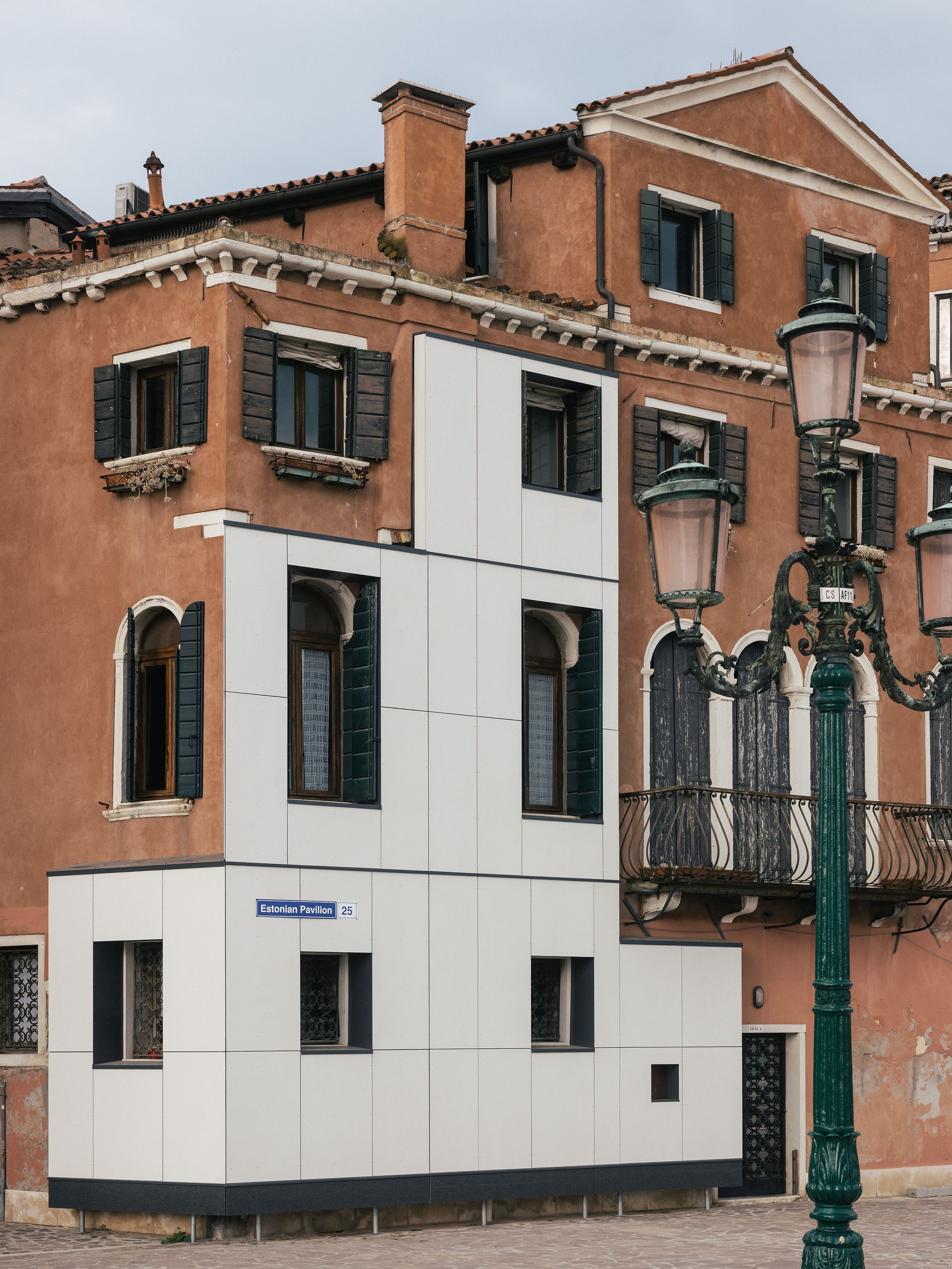
'Let me warm you,' the pavilion of Estonia at the Venice Architecture Biennale 2025 is curated by architects Keiti Lige, Elina Liiva, and Helena Männa - and tackles the seemingly mundane topic of building insulation. To highlight the question of whether the current drive for insulating buildings to make them more energy efficient is a valid tool in fighting climate change, the Estonian Pavilion has covered the facade of a Venetian building with insulation panels. 'With this project, we question whether insulation is just a bureaucratic checkbox for meeting EU targets or a real chance to tackle social and spatial challenges. It exposes the clash between bold global ambitions and the everyday realities of people navigating collective decisions,' say the curators.
Australian Pavilion

The Australian Pavilion zooms in on the theme of 'Home.' A hands-on, sensory display created by First Nations designers explores themes of belonging and home. 'HOME is a generous and timely offering to the Venice Architecture Biennale that will welcome visitors as active contributors and participants,' says Emily McDaniel, co-creative director. The display, made of earth and plaster, offers a serene and tactile experience.
Uruguay Pavilion
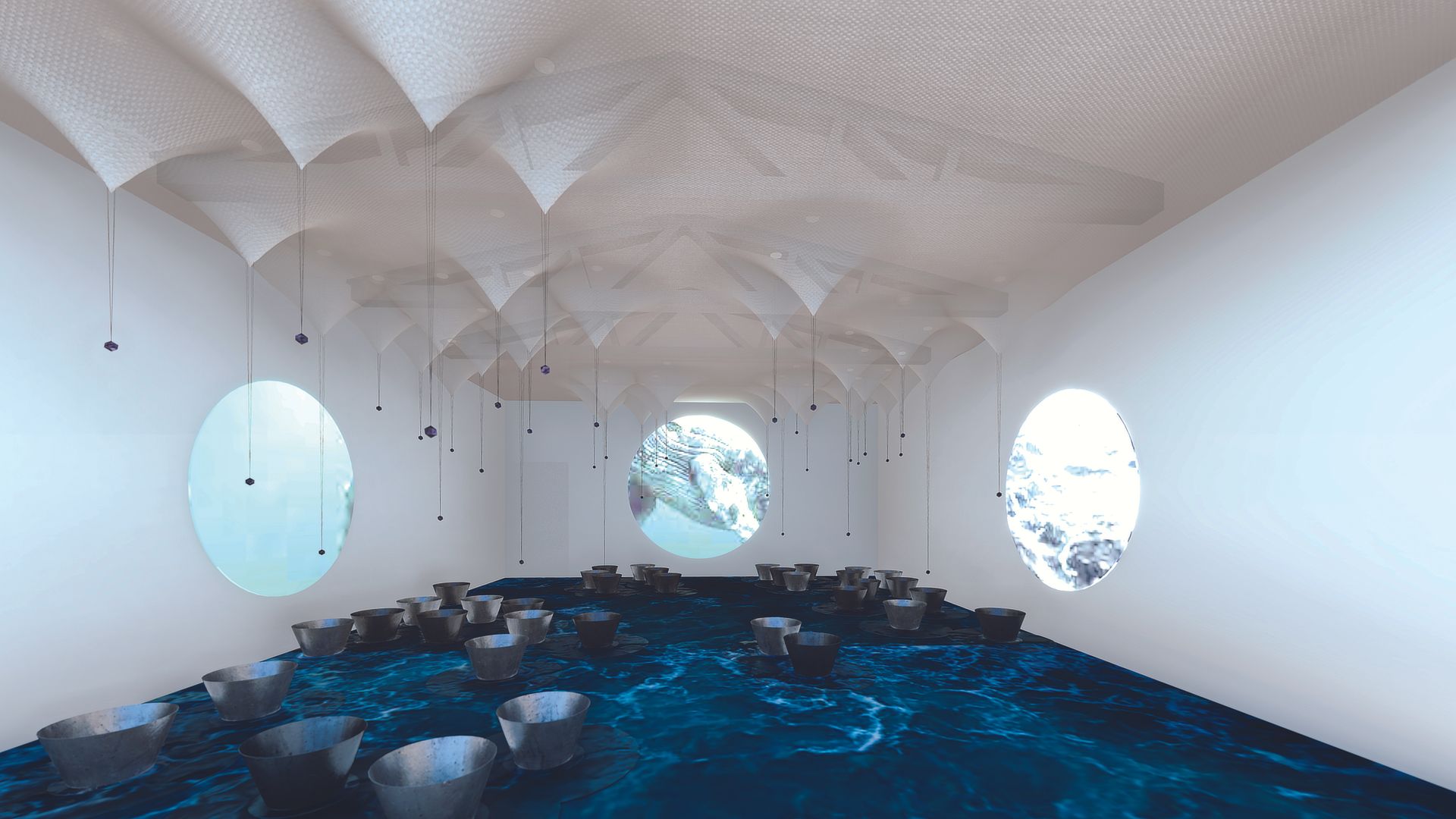
Uruguay and its contribution, '53.86% Uruguay, país agua', looks at water and its role in the country's territory, culture and history. Maru Vidal, national director of Culture said: 'Uruguay has a maritime sovereignty that exceeds its land area and an extensive water network, which places it at the forefront of today's global challenges. Extreme weather events, tensions in water management and profound transformations in urban and rural ecosystems require new approaches. Urbanisation has traditionally relegated water to a secondary role, but in the face of climate change it is necessary to rethink these paradigms and recognise water as a central element for our future.'
Korea Pavilion
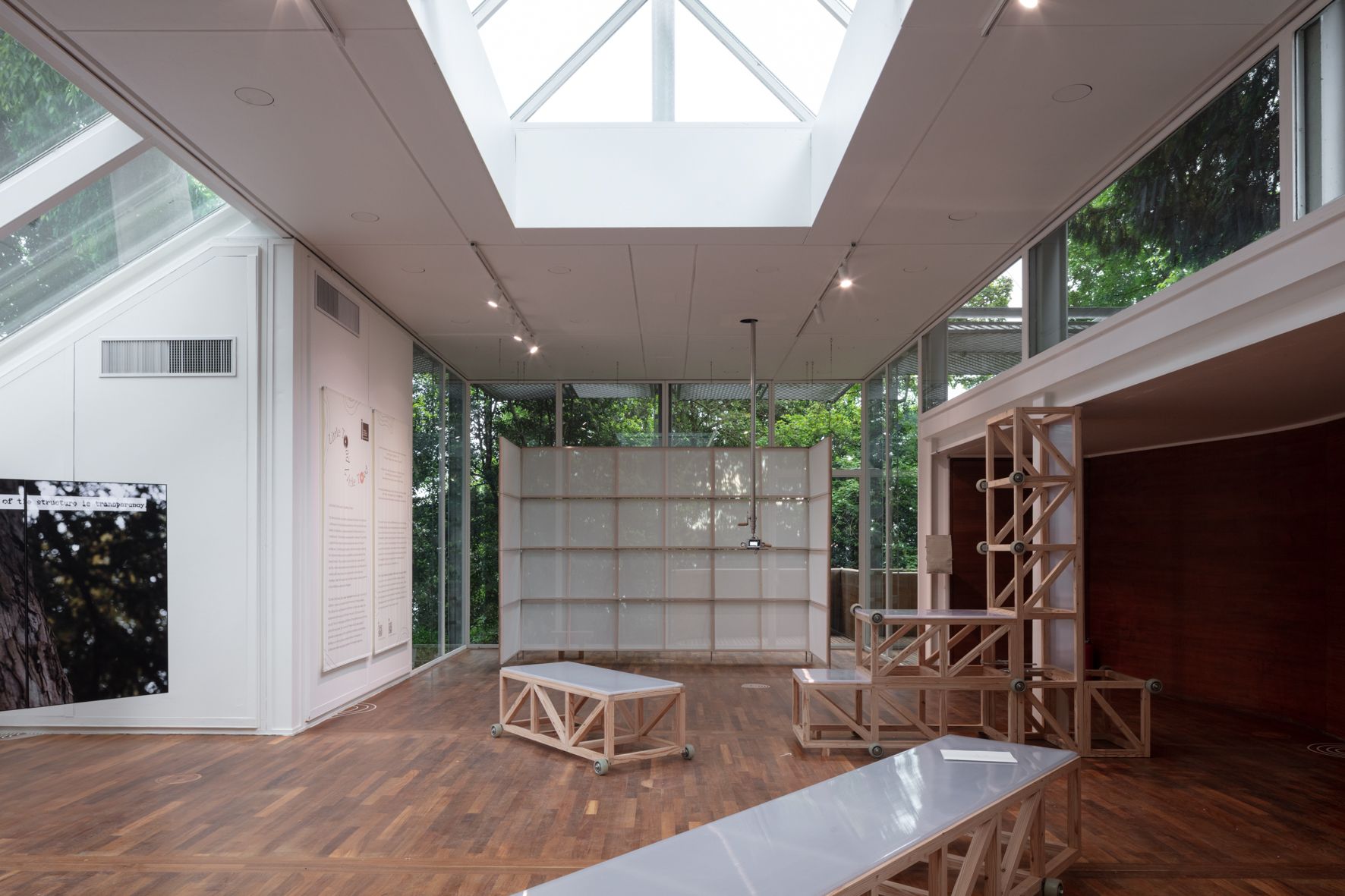
The Korean Pavilion is calm and spacious, furnished with cushions, stool and information to help the visitor explore the wildlife - and non-human creatures in the space of the Giardini. Curated by Curating Architecture Collective - Kim Hee-jung, Jung Sung-kyu and Chung Da-hyoung - this display is all about gracefully embracing and respecting our surroundings.
Spanish Pavilion
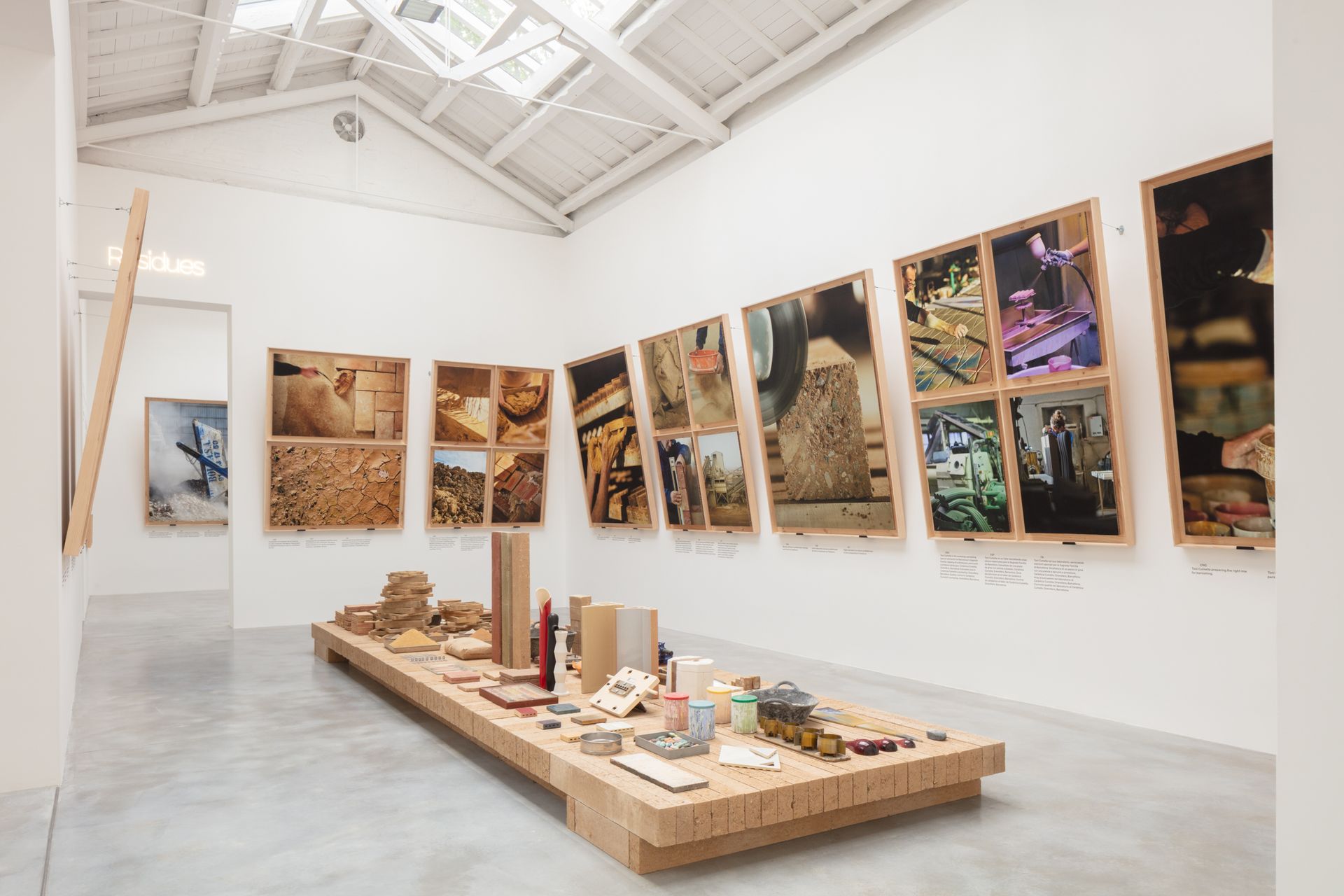
Rich is photographic material as well as ideas, the Spanish Pavilion feels full with a layered display - yet manages to also be clear and accessible. The concept explores themes of decarbonising and strategies that projects, clients and architects in Spain followed in order to bring them one step closer to a sustainable architecture approach. It was curated by Manuel Bouzas and Roi Salgueiro, and is titled 'Internalities: Architectures for Territorial Equilibrium.'
Greek Pavilion
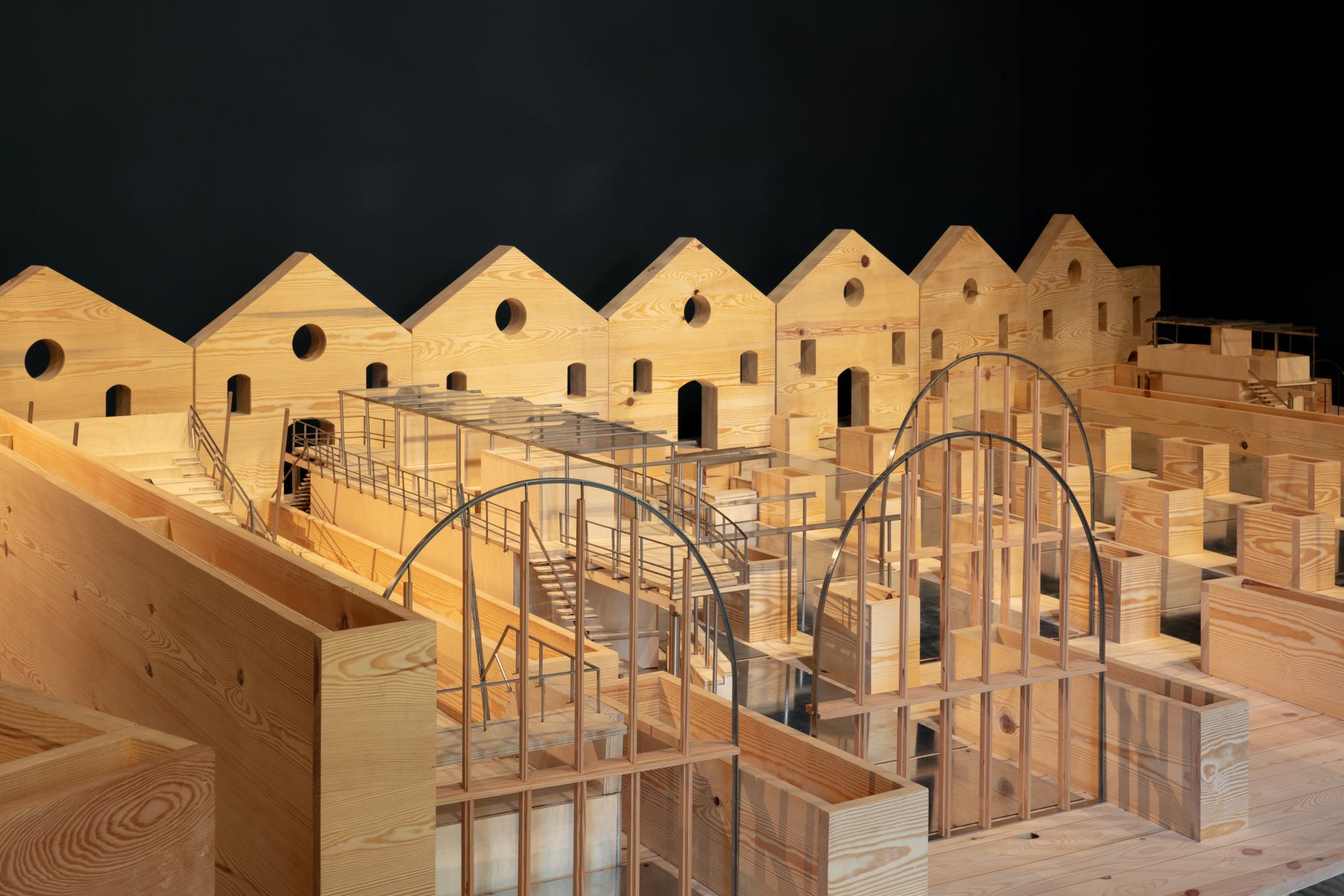
Looking at the reuse, exploration, meaning and new life of historical, Venetian shipyards of Chania and Heraklion in Crete under the theme 'IntelligensHistorica,' the Greek pavilion is curated by Nikos Skoutelis, Elisabetta Molteni, Klimis Aslanidis, Antonis Karamitrou, and Anna Tsitonaki.
Polish Pavilion
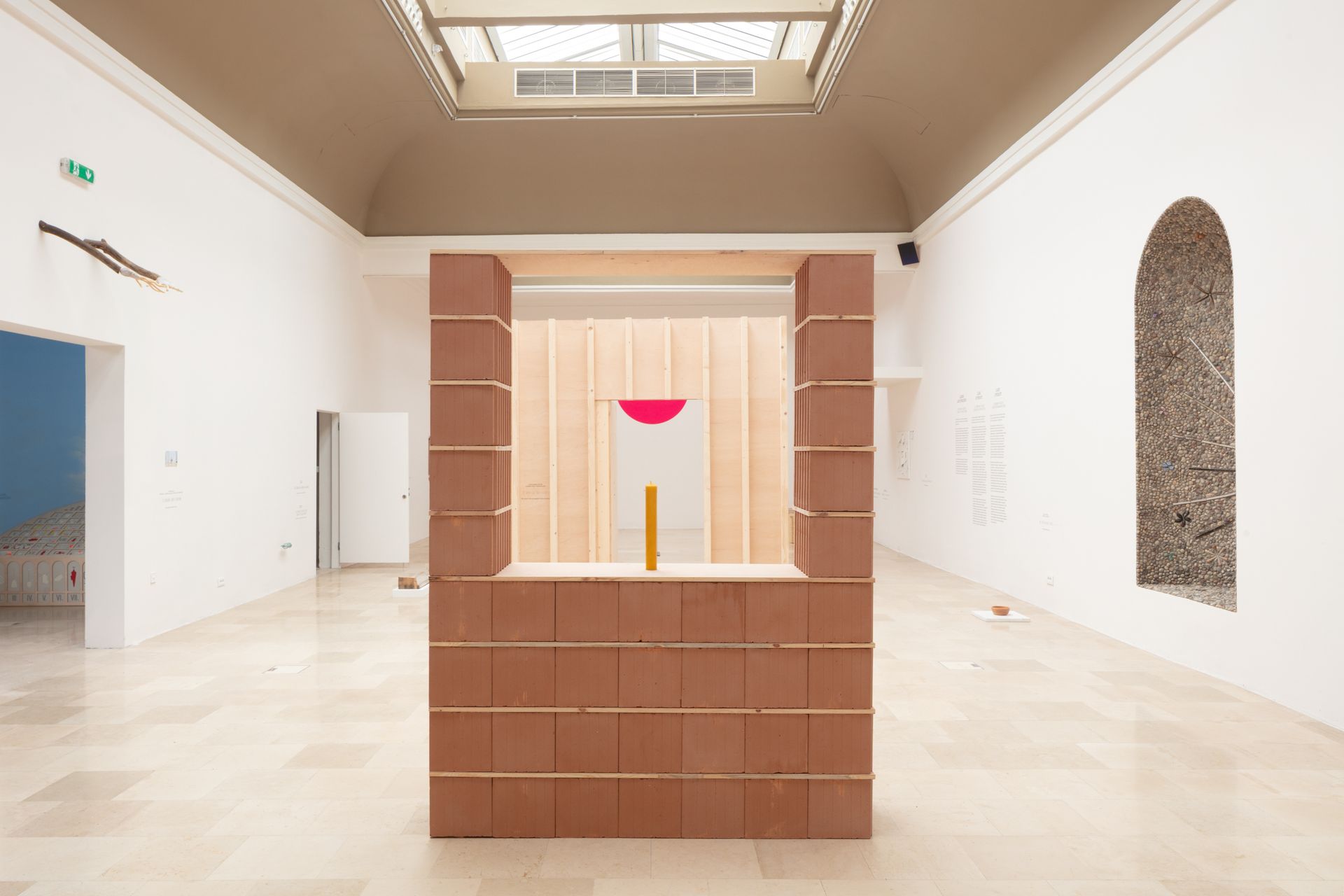
Poland is exploring notions of security with its contribution - 'Lares and Penates: On Building a Sense of Security in Architecture.' The show looks at our anxieties and what it might take to have us feel safe in our homes and society. The display was created by an interdisciplinary team, involving architect Maciej Siuda and artists Krzysztof Maniak and Katarzyna Przezwańska.
Rolex Pavilion
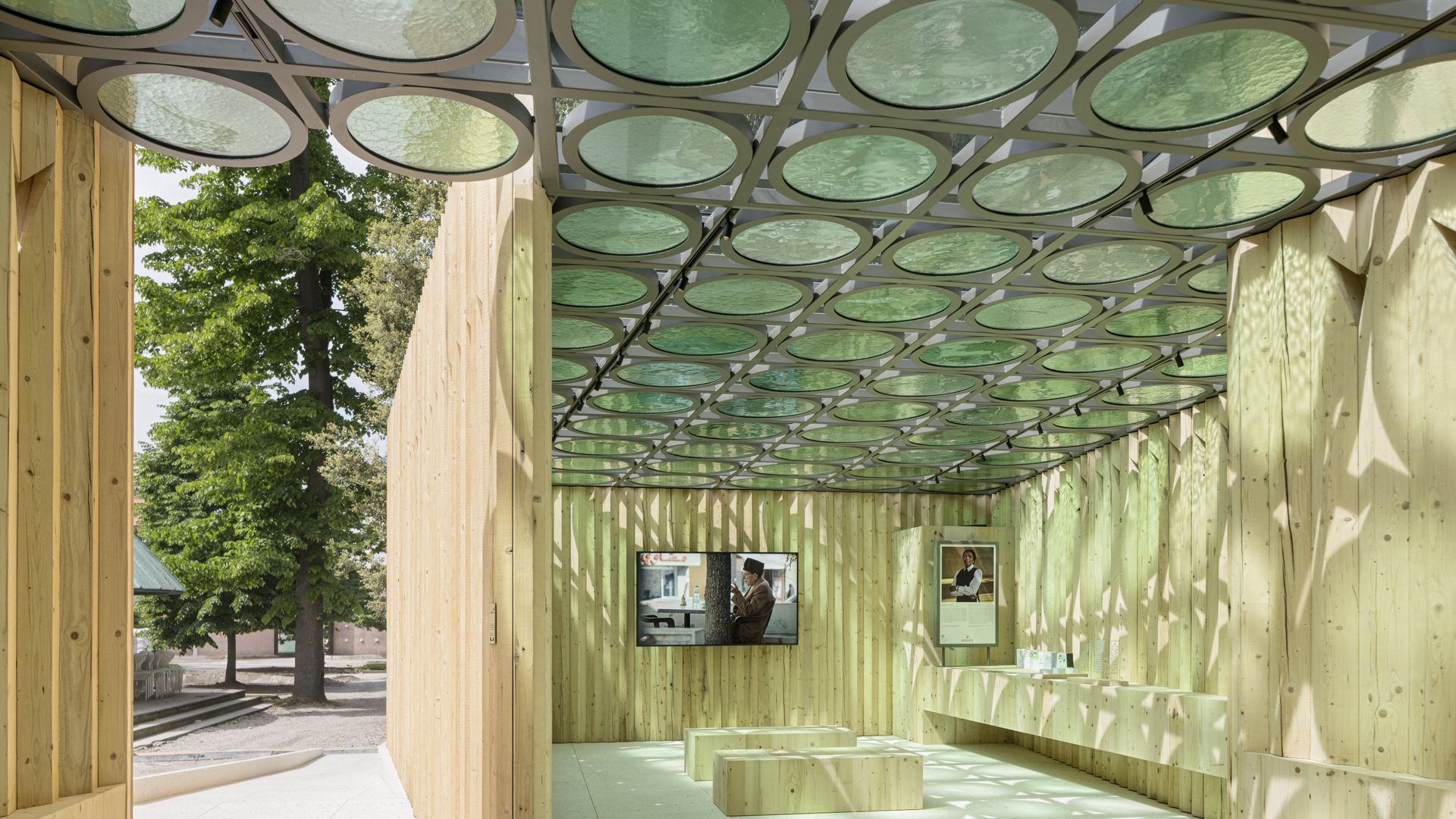
Although not a national contribution, the Rolex Pavilion is also located within Giardini. Rolex, a long-term supporter of the Biennale, has also launched a new structure this year, designed using sustainable materials and local craft by architect Mariam Issoufou.
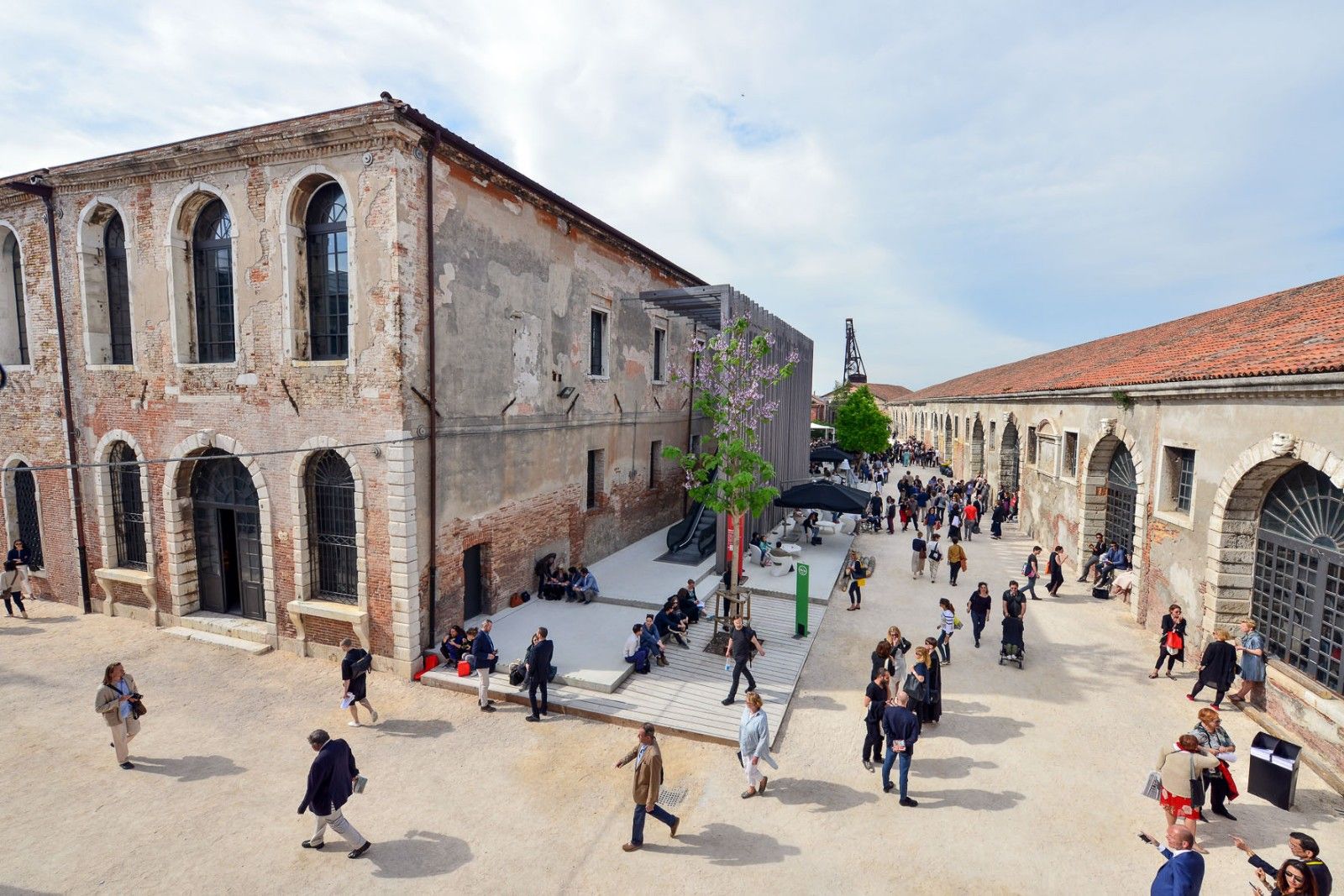
Visitors flock at the Arsenale exhibition grounds during past biennale
Collateral events
As always a rich programme of collateral and affiliated events will also be launched throughout Venice and the surrounding islands of the archipelago during the biennale. This year, they include from sustainable architecture-driven exhibitions and discussions, to previews of some of the field's most anticipated openings from later this year. The below list is comprehensive as is it rich; there's something from everyone.
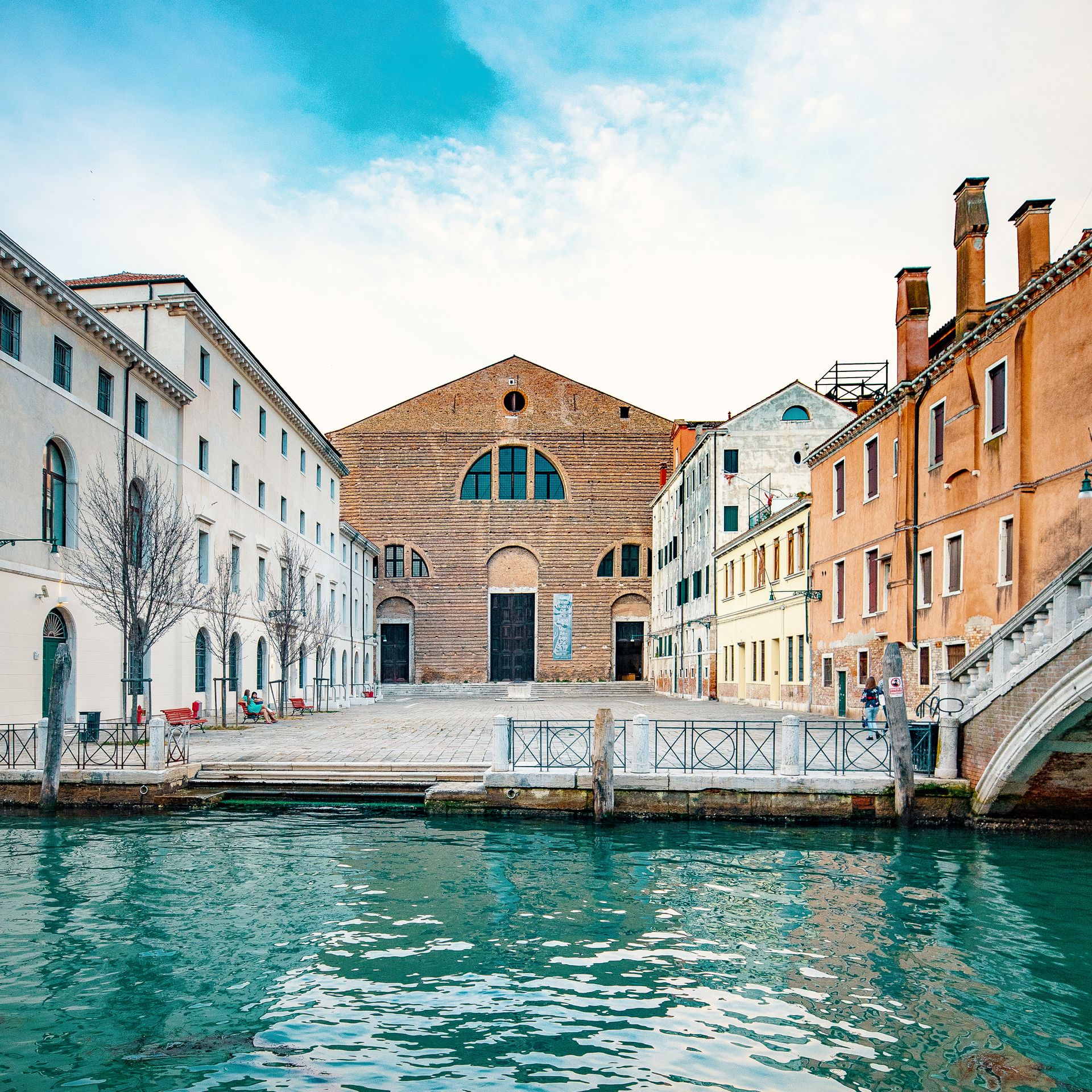
'Beyond the Prize’ features a moderated discussion hosted by the Aga Khan Award for Architecture, the Holcim Foundation Awards, the EUmies Awards, the Mies Crown Hall Americas Prize, the OBEL Award and the Ammodo Architecture Award in the TBA21–Academy’s Ocean Space in Venice. It aims to discuss architecture's role in shaping today's world and the concept of awards and prize-giving within the industry.
- Catalonia in Venice_Water Parliaments: Projective Ecosocial Architectures, organised by the Institut Ramon Llull
- Deep Surfaces. Architecture to enhance the visitor experience of UNESCO sites organised by UNESCO
- Intelligens. Talent: EUmies Awards. Young Talent 2025, organised by Fundació Mies van der Rohe
- NON-Belief: Taiwan Intelligens of Precarity, organised by the National Taiwan Museum of Fine Arts
- Parallel Worlds, Exhibition from Macao, China, organised by The Macao Museum of Art, under The Cultural Affairs Bureau of the Macao SAR Government
- Projecting Future Heritage: A Hong Kong Archive, organised by The Hong Kong Institute of Architects Biennale Foundation and Hong Kong Arts Development Council
- Rooted Transience: AlMusalla Prize 2025, organised by Diriyah Biennale Foundation
- The Fondation Cartier pour l’art contemporain by Jean Nouvel, organised by Fondation Cartier pour l’art contemporain
- The Next Earth: Computation, Crisis, Cosmology, organised by Palazzo Diedo - Berggruen Arts & Culture
- The SKYWALK by Platform Earth, organised by PLATFORM EARTH
- unEarthed / Second Nature / PolliNATION, organised by The Virginia Tech Honors College
The places, dates and tickets
The Venice Architecture Biennale 2025 will be open to the public between 10 May and 23 November 2025, including two vernissage days on the 8 and 9 May. The shows will be, as always, split between Venice's famed Arsenale and Giardini locations, with the former focused on Ratti's main showcase and the latter containing the always-rich and layered national participations in their respective, dedicated pavilions. Tickets for the main sites are available at the entrance and opening hours are 11 am - 7 pm (last admission 6:45 pm), with the venue closed on Mondays (except 12 May and 17 November).
As always more events are spread across Venice - including both independent programmes and collateral events, and national participations who may not be accommodated in the Giardini site.
The Biennale College Architettura, which launched in 2023, is also returning in 2025 for its second iteration as part of the festival's education arm. Ratti has invited students, graduate students and emerging practitioners under the age of 30 to take part and 'submit projects that employ natural, artificial, and collective intelligence to combat the climate crisis'.
Beyond the Biennale: More to see while in Venice
While not officially part of the Venice Architecture Biennale 2025, several other events and institutions launch and flaunt their offering during the big built environment festival's acclaimed vernissage. With the city abuzz with architecture enthusiasts and specialist visitors, it's a great time to open discussions, make connections and unveil news. Here's a taste of what is available around town in early May.
SMAC San Marco Art Centre
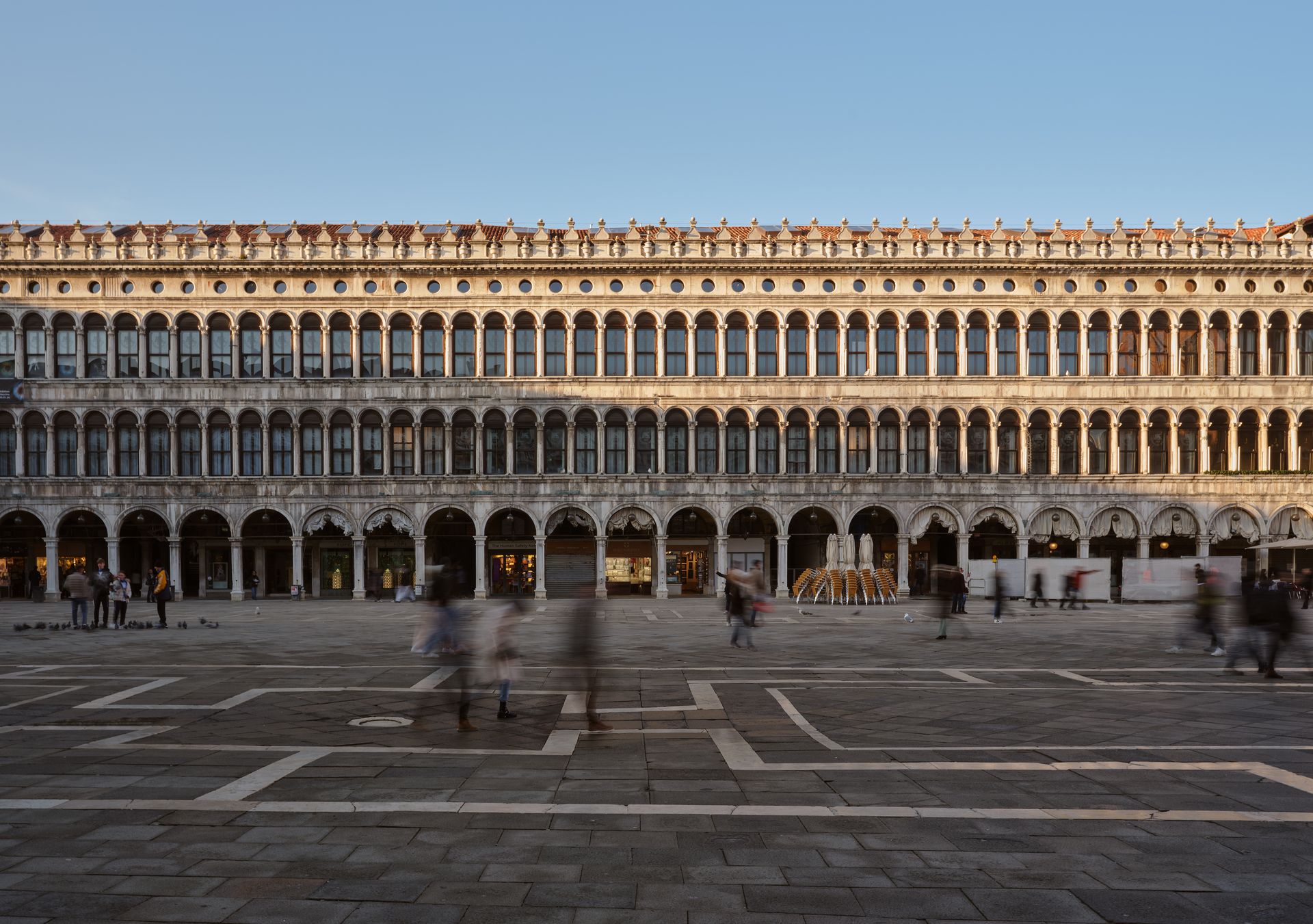
A brand new cultural space also opened this May in Venice. SMAC San Marco Art Centre is located at Venice Procuratie (recently renovated by David Chipperfield) from 9 May 2025, focusing on a rich programme blending visual arts, architecture, fashion, technology, and film. The centre's launch saw the opening of two exhibitions - both on field pioneers. Australian modern architect Harry Seidler is the subject of 'Migrating Modernism. The Architecture of Harry Seidler', and Korean landscape designer Jung Youngsun is celebrated in 'For all that Breathes on Earth: Jung Youngsun and Collaborators'.
'Diagrams' at Fondazione Prada
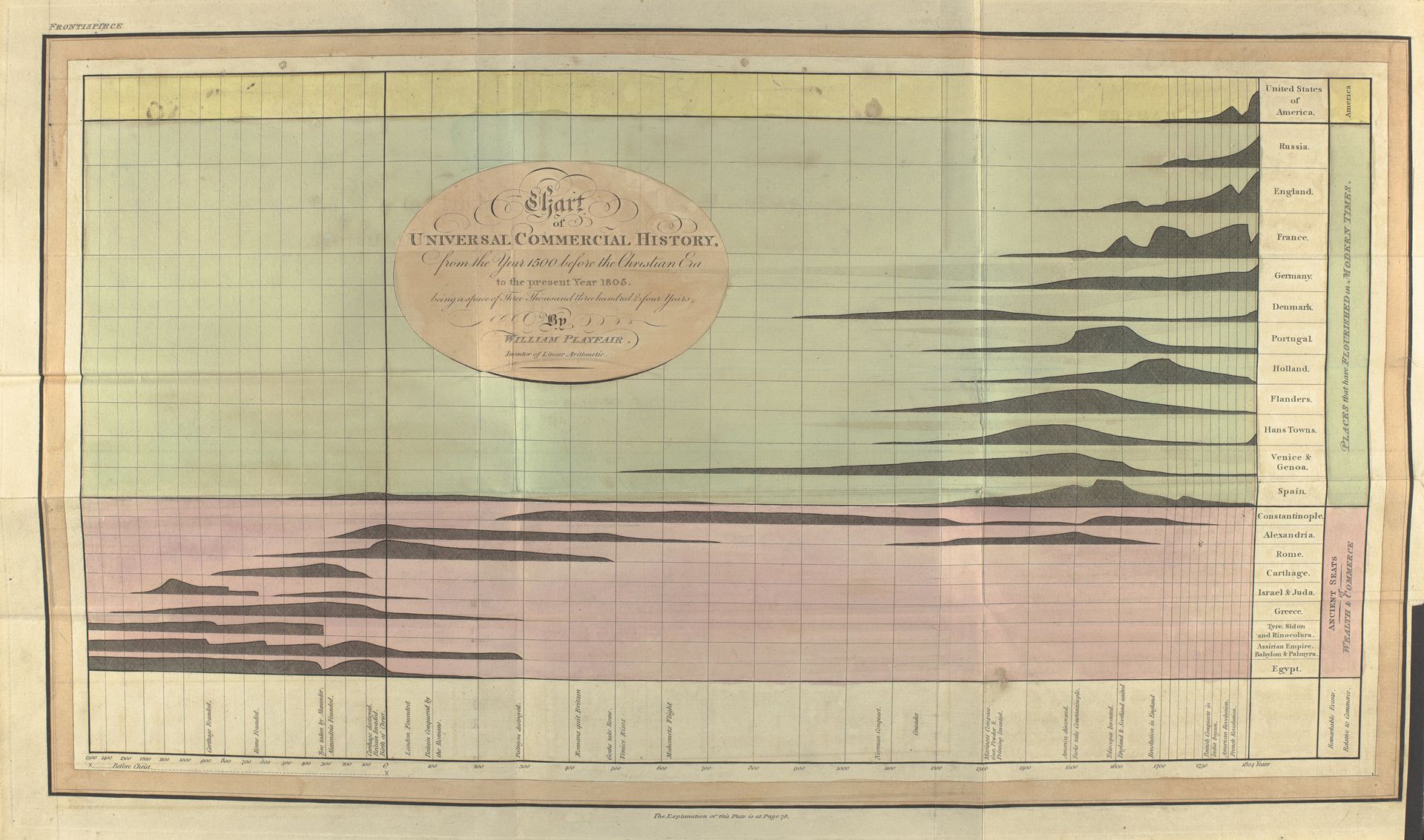
The ‘Diagrams’ show explores the wide cultural history of the diagram, beginning in the early Renaissance and coming up to the present day, an expression of OMA’s affinity for the diagram rather than examples of the firm's use of it.
'The Fondation Cartier pour l’art contemporain by Jean Nouvel' at Fondazione Giorgio Cini
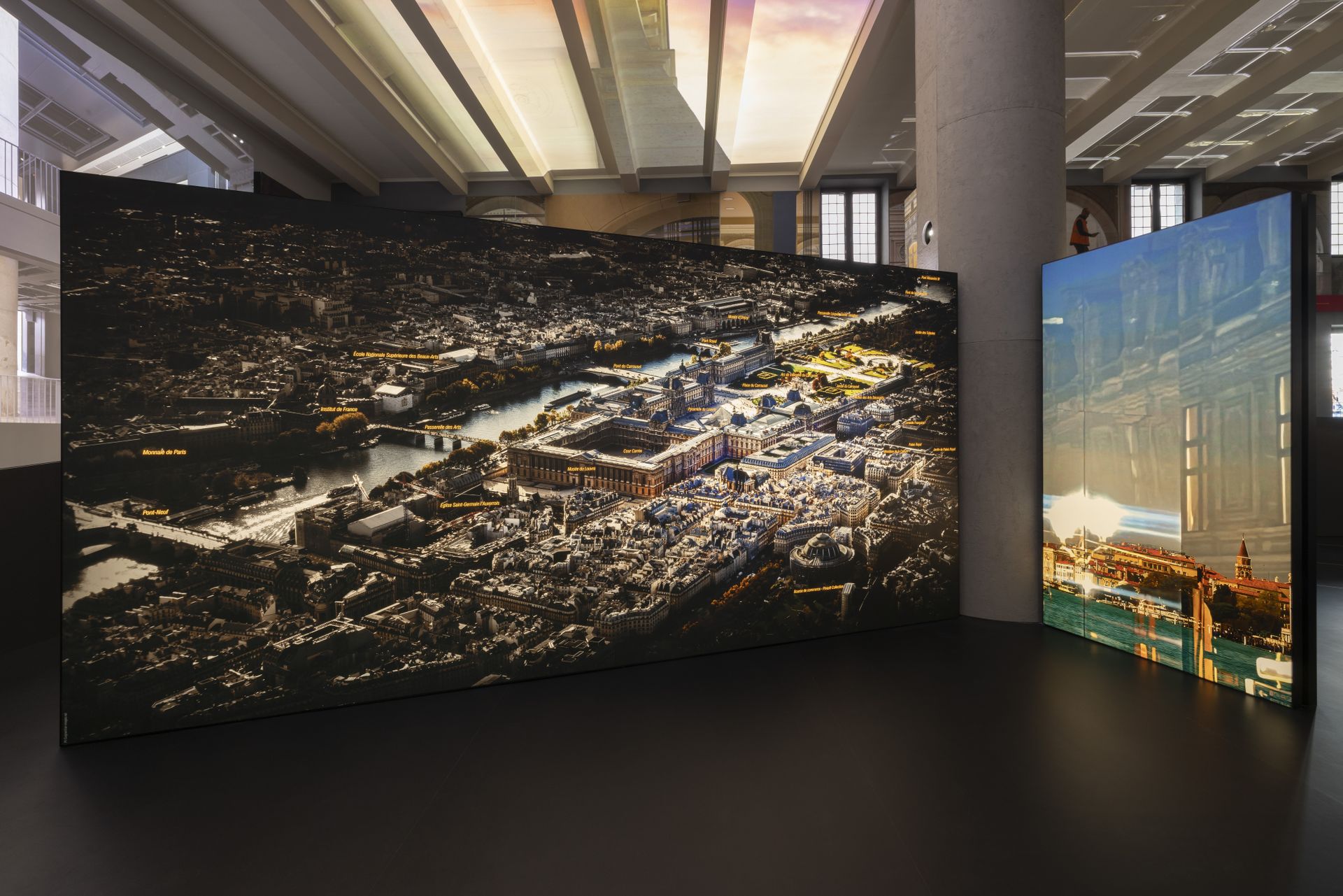
A new home for Fondation Cartier pour l’art contemporain by Jean Nouvel will open later this year in Paris. iThe Venice Architecture Biennale 2025 offered the perfect platform for a sneak preview of what's to come, allowing a sneak peek into the building at the 19th-century Place du Palais-Royal.
Holcim and Alejandro Aravena reveal sustainable housing unit
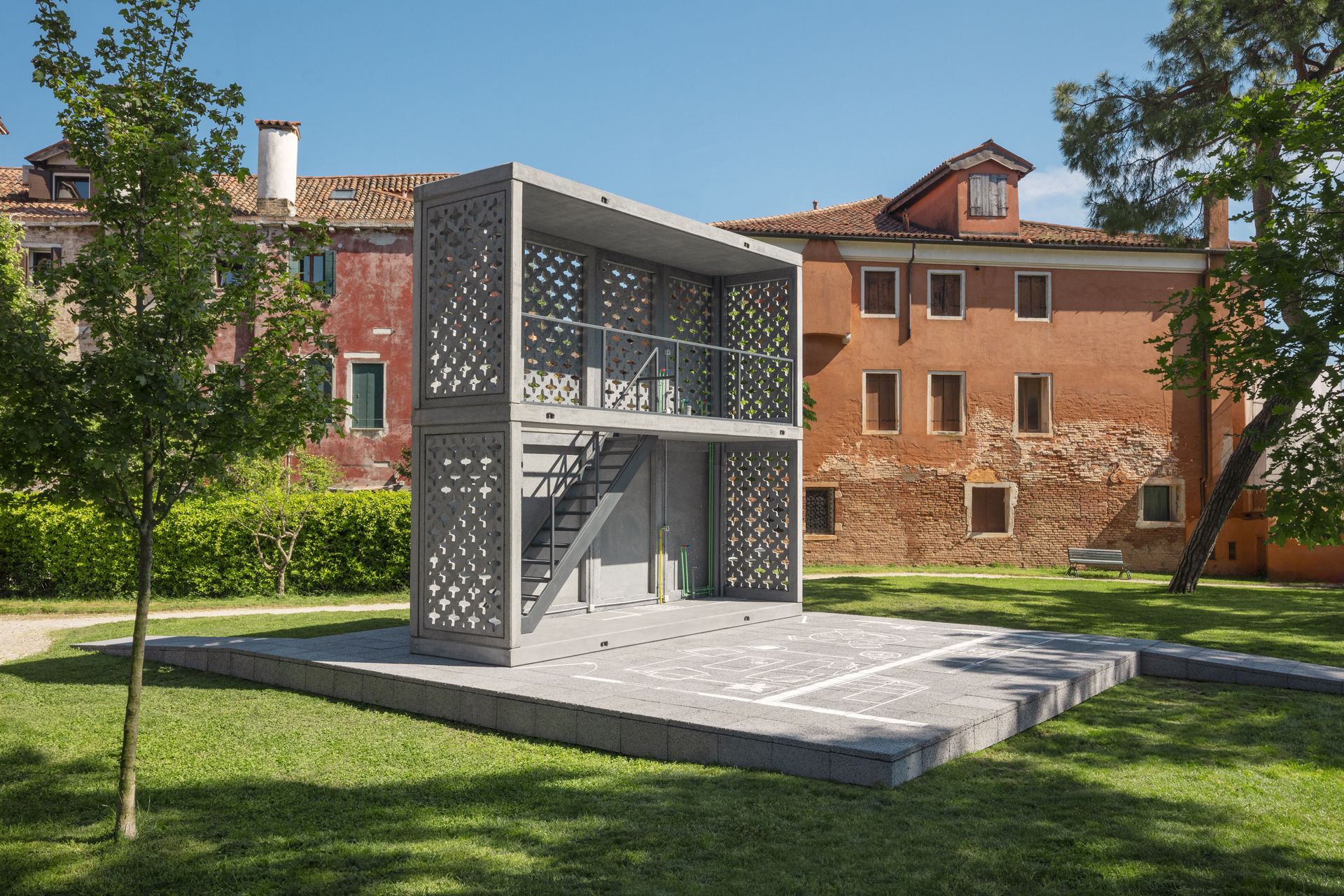
Exhibited at at Palazzo Mora in Venice, the Basic Services Unit, made wholly from biochar mixed with regular cement and recycled aggregates, is a net-zero structure that is as strong, durable and fire-resistant as a regular concrete building. It's a collaboration between construction company Holcim and the Chilean architect Alejandro Aravena.
Ocean Literacy Centre
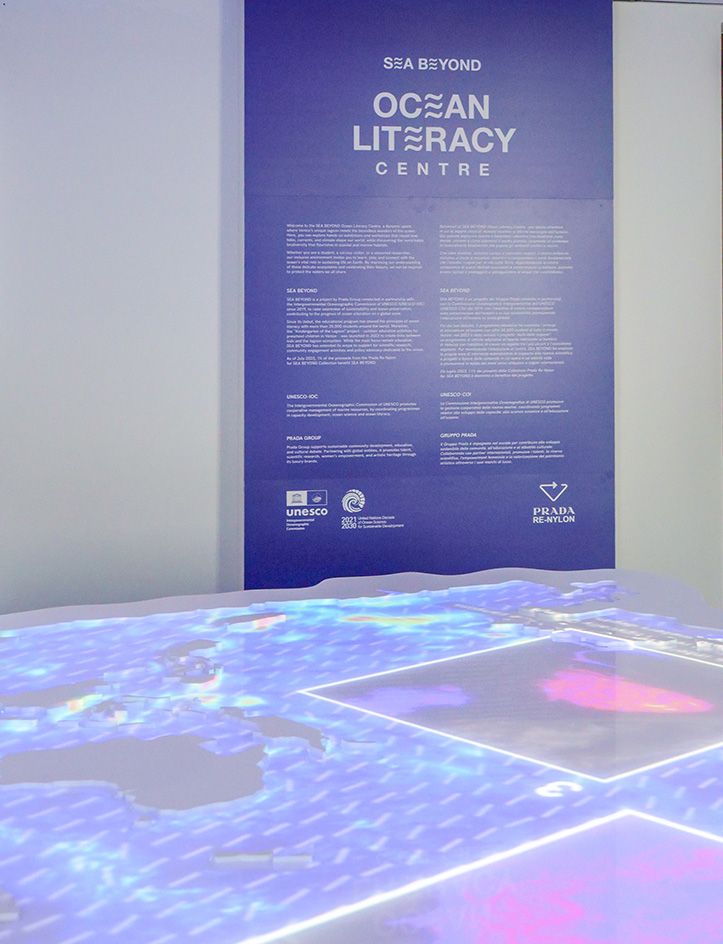
Part of curator Carlo Ratti's busy schedule this year was the launch of this new space for the Ocean Literacy Centre on San Servolo Island in Venice. Titled the 'Sea Beyond', the exhibit is a collaboration with UNESCO Intergovernmental Oceanographic Commission (IOC) and Prada Group inspired by Charles and Ray Eames' 1977 film 'Power of 10'. Here, Carlo Ratti Associatti explores data-driven displays and science to raise awareness on ocean health, preservation and sustainability.
The 2025 Venice Architecture Biennale will run 10 May till 23 November 2025
Ellie Stathaki is the Architecture & Environment Director at Wallpaper*. She trained as an architect at the Aristotle University of Thessaloniki in Greece and studied architectural history at the Bartlett in London. Now an established journalist, she has been a member of the Wallpaper* team since 2006, visiting buildings across the globe and interviewing leading architects such as Tadao Ando and Rem Koolhaas. Ellie has also taken part in judging panels, moderated events, curated shows and contributed in books, such as The Contemporary House (Thames & Hudson, 2018), Glenn Sestig Architecture Diary (2020) and House London (2022).
-
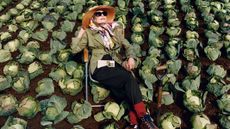 The best gardening fashion and accessories for the green-fingered
The best gardening fashion and accessories for the green-fingeredAs RHS Chelsea Flower Show 2025 opens to the public tomorrow, the Wallpaper* style team selects the best gardening-inspired fashion and accessories – from the functional to the fantastical
-
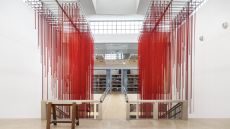 For its 24th edition, Triennale Milano's International Exhibition examines the theme of ‘Inequality’
For its 24th edition, Triennale Milano's International Exhibition examines the theme of ‘Inequality’The design institution shines a light on events such as the Grenfell disaster, climate crises and the Israel-Hamas war through architecture, art, products, technology and data
-
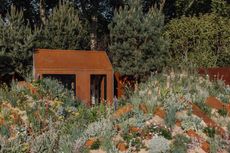 Innovative coastal garden turns heads at this year’s RHS Chelsea Flower Show
Innovative coastal garden turns heads at this year’s RHS Chelsea Flower ShowLandscape Designer Nigel Dunnett’s ‘Hospitalfield Arts Garden’ at Chelsea Flower Show 2025 has been making waves with its progressive approach to sustainable landscape and planting design
-
 What to see at the London Festival of Architecture 2025
What to see at the London Festival of Architecture 2025June is all about the London Festival of Architecture 2025; we browsed the over 450-event rich programme for its highlights, so you won't have to
-
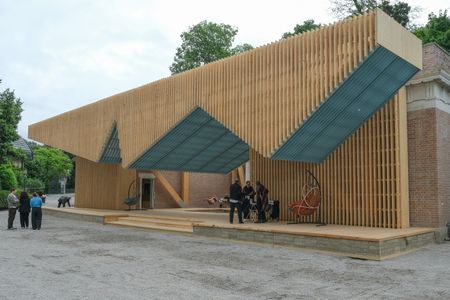 Want to be a Venice pavilion commissioner? Bring ideas – and your Rolodex
Want to be a Venice pavilion commissioner? Bring ideas – and your RolodexThe impressive showings of the USA's Venice pavilion in the Giardini belie the ambitious fundraising efforts that underpin them. Past and present curators tell us how it works
-
 A mesmerising edition of The Dalmore Luminary Series is unveiled in Venice
A mesmerising edition of The Dalmore Luminary Series is unveiled in VeniceThe Dalmore Luminary Series sculpture No.3 by Ben Dobbin of Foster + Partners, co-curated by V&A Dundee, launches in Venice during the 2025 Architecture Biennale
-
 A love letter to the panache and beauty of diagrams: OMA/AMO at the Prada Foundation in Venice
A love letter to the panache and beauty of diagrams: OMA/AMO at the Prada Foundation in Venice‘Diagrams’, an exhibition by AMO/OMA, celebrates the powerful visual communication of data as a valuable tool of investigation; we toured the newly opened show in Venice’s Prada Foundation
-
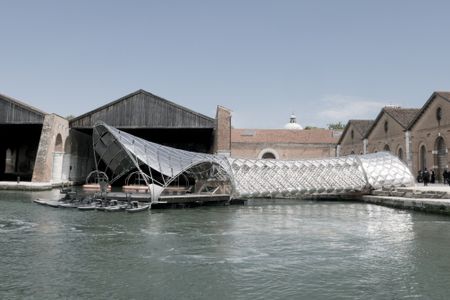 Norman Foster and Porsche reimagine movement at the 19th Venice Architecture Biennale
Norman Foster and Porsche reimagine movement at the 19th Venice Architecture BiennaleNorman Foster Foundation and Porsche collaborate on 'Gateway to Venice's Waterway', a flagship installation at the 19th global architecture biennale
-
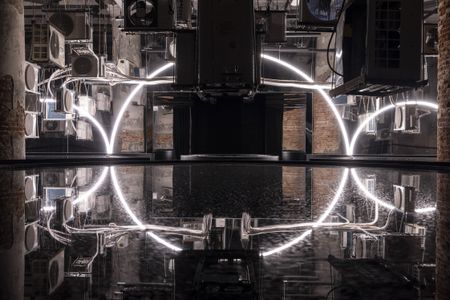 How was Carlo Ratti’s ‘Intelligens’? Wallpaper* editors discuss the 19th Venice Biennale
How was Carlo Ratti’s ‘Intelligens’? Wallpaper* editors discuss the 19th Venice BiennaleHaving visited ‘Intelligens’, the 19th Venice Biennale's main show by curator Carlo Ratti, the Wallpaper* editors discuss what they saw at the world's biggest global architecture festival
-
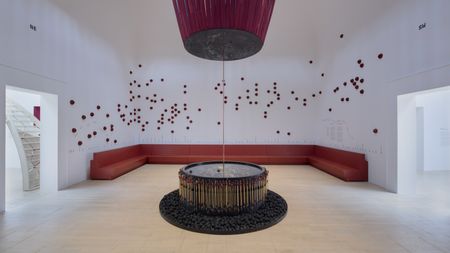 The 2025 British Pavilion in Venice offered up a Geology of Britannic Repair
The 2025 British Pavilion in Venice offered up a Geology of Britannic RepairThe 2025 British Pavilion in Venice is curated by an Anglo-Kenyan team of architects and designers; titled 'GBR: Geology of Britannic Repair', it explores the landscape of colonialism, its past, present and futures
-
 A Venice sneak peek into the new Fondation Cartier pour l’art contemporain by Jean Nouvel
A Venice sneak peek into the new Fondation Cartier pour l’art contemporain by Jean NouvelA new home for Fondation Cartier pour l’art contemporain by Jean Nouvel will open later this year in Paris; in the meantime, the Venice Architecture Biennale 2025 offered the perfect platform for a sneak preview of what's to come